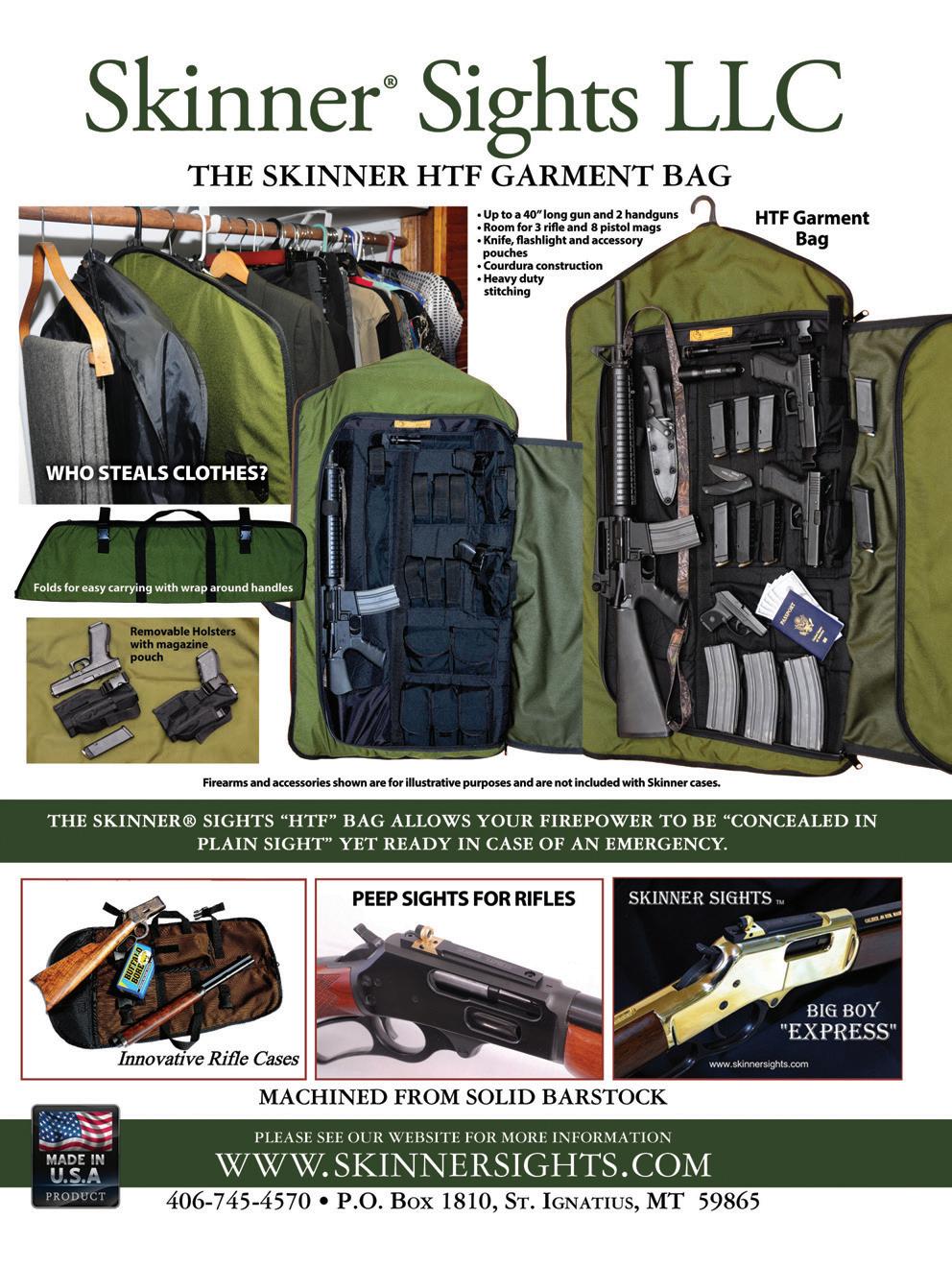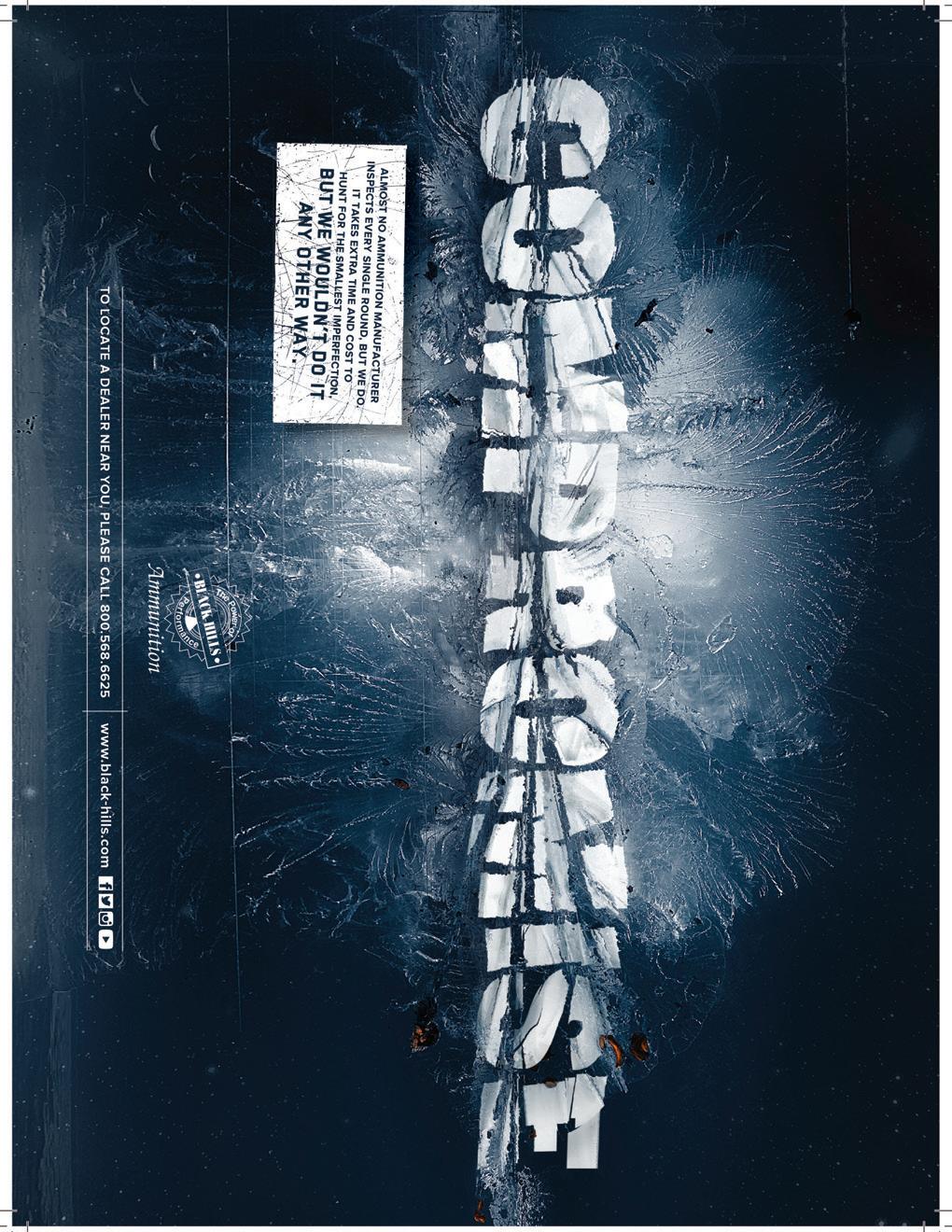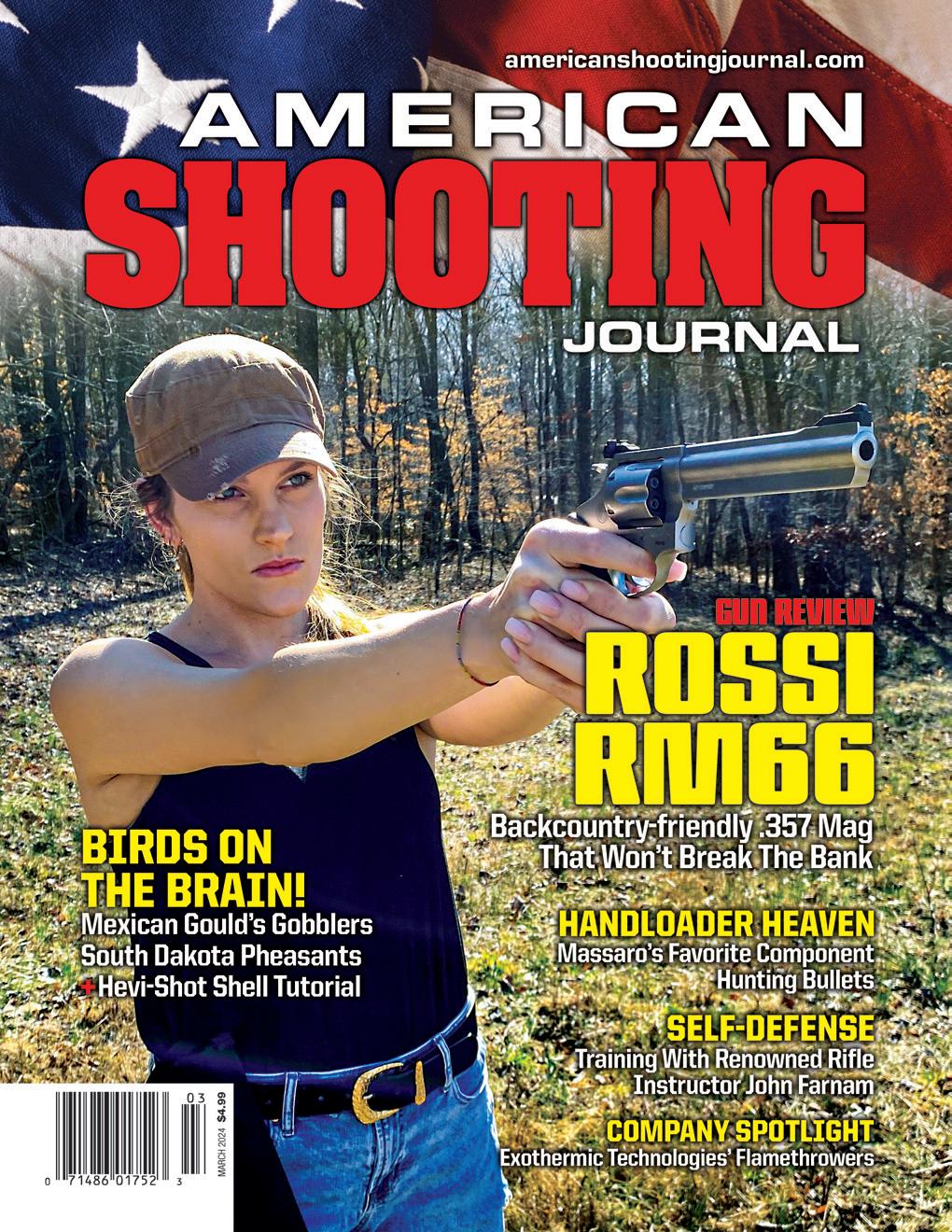
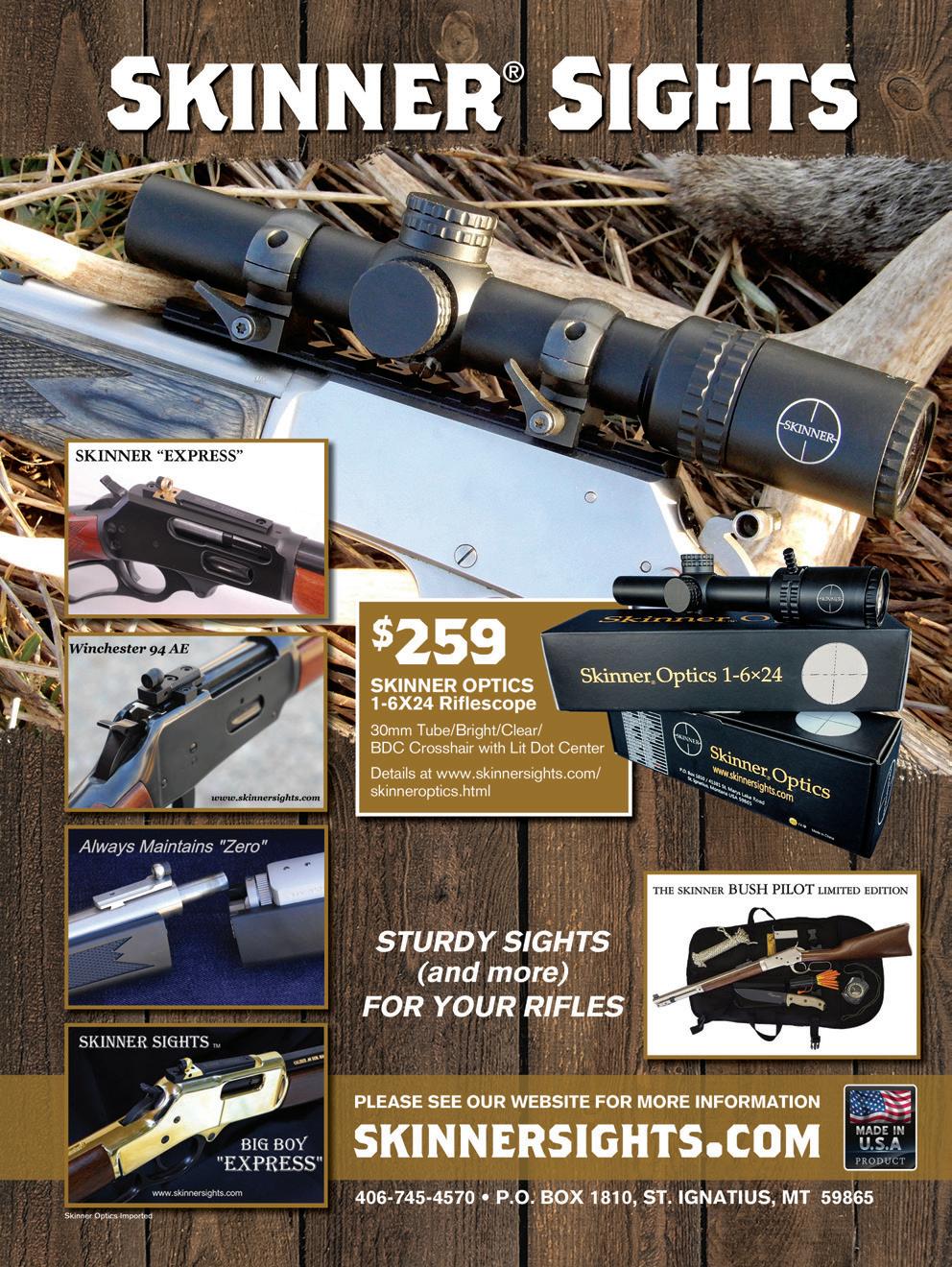
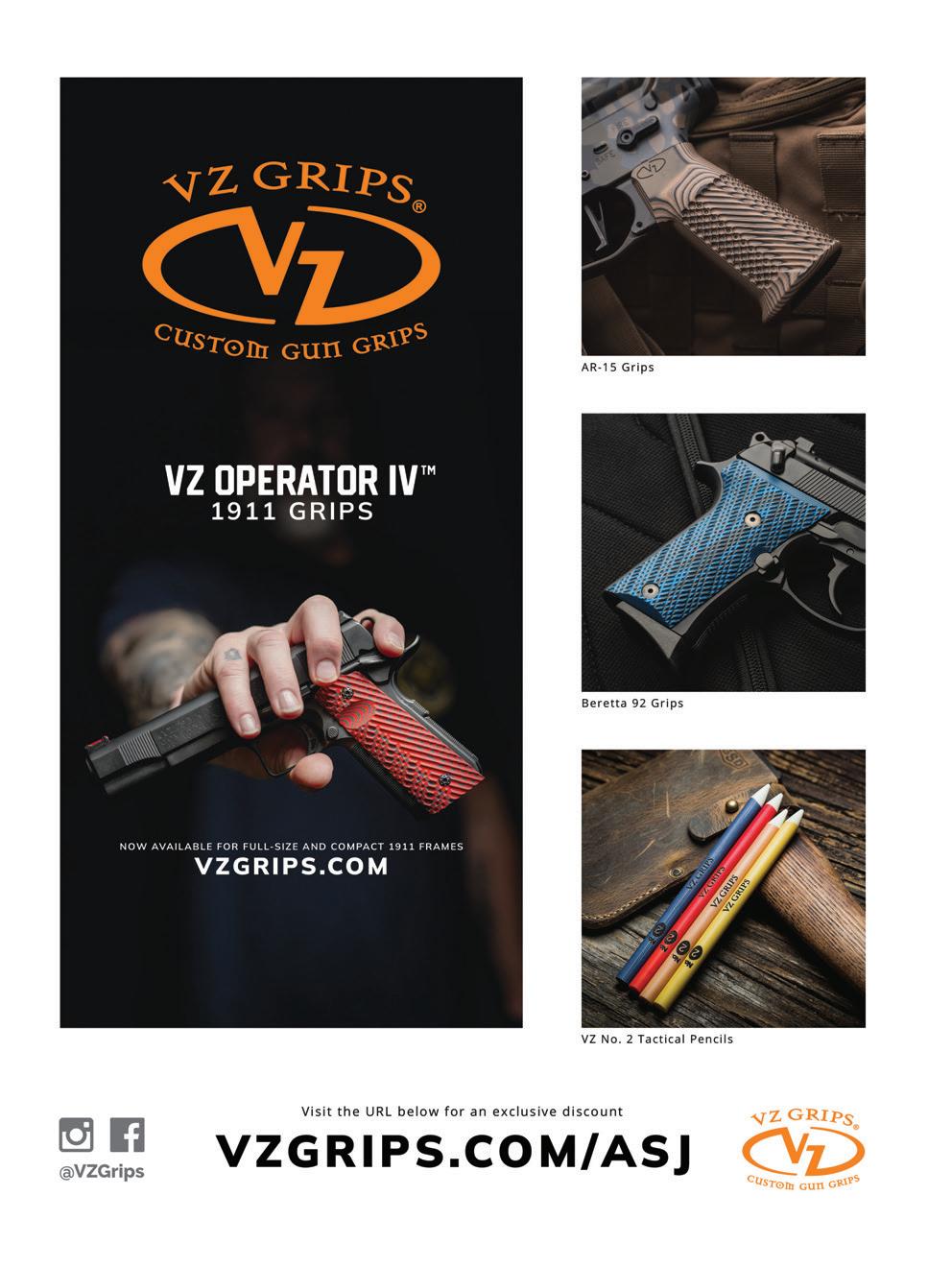
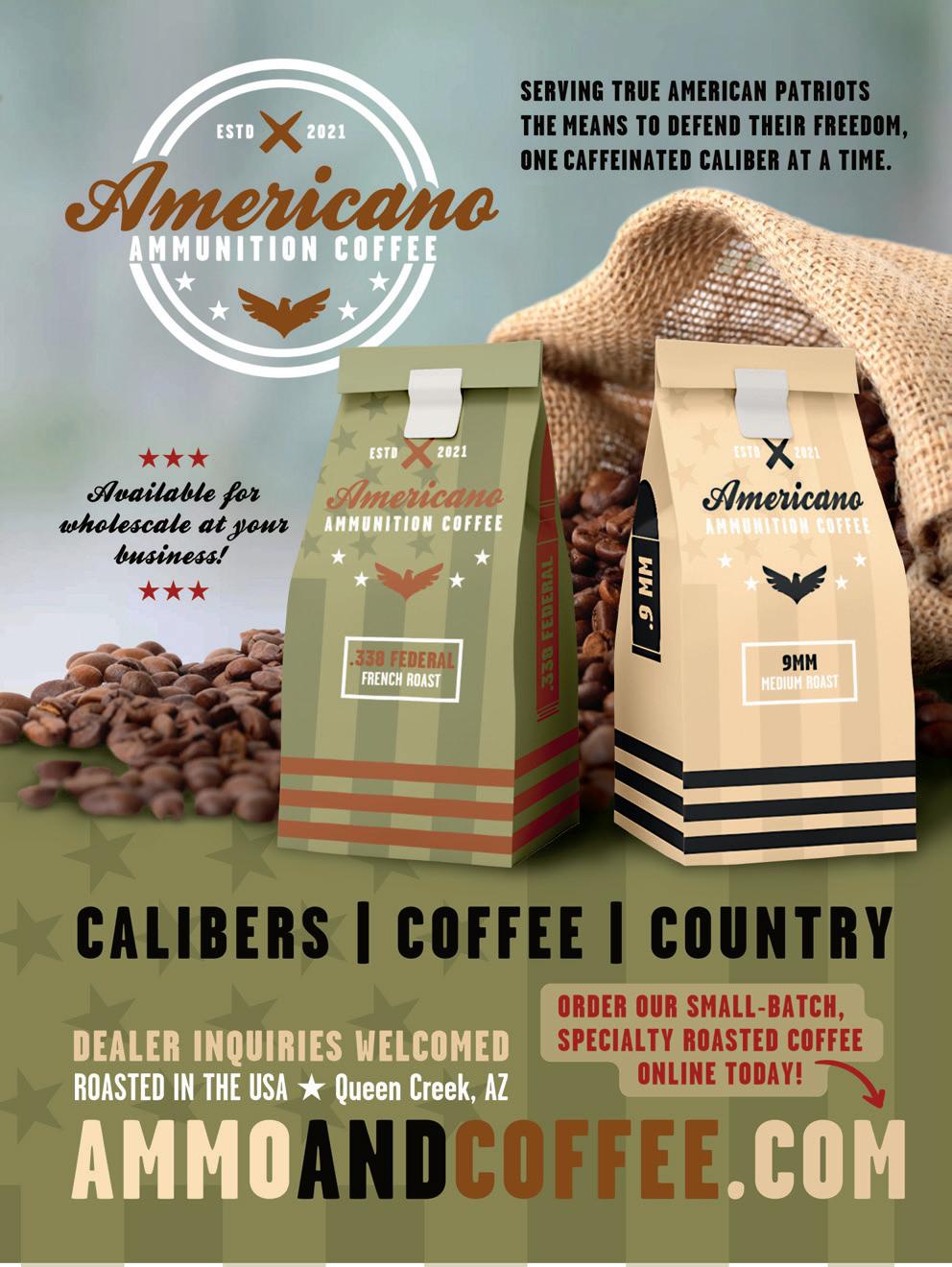

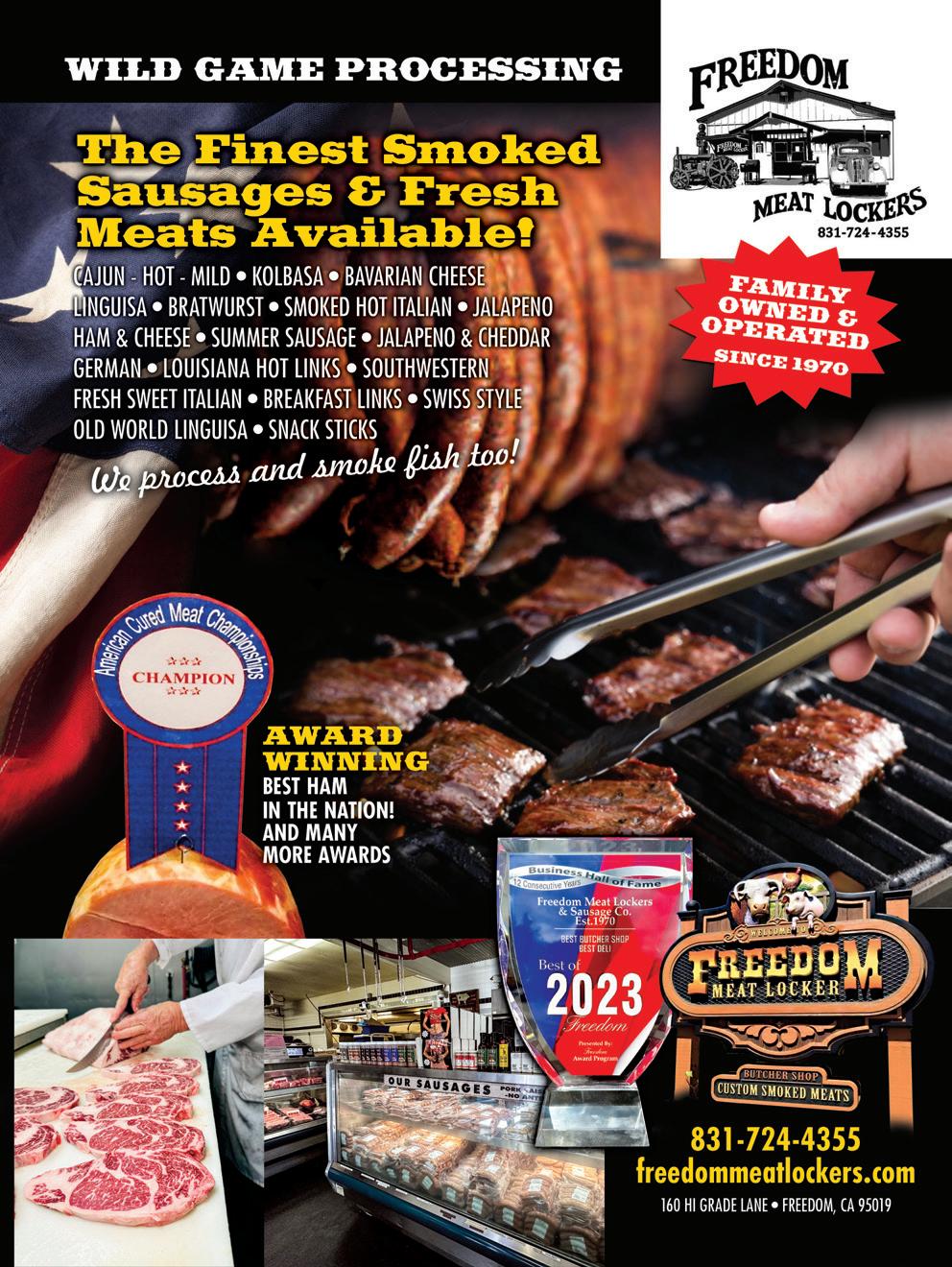


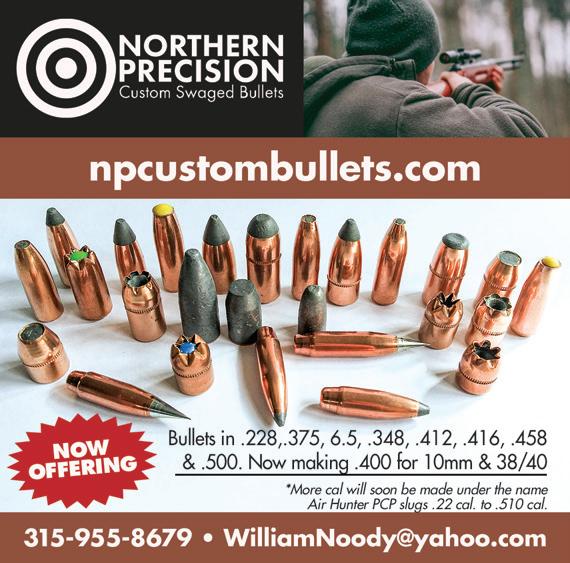
PUBLISHER
James R. Baker
GENERAL MANAGER
John Rusnak
EDITOR-IN-CHIEF
Andy Walgamott
OFFICE MANAGER / COPY EDITOR
Katie Aumann
LEAD CONTRIBUTOR
Frank Jardim
CONTRIBUTORS
Brittany Boddington, Larry Case, Scott Haugen, Phil Massaro, Mike Nesbitt, Paul Pawela, Nick Perna
SALES MANAGER
Paul Yarnold
ACCOUNT EXECUTIVE
Tom St. Clair
DESIGNERS
Gabrielle Pangilinan, Lesley-Anne Slisko-Cooper
PRODUCTION ASSISTANT
Emily Baker
WEBMASTER / INBOUND MARKETING
Jon Hines
INFORMATION SERVICES MANAGER
Lois Sanborn
ADVERTISING INQUIRIES
Rossi’s



8 American Shooting Journal // March 2024
ads@americanshootingjournal.com SHOOTING JOURNAL AMERICAN MEDIA INDEX PUBLISHING GROUP 941 Powell Ave SW, Suite 120, Renton, WA 98057 (206) 382-9220 • (800) 332-1736 • Fax (206) 382-9437 media@media-inc.com • www.media-inc.com
Facebook: Facebook.com/AmericanShootingJournal X: @AmShootingJourn Volume 13 // Issue 6 // March 2024 ON THE COVER
Website: AmericanShootingJournal.com
RM66 is a stainless steel, six-shot .357 Magnum with a full underlug barrel, excellent rubber stocks and just enough grip area to hold onto under recoil, all at a reasonable price. Frank Jardim reviews this revolver that just might find a place on your next backcountry trip. (FRANK JARDIM)



GUN REVIEW: ROSSI RM66 .357 MAGNUM REVOLVER
If you’re in the market for a new six-shooter that’s relatively light, lends itself to backcountry protection and won’t break the bank, our lead contributor Frank Jardim put a couple hundred rounds through this powerful 34.5-ounce, 6-inch-barreled Rossi and shares his thoughts.
29 SELF-DEFENSE TRAINING: EVEN EXPERT TRAINERS CAN LEARN FROM EXPERT TRAINERS
Paul Pawela and renowned defensive shooting instructor John Farnam go a long way back, and while Pawela has since made a name for himself in the self-defense field, he still found himself learning things during a recent two-day rifle course with the master.
37 SHE HUNTS: SNOW BIRDS
In winter, some folks flock to warmer climes, but Brittany Boddington and graduates from her She Hunts Skills Camp found themselves going on a reverse migration – to South Dakota for wild pheasant hunting fun! How did they fare in the frigid, snowy conditions?
47 ROAD HUNTER: GOING FOR GOULD’S
The pinnacle of turkey hunting is the world slam – bagging a tom from each of the six North American subspecies – and that’s what Scott Haugen and two buddies set out to wrap up in the mountains of Sonora, Mexico. Join the fellas on the hunt for these stunning and super-wary gobblers.
54 SCATTERGUN ALLEY: GETTING A HANDLE ON HEVI-SHOT
With an eye on loads for spring turkey season, Larry Case has the lowdown on this Oregon nontoxic shotshell company’s steel, bismuth and tungsten pellets, the myriad offerings they make and figuring out which to use for what birds.
63 BULLE T BULLETIN: MEET SOME OF MY FAVORITE COMPONENT HUNTING BULLETS
For a hunter, the fruits of success aren’t just a full freezer when the game also falls to your own handloads. Phil Massaro has turned out a few over the years and sings the praises of projectiles that have helped keep his family fed.
77 L AW ENFORCEMENT SPOTLIGHT: ALL IN A DAY’S WORK
Herding sea lions probably isn’t listed on most cop job openings, but it comes with the territory in Alaska! Nick Perna shares how officers in a seaside town and a local with a backhoe teamed to get a wayward marine mammal home.
americanshootingjournal.com 11
FEATURES CONTENTS AMERICAN SHOOTING JOURNAL is published monthly by Media Index Publishing Group, 941 Powell Ave SW, Suite 120, Renton, WA 98057. Display Advertising. Call Media Index Publishing Group for a current rate card. Discounts for frequency advertising. All submitted materials become the property of Media Index Publishing Group and will not be returned. Copyright © 2024 Media Index Publishing Group. All Rights Reserved. No part of this publication may be copied by any means, electronic or mechanical, including photocopying or recording by any information storage or retrieval system, without the express written permission of the publisher. Printed in U.S.A. VOLUME 13 • ISSUE 6 18 COVER STORY
(FRANK JARDIM)
CONTENTS
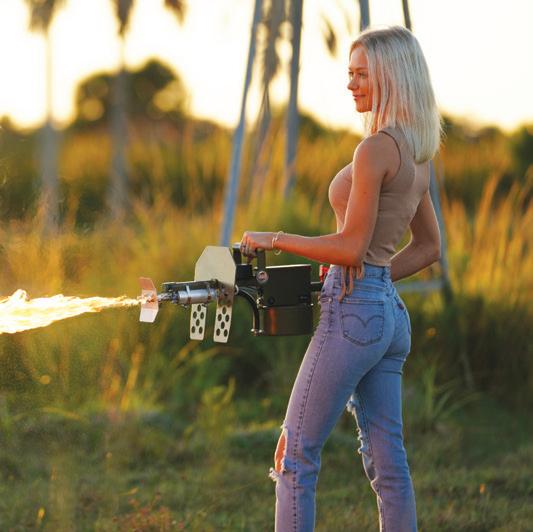
79
also inside
79 COMPANY SPOTLIGHT: EXOTHERMIC TECHNOLOGIES
With sales spreading like, er, wildfire, we check in with Exothermic Technologies’ cofounder Chris Byars on the company’s long-range handheld flamethrowers that provide fire where and when you need it.
83 BL ACK POWDER: TRYING FOR A ‘10’ ON THE TRAIL
It’s one of the more difficult shooting competitions at a Washington state black powder club’s annual winter Buffalo Camp, but also one of its funnest. Mike Nesbitt takes us down the 10-shot Revolver Match trail, which has only been aced once.
DEPARTMENTS
15 Gun Show Calendar
17 Competition Calendar

12 American Shooting Journal // March 2024
(EXOTHERMIC TECHNOLOGIES)
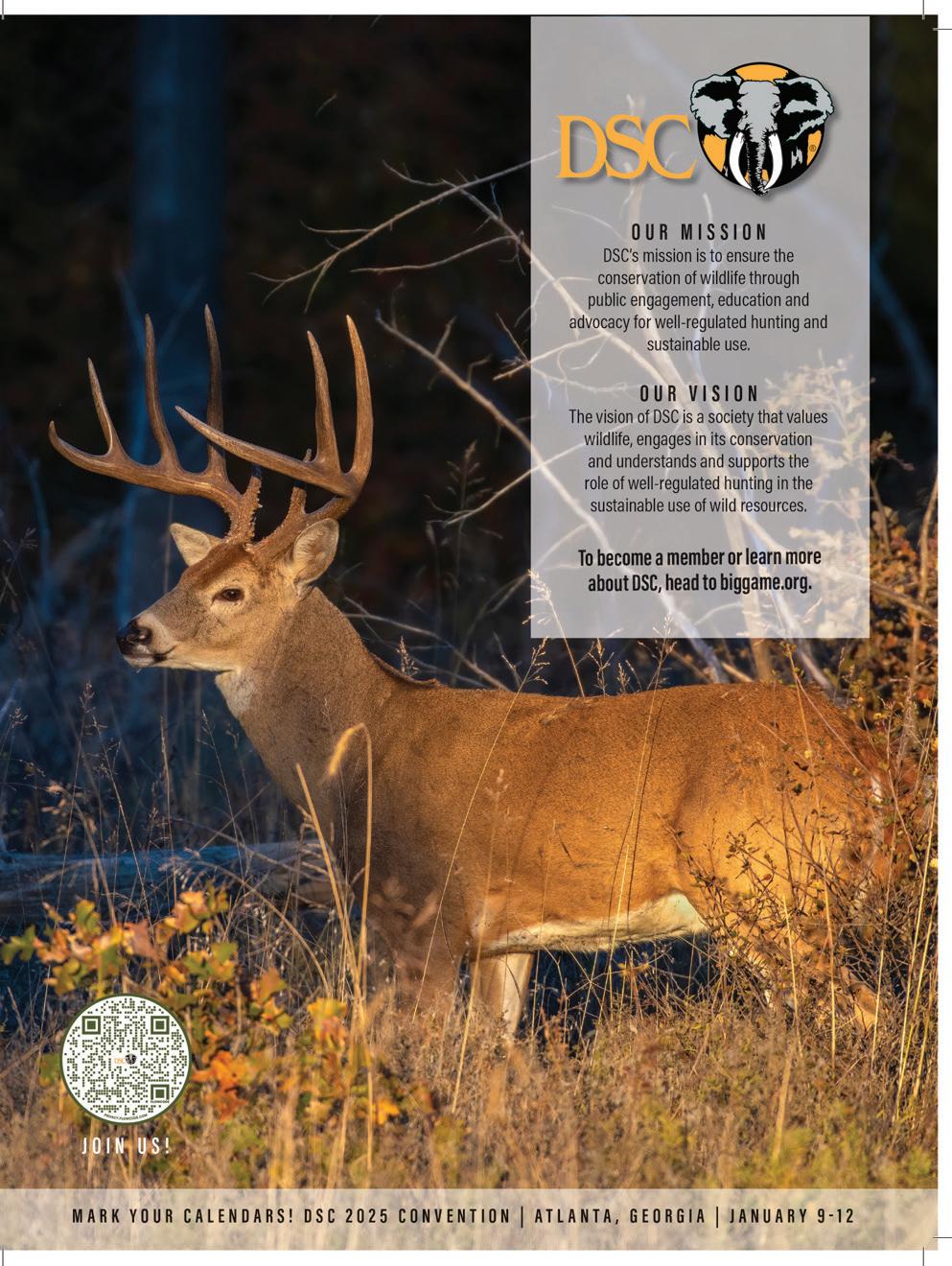



14 American Shooting Journal // March 2024 BRASS MASTER ULTRA VIBE CASE CLEANERS THUMLER’S TUMBLER Made of durable steel construction - heavyduty, sealed ball bearing motors - thermally protected - fast, quiet operation - 3/4 to 4 3/4 gallon capacity - industrial and rotary models available. Send for our free brochure! TRU-SQUARE METAL PRODUCTS, INC. P.O. Box 585, Auburn, Washington 98071 TEL (253) 833-2310 or Toll Free 1-(800) 225-1017 www.thumlerstumbler.com t-tumbler@thumlerstumbler.com “Manufacturers of quality case cleaners, deburring and tumbling equipment since 1959”
C&E Gun Shows cegunshows.com

GUN SHOW CALENDAR
March 9-10
March 16-17
Crossroads Of The West Gun Shows crossroadsgunshows.com
Florida Gun Shows floridagunshows.com
G&S Promotions gunshowtrader.com
Hernando Sportsman’s Club hernandosportsmansclub.com
Salem, Va. Salem Civic Center
Hamilton, Ohio Butler County Fairgrounds
March 16-17 Raleigh, N.C. NC State Fairgrounds
March 23-24 Harrisburg, Pa. PA Farm Show Complex
March 23-24 Winston-Salem, N.C. Winston-Salem Fairgrounds
April 6-7 Fayetteville, N.C. Crown Expo Center
March 9-10 Elko, Nev. Elko Conference Center
March 9-10 Ontario, Calif. Ontario Convention Center
March 16-17 Mesa, Ariz. Centennial Hall
March 23-24 Prescott, Ariz. Findlay Toyota Center
March 30-31 Costa Mesa, Calif. OC Fair & Event Center
March 9-10 Palmetto, Fla. Bradenton Convention Center
March 16-17 Orlando, Fla. Central Florida Fair Grounds
April 6-7 Fort Myers, Fla. Lee Civic Center
April 20-21 Tampa, Fla. Florida State Fairgrounds
April 27-28 Miami, Fla. Miami-Dade Fairgrounds
March 8-10 Canton, Texas Canton Civic Center
March 23-24 Conway, Ark. Conway Expo Fairgrounds
April 6-7 Mountain Home, Ark. Baxter County Fairgrounds
April 6-7 Brooksville, Fla. Hernando Sportsman’s Club Range
March 9-10 Jefferson, Ga. Jackson County Agricultural Facility
March
March 16-17
Real Texas Gun Shows therealtexasgunshow.com
Tanner
March
April
March
To have your event highlighted here, send an email to kaumann@media-inc.com.
americanshootingjournal.com 15
PRIMER
9-10 Somerset, Ky. The Center for Rural Development
March 15-17 Neosho, Mo. Newton County Fairgrounds
Owensboro,
Ky. Owensboro Sportscenter
Kansas
Chattanooga,
Shrine
March 23-24
City, Mo. KCI Expo Center March 23-24
Tenn. Alhambra
Grovetown,
Murfreesboro,
April 6-7
Ga. Columbia County Exhibition Center April 13-14
Tenn. Mid-TN Expo Center
9-10 Taylor, Texas Williamson County Expo Center
March 23-24 Gonzales, Texas J.B. Wells Arena
27-28 Belton, Texas Bell County Expo Center
Crowne
8-10 Denver, Colo.
Plaza
Colorado
Norris
Aurora, Colo. Arapahoe
March 29-31
Springs, Colo.
Penrose Event Center April 19-21
County Fairgrounds
Centralia, Wash. Southwest Washington Fairgrounds
20-21 Redmond, Ore. Deschutes County Expo Center
27-28 Centralia, Wash. Southwest Washington Fairgrounds
March 16-17
April
April
Gun Shows tannergunshow.com
Gun
Wes Knodel
Shows wesknodelgunshows.com RK Shows rkshows.com


PRIMER
COMPETITION CALENDAR
March 11-17

usashooting.org
Shotgun Olympic Selection Part 2 Tucson, Ariz.
March 17-19
Smallbore Rifle/Pistol Olympic Selection Part 3 Fort Moore, Ga.

uspsa.org

gssfonline.com
March 21-24
South Carolina Section Championship Belton, S.C.
April 10-14
IPSC Nationals Mesa, Ariz.
March 8-10
River Bend Ballistic Challenge Dawsonville, Ga.
March 9-10
Glock, Stock and Barrel Challenge Newhall, Calif.

cmsaevents.com
March 8-9
Southeast Regional Championship Perry, Ga.
March 8-10
Lazy E Classic Guthrie, Okla.

idpa.com
March 7-9
South Florida Defensive Challenge Homestead, Fla.
April 1-11
USA Shooting National Junior Olympic Rifle Championship Colorado Springs, Colo.
April 19-21
12th Annual Gary “Doc” Welt Memorial Match Pinellas Park, Fla.
April 26-28
Delmarva Section Championship Hedgesville, W.V.
March 16-17
Northern California Glock Challenge Davis, Calif.
March 23-24
Extreme Tactical Glock Shootout Waxahachie, Texas
March 15-17
Mardi Gras Blast Sulphur, La.
April 5-7
AZ State Championship Queen Creek, Ariz.
April 11-18
USA Shooting National Junior Olympic Pistol Championship Colorado Springs, Colo.
April 21-28
Paralympic Trials Part 3 Anniston, Ala.
April 26-28
Texas State Open Championship Wallis, Texas
March 23-24
NW Indiana Regional Glock Shoot Chesterton, Ind.
April 6-7
Delaware State GSSF Challenge Bridgeville, Del.
April 10-13
CMSA Extravaganza Shelbyville, Tenn.
March 22-23
IDPA Red River Roundup Paris, Texas
To have your event highlighted here, send an email to kaumann@media-inc.com.
April 11-14
Rollin’ on the River IDPA Championship Valdosta, Ga.
americanshootingjournal.com 17

ROSSI RM66
.357 MAGNUM REVOLVER: QUALITY AT A VALUE PRICE
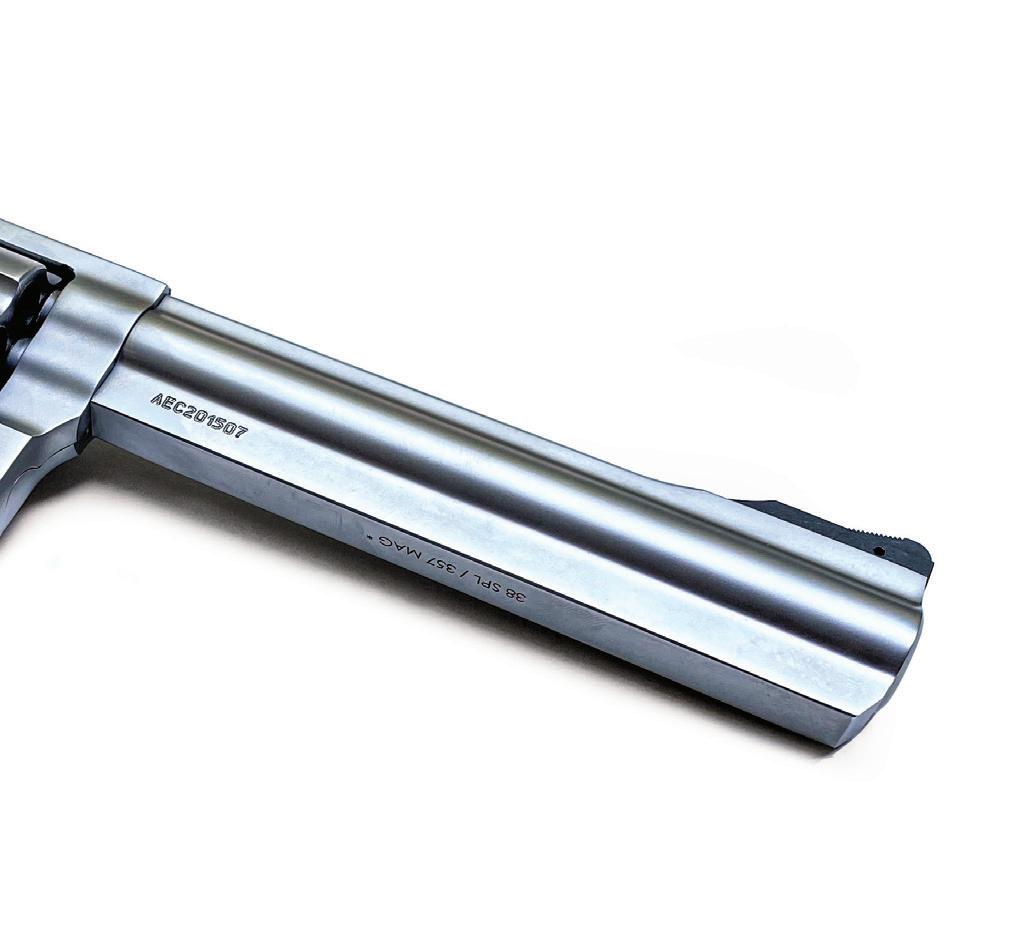
Relatively light, this new six-shooter lends itself to backcountry protection and more.
FRANK JARDIM
Understanding your practical limitations allows you to make better, more informed decisions when you select the gear your life may depend on in the backcountry. When you are on foot in the wilderness, you come to grips with the fact that you can only carry so much gear. It doesn’t matter how lightweight, compact, highly efficient, long-range, etc., the desired object is once you reach the maximum load your body can transport. You have to leave it behind, or else you’ll end up discarding it on the way. For protection from man and beast afield, or beastly people anywhere, the new Rossi stainless steel .357 Magnum revolvers deserve serious consideration.
After a few years out of production, Taurus USA reintroduced the valuepriced Rossi line with three new models: the 6-inch-barrel RM66, 4-inch-barrel RM64 and 3-inch-barrel PS63.
Despite being a very small-framed
.357 Magnum, my hand was no worse for the wear after 200 rounds of rapidfire double-action shooting. I got no stings of pain, no tingles and no sore trigger finger. My target reacquisition time between shots was faster than expected too. Most significantly, I found the double-action trigger pull felt as good as those on my vintage pre-war Smith & Wesson revolvers.
On the 6-inch-barreled RM66 I tested, the extra weight of the full underlug barrel up front really helped reduce recoil and muzzle flip. Like all the new Rossi USA revolvers, the RM66 has a wide, smooth trigger that distributes the pressure of your fingertip over a larger surface area, making the double-action pull feel softer and lighter than the 11.5 pounds it actually is. By weight alone, that is a pretty light doubleaction revolver trigger. These guns all come with Pachmayr-like soft rubber
grips with sculpted finger grooves on the front and molded-in checkering and speed loader clearance. They taper to a rounded butt, fill the hand and protect the index finger from getting bruised by the back of the triggerguard. There’s no need to upgrade this grip for control and recoil management.
I THINK THE RM66 is ideally suited for protection in the backcountry for several reasons. First, it is unusually small and light for a .357 Magnum, but not an ordeal to shoot. You’ll notice the triggerguard shape is similar to that found on a little snubnose J-frame S&W revolver. In fact, the Rossi frame is only slightly larger, mostly in height to accommodate a six-shot cylinder and in the front portion of the frame where the barrel mounts. You really
americanshootingjournal.com 19
STORY AND PHOTOS BY
Rossi’s RM66 is a stainless steel, six-shot .357 Magnum with a full underlug barrel, excellent rubber stocks and just enough grip area to hold onto under recoil, all at a reasonable price.
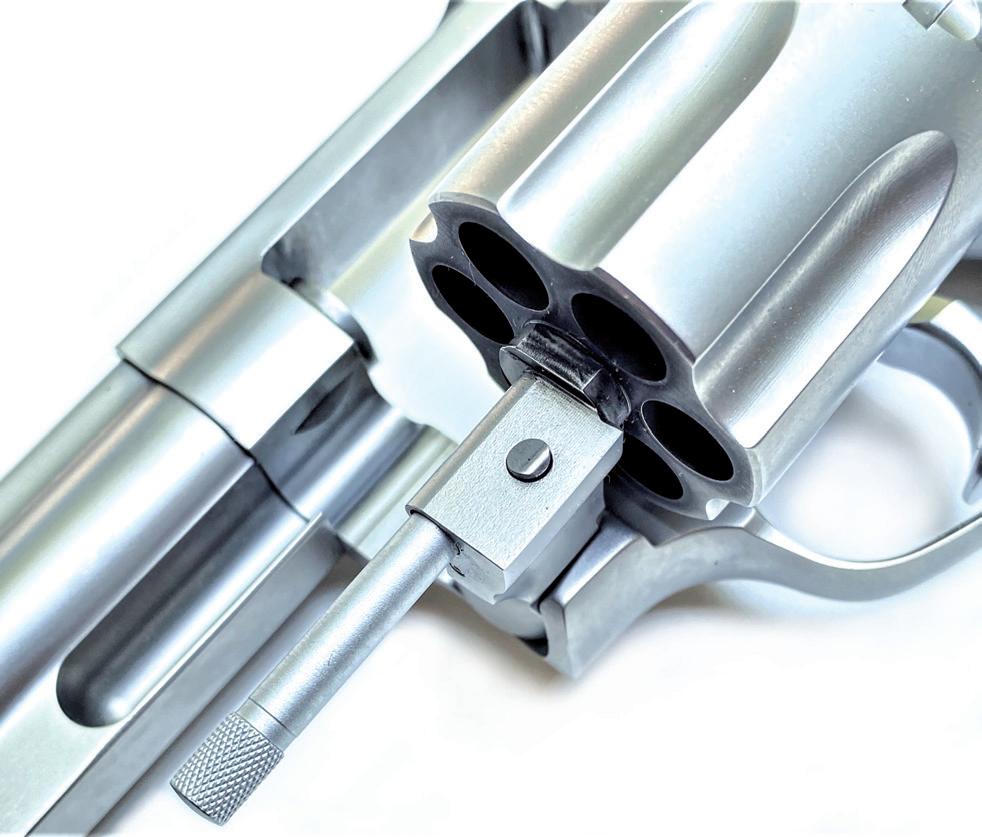

Inexpensive, but not cheap. Rather than mill the front sight ramp out of a bigger piece of barrel steel, the RM66 uses a separate screw-on ramp. The functionality remains, but with lower materials and machining costs.
notice how small and thin the RM66 is when you compare it to a S&W K-frame. The 6-inch-barrel RM66 weighs 34.5 ounces. My 4-inch heavybarrel K-frame S&W Model 65 .357 Magnum weighs 33.9 ounces, only 0.6 ounce less! Rossi built these powerful guns to be light and compact, and that’s just what you want your gear to be when you’re packing it all on foot.
From a design standpoint, I was glad that the new Rossi revolvers returned to a traditional fixed firing pin mounted on the hammer and eschewed an additional key-operated safety lock. Fewer parts equates to better reliability in this case. The hammer-mounted firing pin transfers more of its energy to detonate hard
primers than transfer bar designs.
While not a first choice for hunting or protection against predators, a .357 Magnum is no slouch at close ranges and represents a reasonable middle ground between size, weight and power. The 6-inch barrel is a fair compromise between manageable length and ballistic potential. You won’t get the velocity you would in a carbine, but compared to a 2- or 4-inch barrel, the 6-inch tube does give the powder more burn time in the barrel, where it can drive the bullet faster instead of being wasted in a visually dramatic fireball as the bullet leaves the muzzle.
Made of rust-resistant stainless steel and fitted with rubber grips, the
20 American Shooting Journal // March 2024
The RM66 has a short, strong, solid ejector rod, and a detent lock to hold the crane in the frame. On the surface, it seems more rugged than Smith & Wesson’s nearly 125-year-old ejectorrod-locking design, if not quite as secure.
Note the similarity to the square-butt grip frame used on the S&W Kit Gun. It appears S&W-size wood grips may fit, with a little modification.
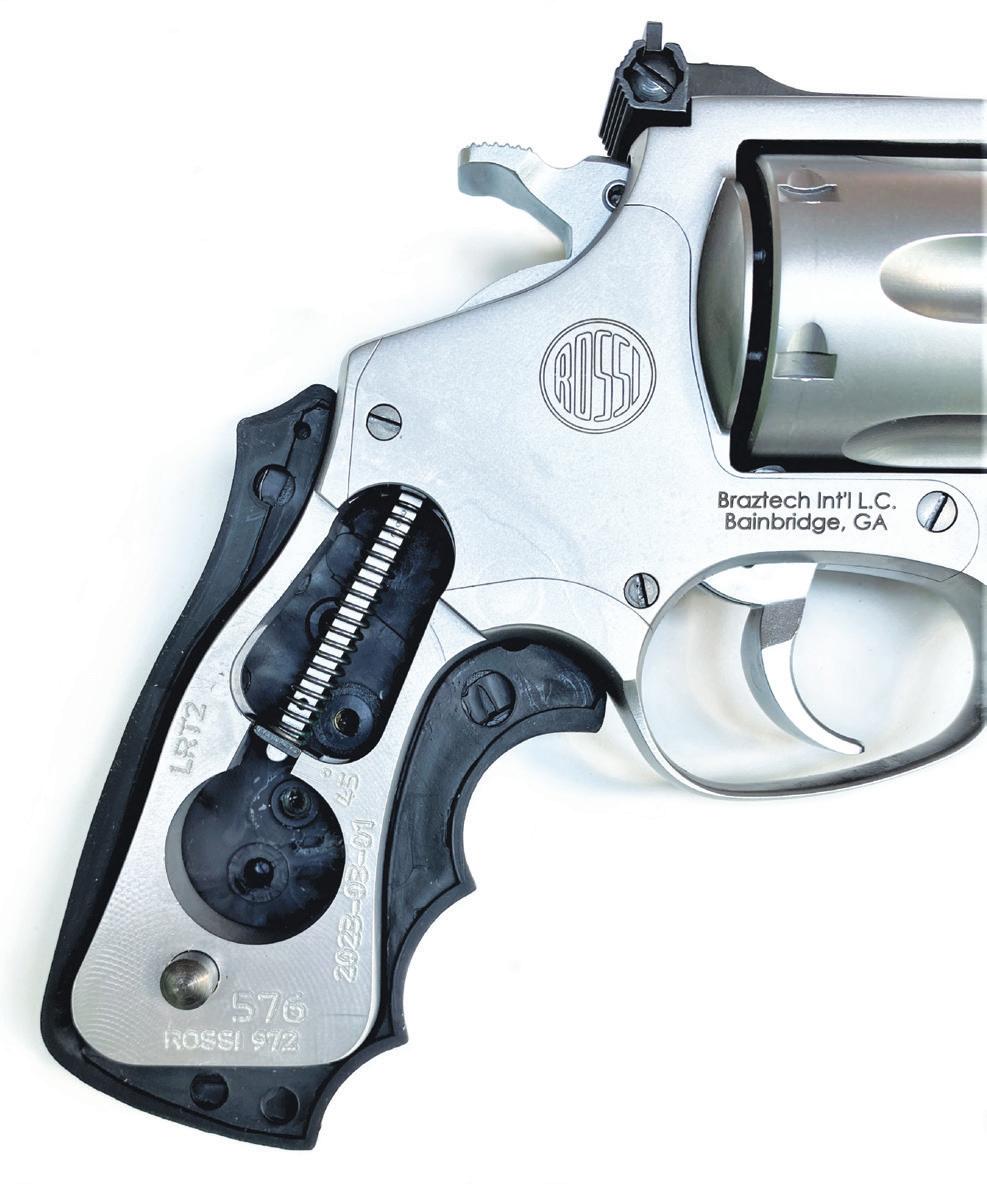
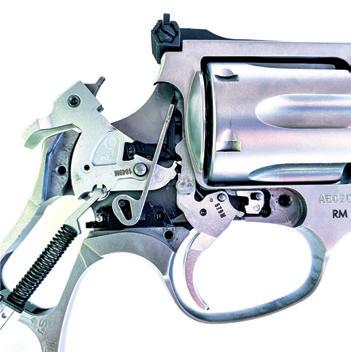
americanshootingjournal.com 21
Inside, the RM66 looks the part of a traditional S&W revolver – with the exception of the strut and coil mainspring. The double-action and single-action trigger pulls are hard to top in a production revolver. Note the reliable hammermounted firing pin.

RM66 is about as weatherproof as a revolver can be, so it will be easier to maintain when your travels take you through rain and snow.
Equipped with adjustable target sights (white outline rear and removable square, ramped front post), you can correct the point of impact for whatever your preferred load is. The revolver is also gratifyingly accurate. Shooting five-shot groups from the bench at 25 yards, Black Hills Ammunition’s 158-grain JHP averaged 2.3 inches with an average velocity of 1,206 feet per second. Federal Premium 130-grain HydraShok JHP averaged 1.7 inches with a smoking average velocity of 1,553 fps. That’s the load I’d pick for defense against dangerous animals and humans. Winchester 110-grain JHP averaged 4.0 inches with an average velocity of 1,327 fps. The Rossi had a nice, crisp single-action trigger pull weighing in at 4.25 pounds.
WHILE COMPACT, POWERFUL,
accurate, weather-resistant and a great value, the new Rossis do have their limitations. These guns aren’t a good choice if you plan to shoot lots of .357 Magnum ammunition. Remember, they are essentially slightly enlarged six-shot J-frames, closer to the Colt D-frame Detective Special than a S&W K-frame. The S&W K-frame is much more heavily made, and they were never intended for a steady diet of full-power .357 Magnum cartridges. If you want to do that, you need a revolver with a big frame comparable to the heavy L- and N-frame S&W revolvers. The new Rossis, like the S&W K-frames before them, are designed for shooting a lot of .38 Special in practice and a little .357 Magnum when there’s trouble that warrants it.
I should also point out that while the finish of the RM66 is rather nice and comparable to brands costing much more, the cylinder lockup was noticeably less tight. This wasn’t due to any movement between the crane and the frame. They are actually held together with a detent lock when closed. The rotational play in the cylinder appears to be related to the
22 American Shooting Journal // March 2024
At 34.5 ounces, the RM66 is as small and light as a 6-inch-barreled .357 Magnum can be. A S&W N-frame Model 27 weighs 10 ounces more. For field use, a lightweight, fast-drying, nylon Uncle Mike’s Kodra Sidekick hip holster with an adjustable snap-closure retention strap ($20) is a perfect match.

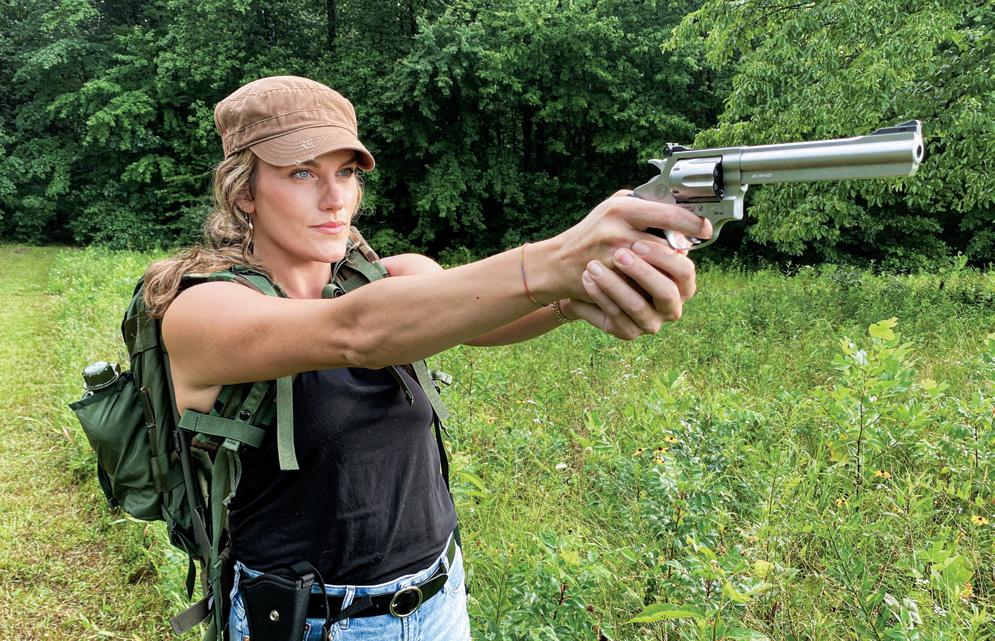
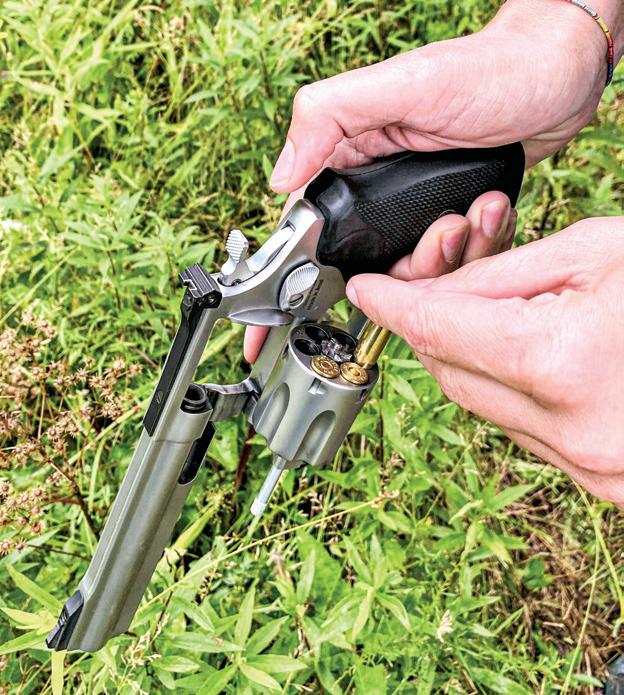
fit and stability of the bolt in its frame slot rather than the cylinder stop slots. Minimizing rotational play in the cylinder requires maintaining tight tolerances and/or carefully mating the parts to each other. Precision is expensive, as is hand gunsmithing work, and this is not an expensive revolver – it’s a value revolver.
I can’t say how many rounds you’d have to fire through the Rossi before it began to go out of time, but I bet it’s a lot more than I can afford in a lifetime. Personally, I’m not worried at all about this, as I’ve put thousands of rounds through revolvers with a lot more play than I found in this gun without shaving any lead or needing a trip to the gunsmith.
MOST AMERICANS DON'T know it, but
Rossi is a household name in South America. Amadeo Rossi started making guns in his factory in São Leopoldo, Brazil, in 1889, creating a family legacy that continues to this day, though the handgun part of it is now handled entirely by Taurus USA.
Interarms in Alexandria, Virginia,


24 American Shooting Journal // March 2024
The 6-inch barrel allows the RM66 to get more ballistic performance from the .357 Magnum than shorter versions can, while still being practical for easy carry in the field. The weight of the underlug combined with the excellent stocks make it comfortable to shoot.
The six-shot cylinder is so close to the S&W K-frame that you can use speed-loaders for the latter with the RM66. Holsters for Colt D-frames will work best with the RM66, since its proportions are quite close.
HIGH QUALITY
BALL BEARING EQUIPPED CRANKHANDLE
QPQ NITRIDE
FINISH ON STEEL PARTS
FULL USE AND ACCESS
TO YOUR FACTORY TRIGGER
HEAT TREATED
ORDNANCE GRADE STEEL COMPONENTS
EASY INSTALLATION
WITH NO PERMANENT MODIFICATION TO YOUR FIREARM
STANDARD AR/SR PATTERN GRIP
WORKS WITH MOST AR TRIGGERS

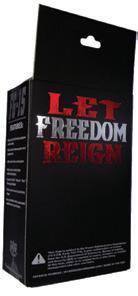

The FG-15 is just a grip when not in use, when the handle is deployed it is a trigger crank, allowing you to fire one shot per 120 degrees you crank the handle.
The FG-15 has been tested on a 20 year old Bushmaster, new Aero Precision, Daniel Defenses, LWRC, Ruger, Bravo Co, to name a few. Aside from the twin stainless Japanese precision ball bearings, the FG-15 is an American made and seriously overbuilt piece of kit. Comprising of nitride 4140 steel machined components, hardened S7 trigger striker pin, and many more high quality components. The FG-15 was mechanically tested for over 1,000,000 shots fired. At that point, the components showed only a light surface finish wear.
In the prone and with your weapon on a bipod, it allows the user to consistently put shots on target without trigger fatigue. Any AR-15 type firearm that has a 1/4-28 thread pitch for the grip screw will accept the FG-15 grip. Which is 99% of AR-15 lower receivers.

THE THIS PRODUCT CAN’T BE SHIPPED TO THE FOLLOWING STATES CA, CO, CT, DE, FL, HI, IL, IA, MD, MA, MN, NJ, NY, RI, VA, WA, DC GET IT NOW AT freedomordnance.com
FG-15 TRIGGER ACTUATING GRIP
imported Rossi firearms into the North American market until 1997, when Rossi set up BrazTech International to serve as the exclusive importer of their handguns, rifles and shotguns. Taurus USA began partnering with Rossi about the same time to make several unique Rossibranded models that they could market themselves.
Like Astra, the former Spanish weapons manufacturer, Rossi has a solid reputation for making good, affordable, fully serviceable firearms. They are not the Cadillac Eldorado of revolvers, but I would argue they are

the Chevrolet Caprice. Rossis aren’t luxurious, but nobody who knows guns would say they don’t do what a gun should do. With an online retail under $500, these revolvers are great performers at their price point, and at twice their price point if you stay within their limitations.
Editor’s note: For more information, visit RossiUSA.com.
SPECIFICATIONS: ROSSI RM66 REVOLVER
Caliber: .357 Magnum
Capacity: Six rounds
Barrel length: 6 inches
Overall length: 11.14 inches
Height: 5.47 inches
Width: 1.46 inches
Weight: 34.5 ounces
Sights: Adjustable target type
Stock: Soft rubber
MSRP: $620.99
26 American Shooting Journal // March 2024
Comparing .357 Magnums, the Rossi RM66 (center) has the basic lines of the small S&W J-frame Model 640 (top), but with an enlarged and reinforced frame window for the six-shot cylinder. However, it is dwarfed by the medium S&W K-frame Model 65 (bottom).
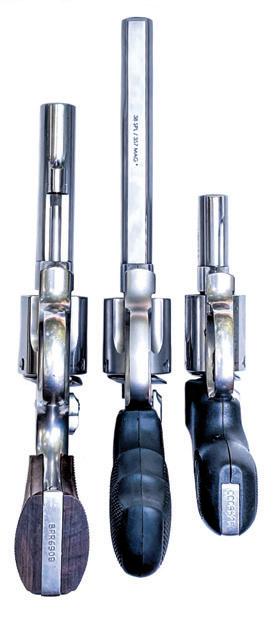
The frame and barrel of the RM66 (center) are comparable in thickness to the small J-frame (right). This photo illustrates the slim proportions of the RM66 compared to the medium K-frame. The RM66 is a delightfully lean, powerful handgun.
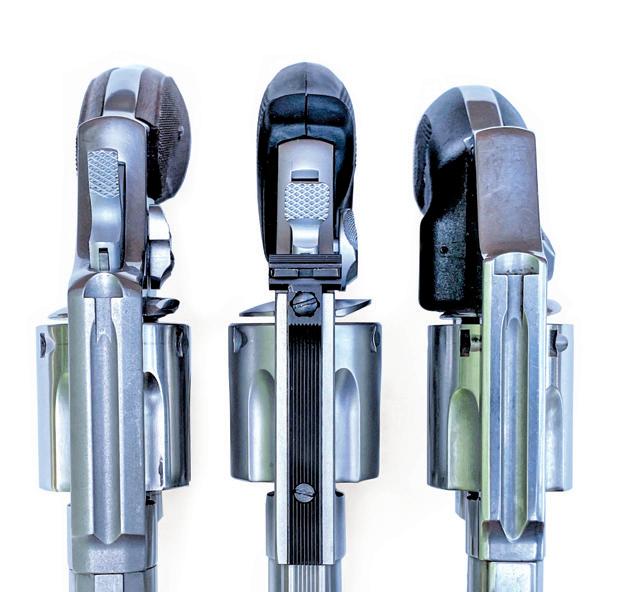
While all these guns are made with strong forged-steel frames, looking at the top straps from above, clearly the K-frame (left) is the most heavily built. The takeaway is, don’t expect the RM66 to be stronger than a K-frame. Shoot mostly .38 Special and save the .357 Magnum loads for personal protection.
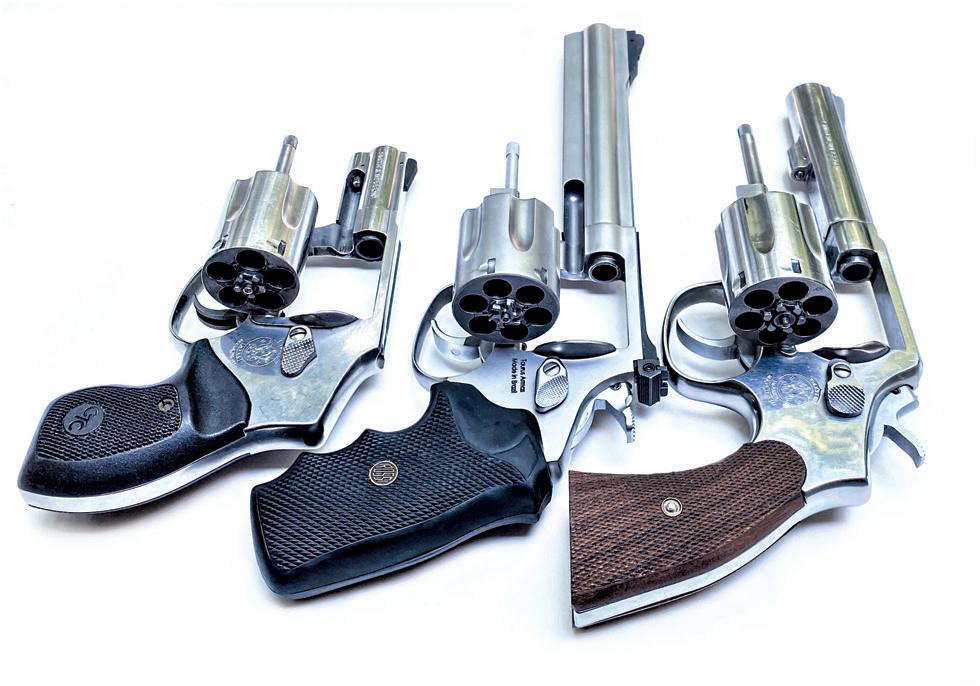
how
is thicker than the J-frame
comparable to
K-frame
not
by a flat like the S&W. S&W cut the flat to clear the cylinder bushing. Forcing cone cracking was occasionally reported when firing the K-frames with hot, light-bullet magnum loads. The RM66 may have addressed this weakness.
Note
the RM66’s (center) forcing cone
(left), and
the
forcing cone (right), but
weakened on the bottom

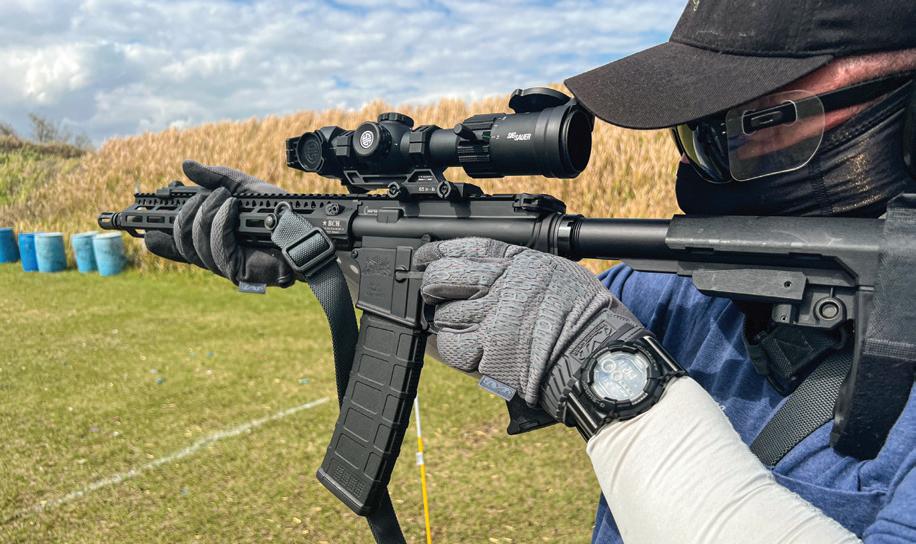
EVEN EXPERT TRAINERS CAN LEARN FROM EXPERT TRAINERS
Lessons from John Farnam’s defensive
STORY AND PHOTOS BY PAUL PAWELA
When it comes to firearms training and self-defense shooting, there are few people more qualified to teach the subject than John Farnam. The president of Defensive Training International, Farnam is considered one of the top firearms instructors in the world. He has personally trained thousands of federal,
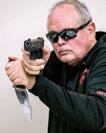
rifle shooting course.
state and local law enforcement personnel, as well as nonpolice, and is also the author of bestselling books like The Farnam Method of Defensive Handgunning, The Farnam Method of Defensive Shotgun and Rifle Shooting, and others.
In 1996, Farnam was selected by his peers to receive the renowned Tactical Advocate of the Year award from the National Tactical Association. In April 2009, he was inducted into Black Belt Magazine’s “Living Legends.” He also

americanshootingjournal.com 29 Self-Defense TRAINING
A trainee at renowned defensive shooting instructor and author John Farnam’s class during a drill that simulates shooting after losing your fingers one by one on both hands. Why is that important? “Many times people are shot in the hands and many terrorists use explosives,” states author Paul Pawela, who recently took the course.
SELF-DEFENSE TRAINING
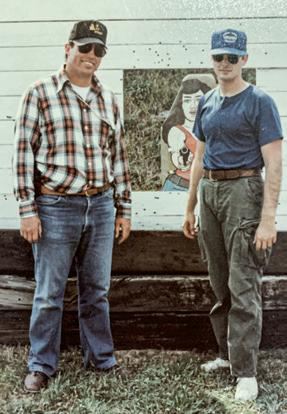
has combat experience with the Marine Corps in Vietnam.
While this information can be found with a quick Google search, I have a personal connection with Farnam. When I first started in 1982 as a police firearms instructor, there were four well-known trainers who were recognized as being above and beyond the rest. Those trainers were Jeff Cooper, Massad Ayoob, Ray Chapman and Farnam.

Now, were there other great firearms instructors out there? Yes, but these men took the lead. I was honored to train with three of the four, and I became an adjunct instructor under two of them: Ayoob and Farnam.
Ayoob and Farnam both had a great impact on me, and both were instrumental in making me the firearms instructor I am today. Both also encouraged me to become a professional self-defense writer as well.

WHILE ATTENDING THE recent 2024 SHOT Show, I coincidentally bumped into my former instructor, mentor and good friend, Farnam. It was such a pleasure to be in the presence of this great man once again. In conversation with Farnam, I expressed an interest in writing an article on the legend himself. He invited me to his rifle course in Florida, and I eagerly took him up on the offer.
On February 10, I was enrolled in Farnam’s Defensive Urban Rifle shooting course. I went into the course thinking I was not going to learn more on the subject than I already knew, as I have been involved with the rifle myself for nearly four decades, including teaching a half-dozen courses and publishing a bestselling sniper book of my own. However, I was way off base.
At the beginning of Farnam’s course, he described his philosophical points of life pertaining to the subject matter. He started by saying – and this is a direct quote – “Life is hard, life is dangerous, life is not fair, you are not in control, your excuses do not matter!” (You will see this again.)
According to Farnam, the two goals in training are 1) to die of old age; and 2) to not spend time in prison. Those
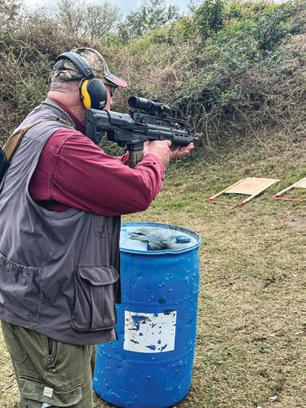
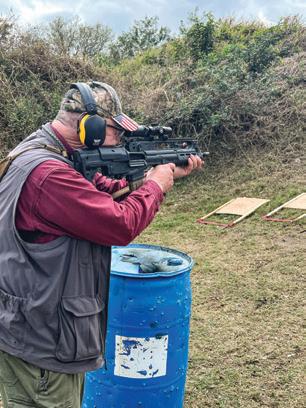
30 American Shooting Journal // March 2024
Farnam, here with Springfield Armory’s bullpup-style Hellion semiauto in 5.56mm, demonstrates how to bring a weapon into action. The rifle is convenient for him to travel with because, when broken down, it fits in his luggage.
Farnam (above, left) and Pawela in 1983 and 2024.

SELF-DEFENSE TRAINING

are deep thoughts to ponder, as we have seen many good citizens bravely use a firearm, especially a rifle in a self-defense situation, only to have the scales of justice try to crush them in a slanted trial.
Farnam also gave his rifle recommendations, which included guns from Springfield Armory, Ruger, Robinson Arms, Smith & Wesson, Sig Arms, Double Eagle, Daniel Defense, Rock River Arms and more. He used a Springfield Hellion bullpup in 5.56mm for the two-day rifle course. His rationale was that when broken down,
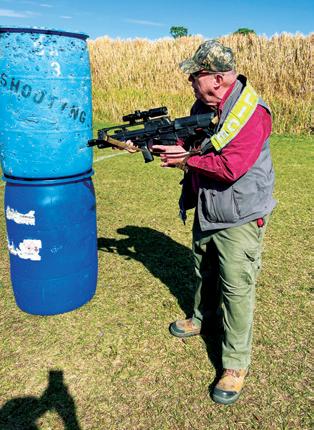
it fits in his suitcase nicely for all the training and traveling he does.
Before any shooting began, Farnam laid down his mandatory gun safety protocols. For example, it was required that the safety be on unless shooting, the dust cover be closed unless shooting, the muzzle always pointed down, and the gun always loaded. The reason for not having the gun in the upright position is that it’s a good way for that rifle to be taken away from the user. Farnam always emphasized watching one’s muzzle, as he stated, “We don’t eliminate the danger; we
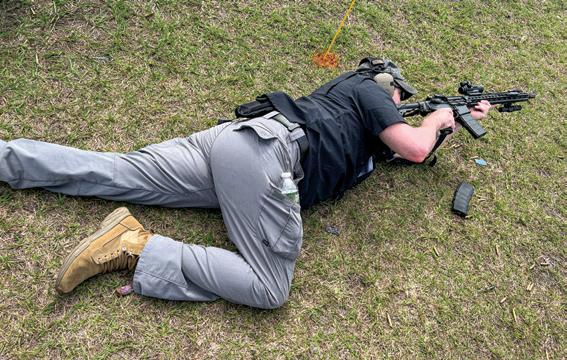
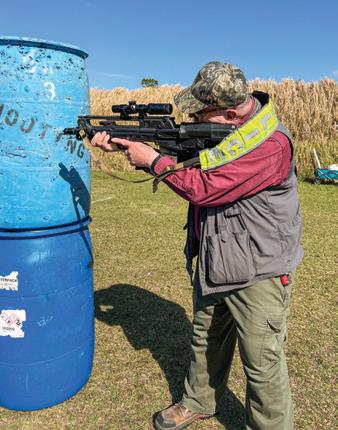
modify it.” (That goes back to his quote that life is dangerous.)
I HAVE BEEN to many rifle classes that did not differentiate between military and civilian courses. I want to quote from one of Farnam’s books to explain the urban rifle for civilian carry in terms of this course. In this environment, “the emphasis is on 1) functioning as an isolated individual operator, 2) constructively interacting in a non-threatening manner while visibly armed with persons of unknown intent, 3) relatively close range lethal engagement of violent criminals who represent an observable, describable direct threat to innocence, and 4) careful individual shots keeping in mind that our ammunition supply is limited, resupply is unlikely, and all your errant shots by definition are going to hit something we never intended to harm.”
“Accordingly, in urban rifles, we are training for domestic, nonmilitary defensive scenarios, so we don’t spend much time worrying about targets more than 100 meters in range. The reason is that in society, even when it is in a state of disruption, we still must be able to identify and authenticate physical threats before we consider defending
32 American Shooting Journal // March 2024
Firing both left- and right-handed from different shooting positions was taught.
One of the items Farnam recommends is a reflector panel on your rifle sling as a way to identify yourself as a good guy when law enforcement is on the scene. His reads “police,” but others are available for security guards and CCW permit holders.


americanshootingjournal.com 33
SELF-DEFENSE TRAINING
ourselves with gunfire. I don’t think any of us are prepared to shoot people under any other circumstances.”
I cannot emphasize this advice enough, as I have seen many wellknown ex-military instructors teach their students to shoot people from 300 to 500 yards away. It is great to do on a military battlefield, but it is very bad in civilian confrontations.
Farnam has several tactical recommendations when it comes to shooting with a rifle. Keep your elbows
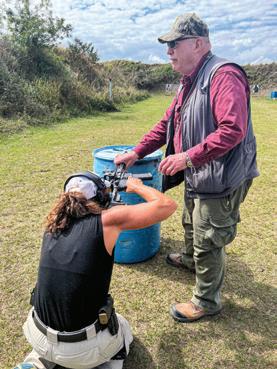
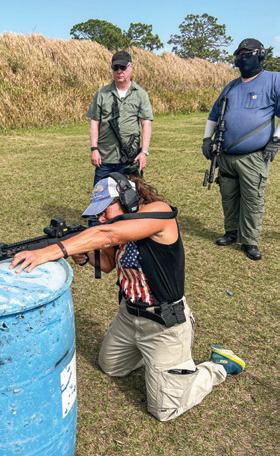
in (sticking them out will get your elbows shot), and lean out with your rifle behind cover (putting your feet out will get them shot as well). When reloading, don’t stick your muzzle out from behind concealment. Always carry an extra bolt in your kit; if anything goes wrong with your gun, it is probably going to come from a bad magazine or something in the bolt carrier. Keep the chamber of your bolt carrier clean and your AR rifle dripping with oil. While many people complain about the 5.56mm rifle round, Farnam has found it to be excellent for shooting animals and people. Finally, the debate on battlesight zeros is endless, but Farnam recommends 40/240 meters. I like that a lot and am now incorporating it into my own lesson plan!
I WOULD LIKE to say I was a rockstar in Farnam’s shooting class, but that would be a lie; more to the point, I was a soup sandwich in about every category. I could tell you all the excuses in the world, but the bottom line is that it was my fault. Ultimately, I shot the required distances, but I reflected on Farnam’s wisdom about making excuses. He had us moving and shooting in that class, and it was intense.
If you want to read one of the best books on the subject of shotgun and rifle shooting, then I recommend Farnam’s
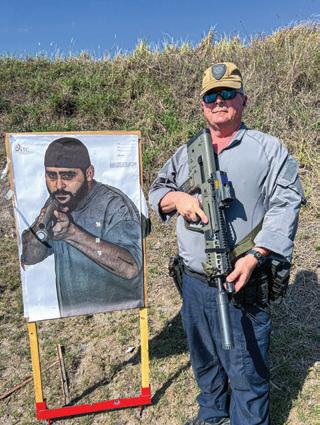
In a home invasion, can you accurately make a shot on a hostage taker while on the move under duress and not hit the hostage? This target was one of the best shot in the class.
Defensive Shotgun and Rifle Shooting.
If you want to attend one of his courses, see defensive-training.com. Farnam has been training the law enforcement officer community for 51 years and is still one of the best trainers in the world, which speaks volumes. And that’s my two cents! ★
Editor’s note: Author Paul Pawela is a nationally recognized firearms and self-defense expert. For his realistic self-defense training, see assaultcountertactics.com.
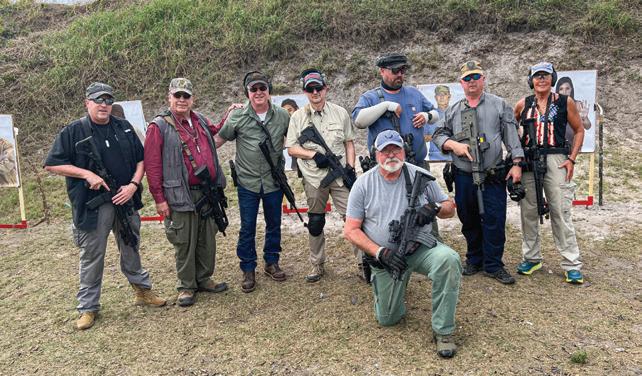
34 American Shooting Journal // March 2024
Farnam helps a student shoot from an uncomfortable position. Why? Because the world isn’t comprised of shooting benches, and keeping as many parts of yourself and your weapon behind cover is one of his key concepts.
Pawela admits he didn’t perform as well as he would have liked in Farnam’s class, but he learned some things to incorporate in his own training courses.
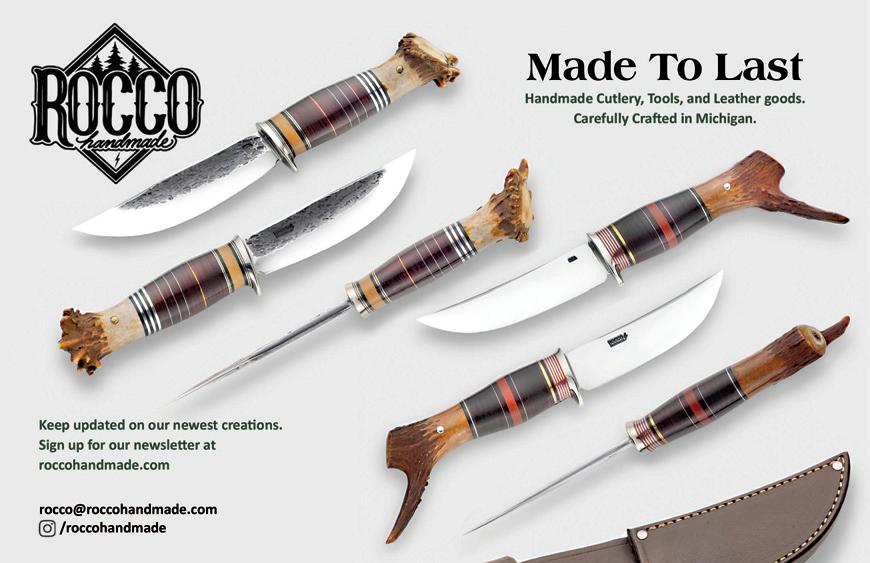
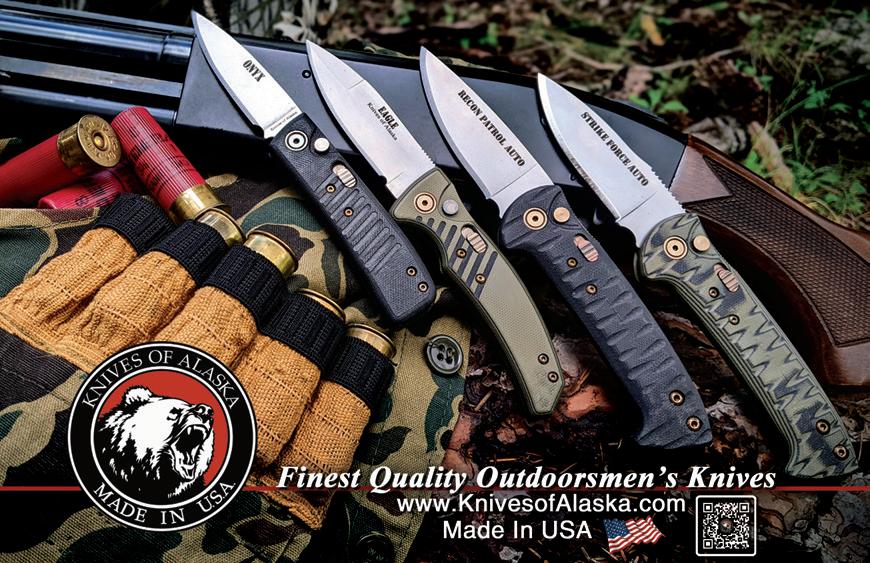
americanshootingjournal.com 35

she HUNTs
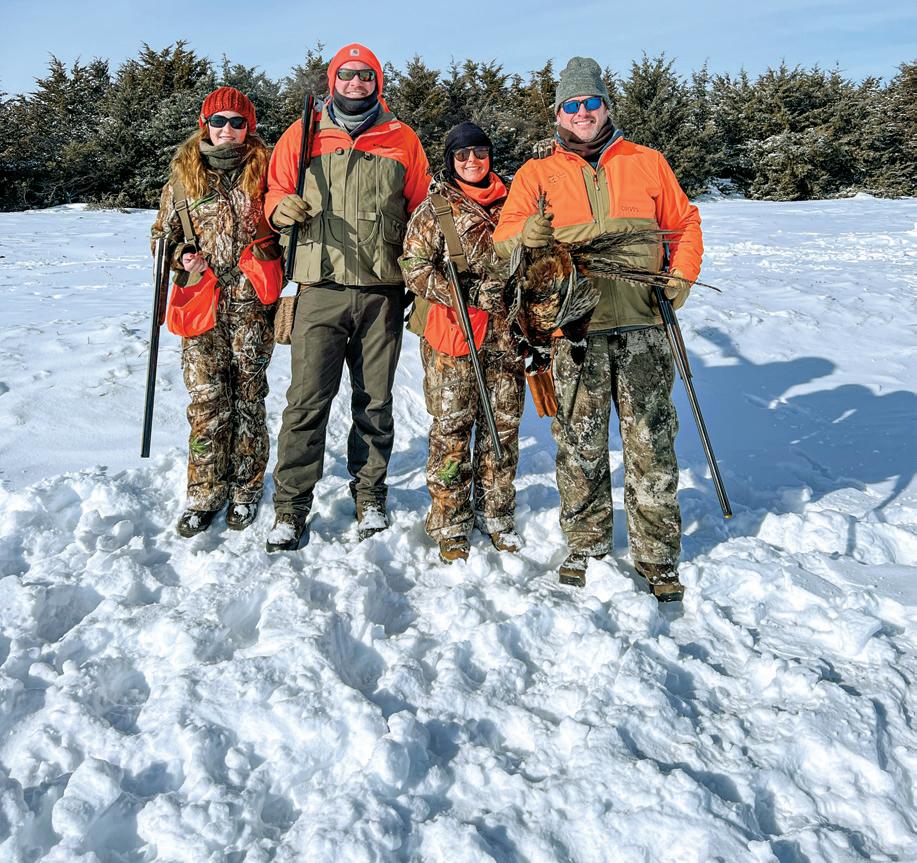
SNOW BIRDS
A January trip to frigid South Dakota produces good pheasant hunting for couples and their kids.
STORY AND PHOTOS BY BRITTANY BODDINGTON
Having a birthday on December 24 comes with its fair share of challenges.
My husband Brad has been sharing his birthday with Christmas his entire life and does not appreciate it when the two big days get lumped together, so we always try to do something different for his birthday that is

not Christmas-related. I joke that in my household, “Christmas Eve” doesn’t exist; we have Brad’s birthday and then Christmas.
December is a tricky time of year to plan things, given the weather and all the Christmas events, kids parties and such in the lead up to the holiday, but we found a few close friends who were able to make a trip work and so we started planning Brad’s next birthday adventure.
ONE OF THOSE trips was a South Dakota pheasant hunt. Don’t get me wrong, I would not say December is the best time to hunt in South Dakota – it is very cold and the weather can get extreme – but we picked a window in early December to make it work.
The trip was planned with four couples: Toni and Rich, Leanne and Rich, Sarah and Matt, and of course, Brad and me. Matt has a December birthday also, so the trip would serve
americanshootingjournal.com 37
Leanne and Rich Williams (at right) joined author Brittany Boddington and her husband Brad Jannenga for a January pheasant hunt in snowy South Dakota. Brittany and Leanne dudded up in matching DSG snow suits to keep warm in the bitterly cold conditions!
SHE HUNTS
as his birthday adventure as well. All of the wives had attended my She Hunts Skills Camp multiple times and we had all become friends over the years. Toni and Sarah had attended three camps, while Leanne had attended two camps.
In the weeks leading up to our pheasant hunt, we all watched the weather and were getting concerned. DSG Outdoors is a sponsor for the camps and gives alumni a great discount on gear, so we started a group chat with the ladies on what we were going to need to wear to stay warm. Leanne and I decided we didn’t have adequate gear for the forecasted blizzard conditions, so we both ordered heavy-duty snow gear complete with bib bottoms and heavy-duty mittens. DSG actually sells hunting, fishing, snow and ice gear, so their product lines will literally cover you in any weather conditions.
The gear arrived and fit perfectly. We were all packed and ready to go when we got a call from our South Dakota lodge host Lori, the owner of Grand Slam Pheasant Hunts, who told us that things had taken a turn for the worse and that it wasn’t looking good for our hunt. I got on the phone with each of the ladies and we all did some weather googling; everyone agreed that our chances of actually getting to the lodge, located

in the state’s southeastern quarter, had just dropped dramatically. A huge storm was coming and highways were already being closed down. We scrambled a bit and talked to Lori again and decided to push off to late January and hopefully better weather.
As a consolation prize, some of us went to our ranch in D’Hanis, Texas, and did some hunting since we were already packed up and had babysitters in place. It happened to be a great time to hunt the Lone Star State, as it was the middle of whitetail season and we had some culling to do, so all of a sudden one hunt became two hunts. Our little ranch was once a whitetail breeding facility,

but when chronic wasting disease, or CWD, came through the area, the owner cut his losses, freed all the penned deer, and sold the ranch to us. We hunt it sparingly and have introduced a bunch of exotics. The ranch is not open to the public but kept for friends, family and She Hunts alumni to hunt at with their families. Rich and Leanne each took nice bucks and we had a great impromptu hunt, but we were still excited about our upcoming pheasant hunt.
WHEN OUR LATE January dates finally arrived, the weather had not improved much. There was no active blizzard, which helped, but the conditions were extremely cold with lots of snow on the ground. Being an Arizona girl, I knew this weather would be brutal for me but hoped my gear would keep me warm. For me, it is always my feet that get cold first and it can really ruin a trip if I can’t get them warm, so I went big and brought my heaviest pair of Schnee’s Pac boots and some warming inserts. I wondered how this extreme cold would affect the birds and if the hunting would still be good, but Lori assured me the birds were still out there.
We arrived at the lodge in the afternoon and got settled. The lodge is a beautiful 15,000 square feet with a game room, sauna and – my favorite part – a fabulous gun/gear/mud room where everyone would meet before the hunt to put on jackets and boots. Grand
38 American Shooting Journal // March 2024
The 15,000-square-foot lodge’s mud room, where hunters meet and gear up before heading afield, was Boddington’s favorite.
Grand Slam Pheasant Hunts is a family-owned and -operated outfitter located between Pierre and Sioux Falls and offers fabulous accommodations that truly make you feel at home.

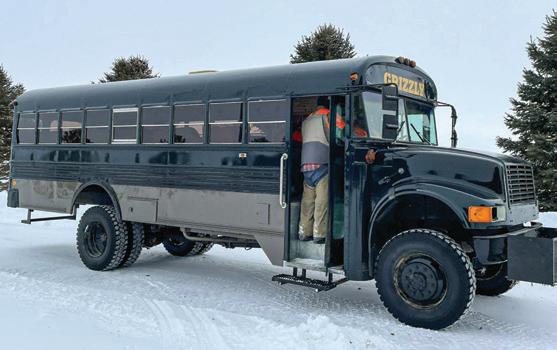
Slam Pheasant Hunts is a familyowned and -operated outfitter that has been around a long time. They really have things dialed in. When you arrive and get settled, they fix you a drink in the game room/bar area and bring out a nice spread of snacks and pheasant poppers. Meals are hot and made fresh, served at a nice dining room-style table and everyone gets to eat together. They really make you feel at home there.
The plan was to hunt after breakfast
and maximize use of the warmest part of the day. The first morning of the hunt, we were all excited to jump on the modified school bus that they use to take people out to the fields. It was hovering right around 0 degrees outside, but clear and sunny, which made it not so bad. Fortunately, we had packed accordingly and we had our heavy-duty gear on, so everyone stayed warm – except my husband, who refused to shoot in gloves and got
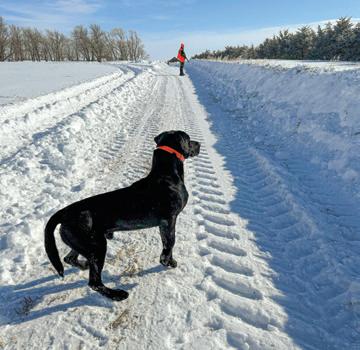
so excited on one field packed with birds that he emptied an entire box of ammo without a break and almost managed to give himself frostbite. It took 45 minutes for the stinging to wear off as his hands warmed.
One of the things we really like about Grand Slam is that they hunt wild pheasants. The birds you hunt are not planted. They are very strict about not shooting the hens to make sure the population is managed properly.
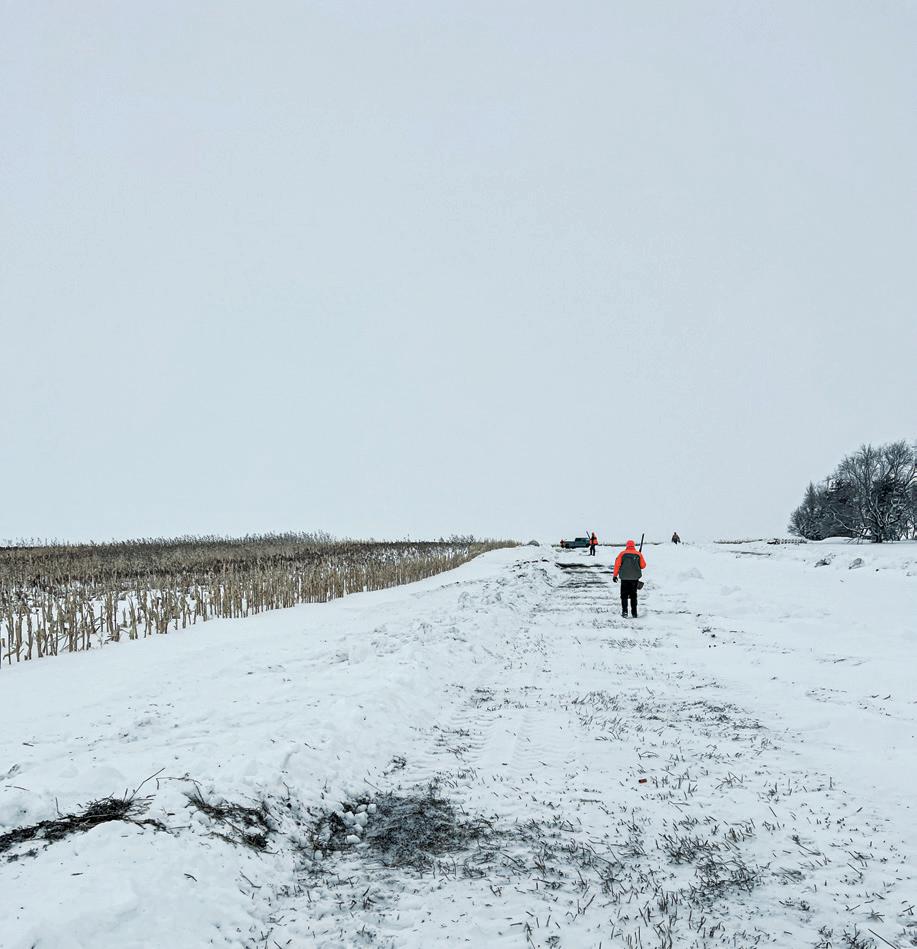

40 American Shooting Journal // March 2024 SHE HUNTS
A modified school bus is used to take pheasant hunters out to the fields (bottom).
The dogs used at Grand Slam are bred for their jobs and treated like part of the family. They work hard and are super personable.
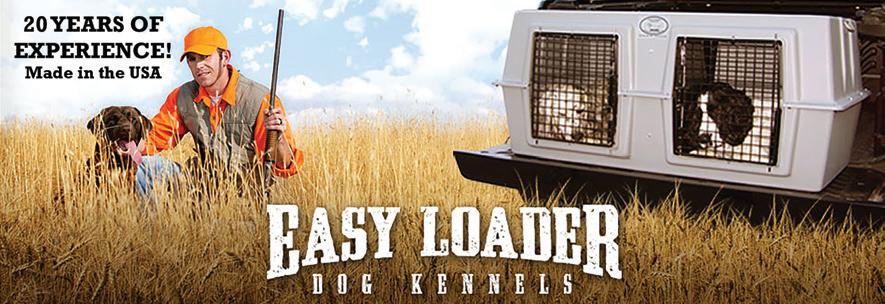




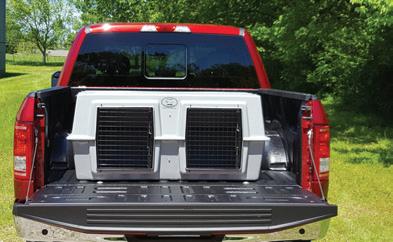
EASY-LOADER Dog Kennels www.easyloaderkennels.com Bartlesville, OK • 800-853-2655 • Deuce fits smaller pickups, SUVs & UTVs • EZ-XL is for larger breed dogs & full size vehicles • Vents, cold weather door covers, insulated covers & custom kennel pads available TOUGH • DURABLE • LIGHT Call 800-853-2655 Check out our website for new accessories www.easyloaderkennels.com Easy Lo ader, Deu ce & EZ-XL Models • Easy Loader & Deuce accommodate 2 dogs up to 65 lbs each
EZ-XL accommodates 2 dogs over 65 lbs each
Made from High Density Polyethylene with UV protection
Easy Loader fits most full size pickups, SUVs & large UTVs Introducing th e EASY XL. For large breed dogs. 30 Outdoor Gravity-Fed Pet Watering System THE DRINKING SPOT NEW! TRIPLE KENNELS
•
•
•


Once you arrive at the designated field to hunt, the people fan out with several shooters left on the end as blockers and others walking or flanking on either side of the field, while the dogs and dog handlers flush through the middle of the strips of dry corn fields or woods. To my surprise, the birds were there, hiding under the snow. The dogs had no trouble finding them and getting them airborne. We worked our way from one end of a field to the other with everyone getting a chance to shoot, and then gathered our birds and jumped back on the bus to go
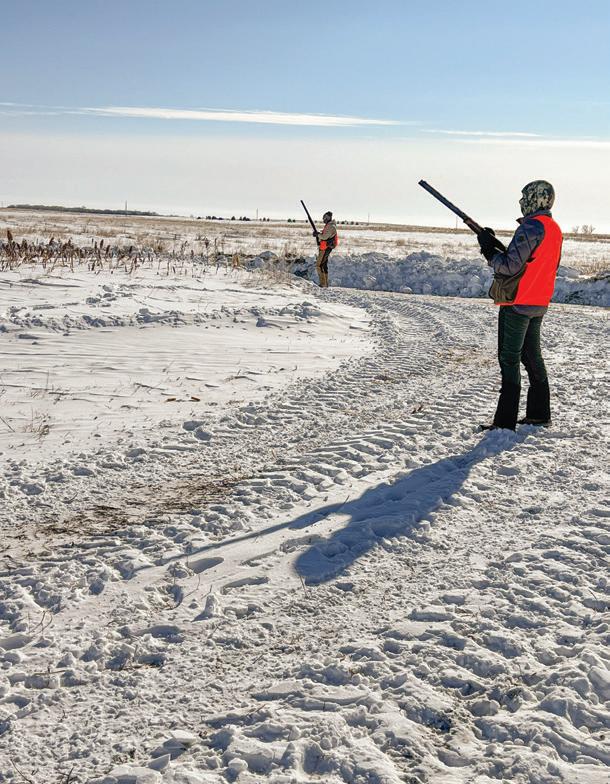
to the next field.
ONE STORY WE tell often is about how I almost took out one of Sarah’s kids with a pheasant. Sarah had brought her three kids, ages 12, 9 and 5. The 12-year-old, Betsy, had been through camp and could hold her own with a shotgun, so she was hunting with us. Meanwhile, 9-year-old Teddy was with his dad Matt, taking turns and getting coaching along the way, and 5-year-old Luke was playing in the snow at the end of the field with the blockers. One pheasant burst up in front of
me and I made one of my best shots of the trip on him as he flew toward the end of the field. He crumpled in the air and soared straight down toward Luke at the end of the field. Luke stood up and put his arms out as if to catch the bird and we all screamed at him to get out of the way, knowing that the bird was coming in much too fast and was far too heavy for him to catch. At the last second, he dove to the side and the bird crashed down next to him. Thankfully, nobody was injured, and we all got a good laugh out of it.
42 American Shooting Journal // March 2024 SHE HUNTS
Luke, the son of the author’s friend Sarah, was happy to pick up ringnecks that came his way – and fortunately was not harmed by a bird that almost hit him!
Blockers post up at the end of a field as pheasants are pushed toward them by the dogs and dog handlers. There is often a huge burst of activity right as the dogs reach the blockers and the birds get caught in between and are forced into the air.

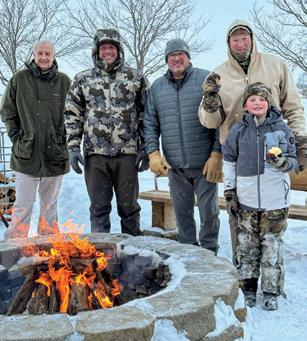
The guides later told us to never attempt to catch a bird that has been shot without wearing gloves because the wing bones can be very sharp if they are broken.
We kept up a steady pace shooting field after field until we broke for a late lunch and went back to the lodge,
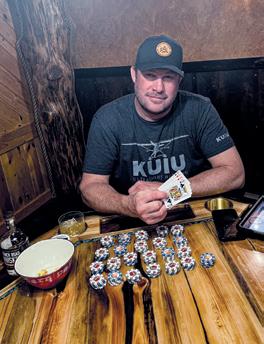
where they had hot soup ready for us. We had no trouble reaching our daily bird limits, even with the shorter hunting hours due to the cold. In the evenings, the guys made a fire outside and smoked cigars and the ladies hung out inside and played pool. Brad also cleaned up at the poker table. All












around, we had a nice mellow time with friends, which was exactly the plan for Brad’s birthday.
Editor’s note: Brittany Boddington is a former outdoor television host and journalist with 15 years’ experience hosting shows about various hunting adventures around the globe. She has hunted on six continents and collected just under 100 species. With her father Craig’s help, Brittany discovered a love for the great outdoors and has become a passionate hunter and conservationist. She has learned through experience that the best way to preserve our hunting heritage is to teach the next generation of hunters about our way of life, which is why she developed the She Hunts Skills Camp. Brittany and her husband Brad Jannenga live in Phoenix, Arizona, where they raise beef cattle with their family. Follow Brittany’s adventures on Facebook, Instagram and X.

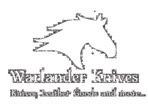




44 American Shooting Journal // March 2024 SHE HUNTS
Sunset comes early in January in South Dakota, so evenings were spent inside playing games or out by the fire on the porch.
406-261-0010 • hammerbullets.com PURE COPPER, LEAD-FREE • PATENTED DESIGN SATISFACTION GUARANTEED OR YOUR MONEY
SIMPLY BETTER BULLETS Handcrafted Heirloom Quality Knives & Leather Goods made in america warlanderenterprises.com warlander_enterprises
Trust HAMMER BULLETS for
superior
accuracy
and
better big game terminal performance.
BACK.


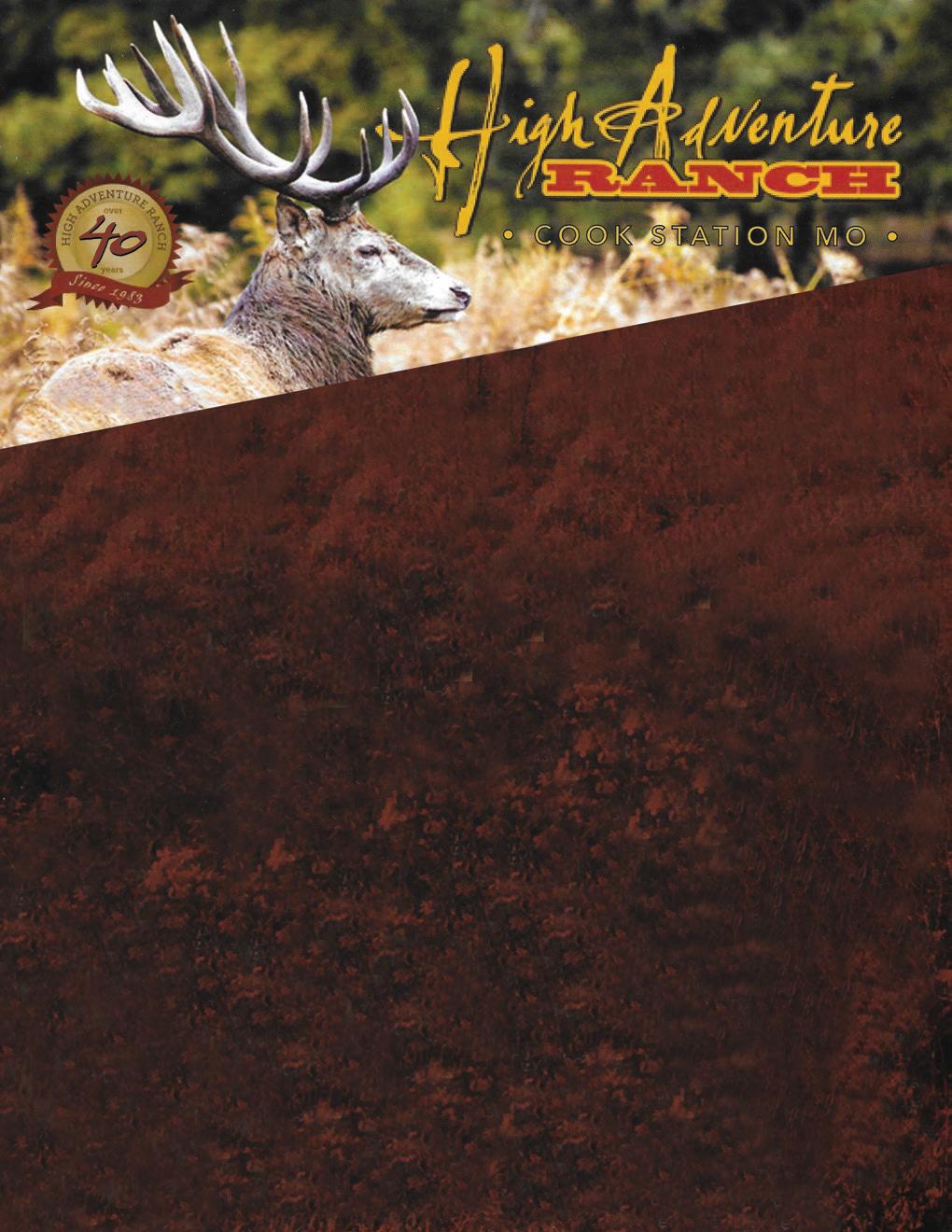
We have a “No Game, No Pay” policy. You can’t get that out West or anywhere else.
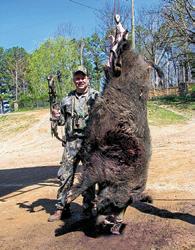
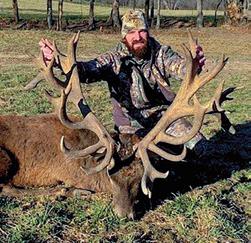
A Unique Big Game Hunting Ranch
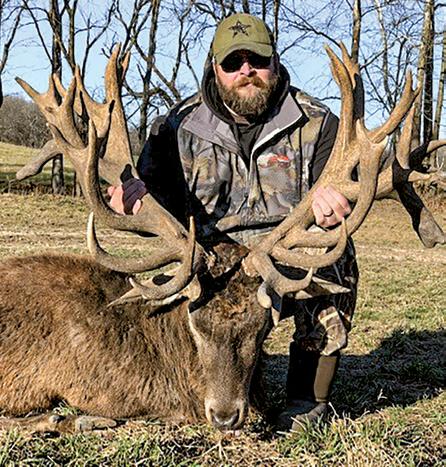
Nestled in the foothills of the Ozark Mountains in Missouri, High Adventure Ranch offers all of the excitement of western big game hunting without the costs and hassles.
Be prepared for a fair chase hunt! With over 3 square miles of prime natural habitat, our ranch provides challenges to even the most seasoned hunter, but our experienced guides and “No Game, No Pay” policy practically ensure that you won’t go home empty handed. In addition, High Adventure’s hunting season is year-round, allowing ample time to fit the most demanding schedule.
While our whitetail, elk, wild boar and red stag hunts top our hunter’s most popular lists, hunters from around the world have visited our ranch, hunting everything from American bison, black buck, fallow deer to Spanish goats and African game.
So, whether you desire a 10-point whitetail mount for your trophy room or simply the thrill and challenge of taking down one of our many elusive big game animals, High Adventure Ranch guarantees memories of an unparalleled hunting experience that will bring you back again and again.
Call Brad 314-578-4590 bpuff@highadventureranch.com highadventureranch.com We are 8,000 miles closer than New Zealand. We are in Missouri and have red stag.
Red Stag
Red Stag
Wild Boar
Whitetail

ROAD HUNTER
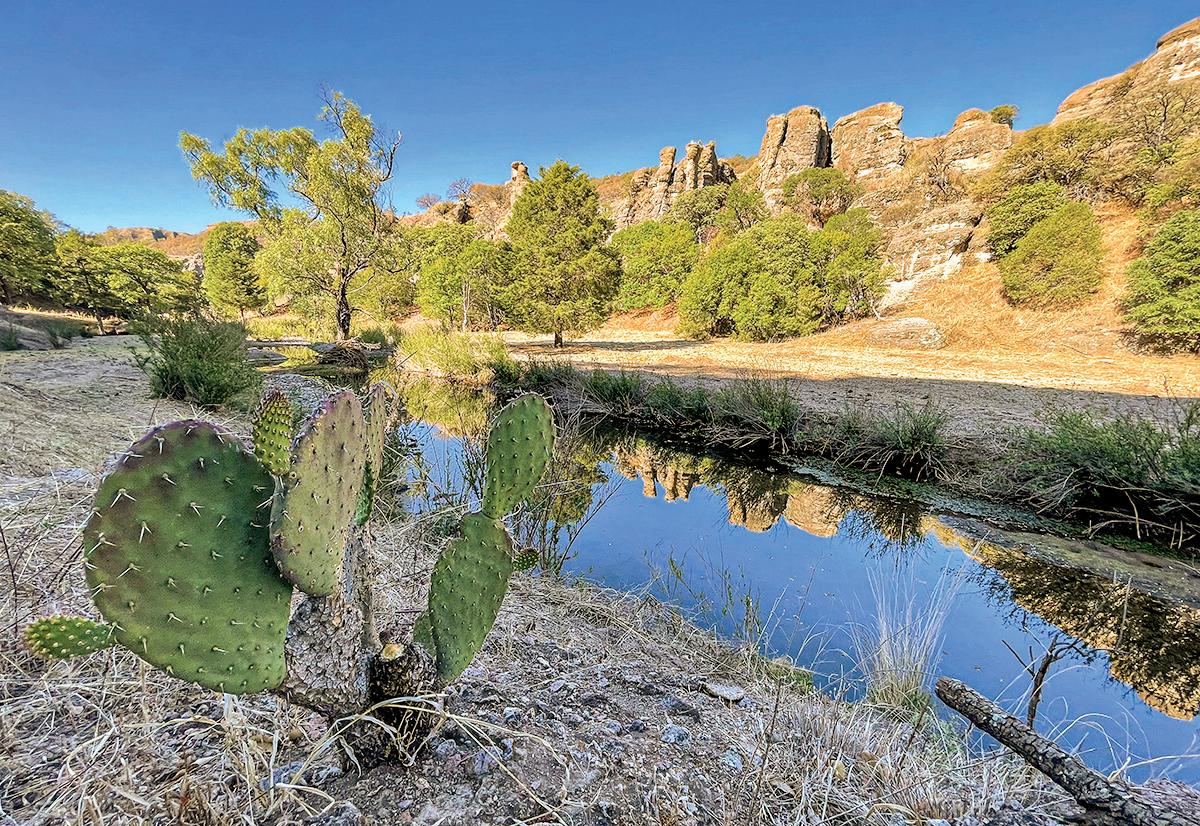
GOING FOR GOULD’S
A quest to fulfill world turkey slams with these stunning toms takes three hunters into Mexico’s mountains.
STORY AND PHOTOS BY SCOTT HAUGEN
Adistant gobble resonated along the pine ridge. Thirty minutes later the tom gobbled again, this time a bit closer.
The turkey moved slowly and gobbled very little. I gave a few more yelps on a diaphragm call. Nothing. Then, several minutes later, I laid eyes on

my first Gould’s turkey in Mexico. It came in to the crude-looking decoy in silence, catching me by surprise. It reminded me of many elk I’ve called in.
The lone tom was in a compact strut as it smoothly moved through the tall trees. Shafts of sunlight from a setting sun illuminated the brilliantly plumed bird between long shadows. It was stunning, more so than I’d imagined it would be.
Finally, the big tom strutted in,
dancing pirouettes around the decoy. I hit it with sharp cuts, and the tom broke strut and lifted its head. The shot was simple and I’d just completed my world turkey slam.
It was the first afternoon of our hunt. I’d not spent more than two hours hunting these grand birds. I was there thanks to good friend Parrey Cremeans. Cremeans is one of the most passionate turkey hunters I know, and we’ve shared many exciting hunts
americanshootingjournal.com 47
Where there’s water in Sonora’s Sierra Madres, Gould’s turkeys won’t be far.
ROAD HUNTER
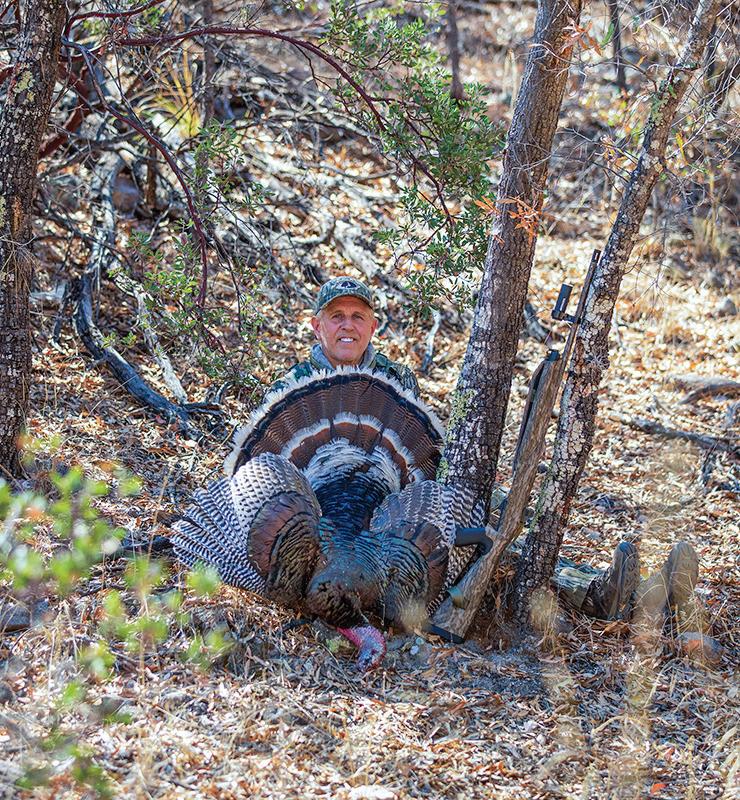
CALLS & DECOYS
This spring marks my 49th year of turkey hunting. During my time, I’ve seen a lot of turkey gear come and go. Some has been exceptional, and that’s the gear I keep using.
I love a good box call, one that’s loud and crisp for the habitat I hunt. I also like a glass-surface friction call, as well as one made of slate. In my turkey hunting vest, you’ll find multiple diaphragm calls. I called in my leery Gould’s turkey in Mexico with only a diaphragm call, one made by Slayer Calls. Slayer Calls makes three turkey diaphragm calls. I’ve used them all in multiple states for three seasons and have called in hundreds of toms while hunting and photographing them. These calls are crisp, make it easy to achieve a range of sounds, and they last.
My go-to turkey decoy is a stuffed hen I made from one I got years ago in the fall season; Jenny has fooled a lot of toms. My commercial decoy of choice is made by Dave Smith Decoys in Oregon. The anatomical accuracy of every decoy is tops, as are the paint jobs. Last season I had excellent success with Dave Smith’s Preening Hen decoy, but have also brought in many turkeys with their line of hen decoys and strutting tom and jake decoys. Once I find a piece of gear that works, I keep using it, for obvious reasons.
over the years. This wasn’t his first time to hunt Gould’s turkey in Mexico. But it was his first attempt at taking the world turkey slam in a single season, and this was the final bird he needed to complete the goal.
CREMEANS IS THE owner of Just For Hunting (justforhunting.com), a booking agency specializing in quality hunts. It was Cremeans who arranged this trip. When traveling to Mexico with your shotgun, you’ll need to complete Form 4457, which is a Certificate of Registration for Personal Effects Taken Abroad. You must have this form to present to US Customs when returning to the United States with your firearm from Mexico. This form must be obtained in person from the nearest US Customs and Border Protection Office – usually located near a large airport in your home state –before you leave the US to hunt. Plan ahead, as it can be a lengthy process of not only scheduling an appointment, but also driving to the nearest office and then waiting. You will need to take your shotgun with you in order to get it properly registered and obtain the

48 American Shooting Journal // March 2024
Parrey Cremeans has hunted Gould’s turkey in Mexico before, but this great tom marked the last one needed to complete a single-season world slam.
Slayer Calls’ diaphragms produce a range of sounds and are proven to bring in gobblers.
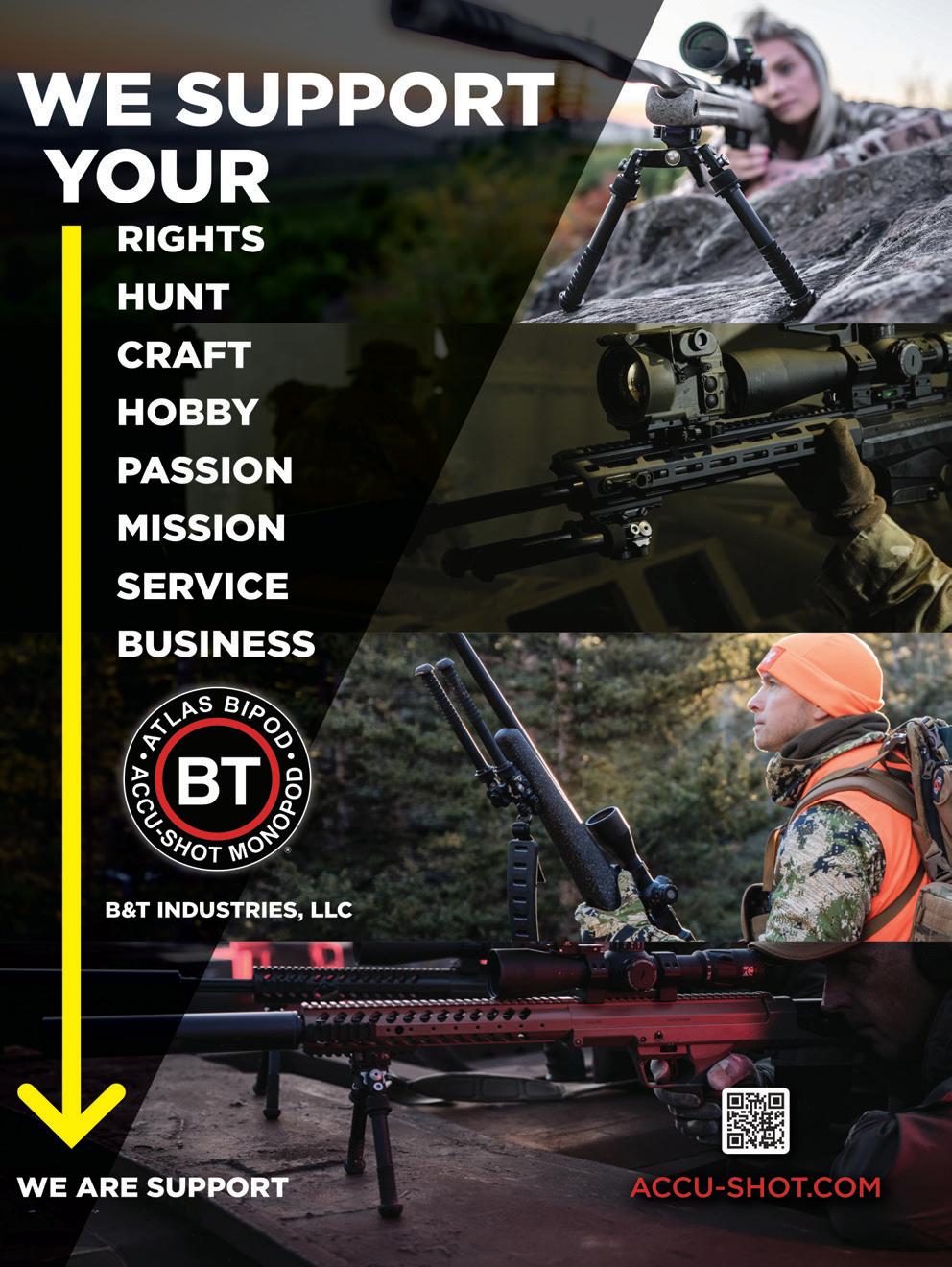
ROAD HUNTER
I shot my Gould’s on the first afternoon of our arrival, and I only intended to shoot one turkey on this three-day hunt. We’d landed in Hermosillo, in Sonora, Mexico, that morning and drove five hours east to the little logging town of Yécora, which served as our home base for the hunt. This is where the outfitter had a house for us to stay in. Cremeans arranged for the transport as part of the package. The road was winding and long, and we climbed to 7,500 feet in the Sierra Madres. That’s the elevation at which we hunted these striking, wary birds in the final week of the spring season.
The next morning I tagged along on Cremeans’s quest for his first tom. Birds were quiet, but we kept searching the wooded mountains. Martin, our local guide, was getting frustrated at the lack of birds, so we walked, drove
and walked some more. Every ridge we topped, Martin used his box call to send loud yelps echoing into the valleys below. Finally, shortly before 11 a.m., we got a gobble from a distant tom in the canyon below.
Martin called for 15 minutes but the tom wasn’t budging, so we hiked to it. When we caught a glimpse of the tom through thick brush, it was strutting in front of five hens. Martin and Cremeans crawled ahead, set up a jake decoy and lightly called. Ten minutes later, Cremeans had his single-season world slam. It was an honor to be a part of it.
Temperatures were hot, into the upper 80s by noon. The land was dry, vast and rocky. Pine trees dominated the ridgetops, and oaks thrived below. It was beautiful and unique, nothing like any turkey habitat I’d hunted in before. I’d hunted Coues whitetail and mule deer in this region before, but
there were no turkeys around.
WHEN CREMEANS AND I returned to camp, we found the third member of our party, Ted Lidie, smiling. Lidie, like Cremeans, is from Redding, California. They’re longtime friends. As with Cremeans, Lidie was in search of his single-season world slam, but he was going for a double slam – two toms of all six species in a single season. He’d just taken his first Gould’s and needed one more.
“Toms were everywhere,” Lidie smiled. “There must have been 20 on the roost, and they all pitched out of the trees and came running to the decoy. It was awesome!” He shared a video of the moment, and it was so loud with toms gobbling and yelping, you could only imagine what it was like to experience it in person.
Lidie is lifetime military. He was a paratrooper and served many missions
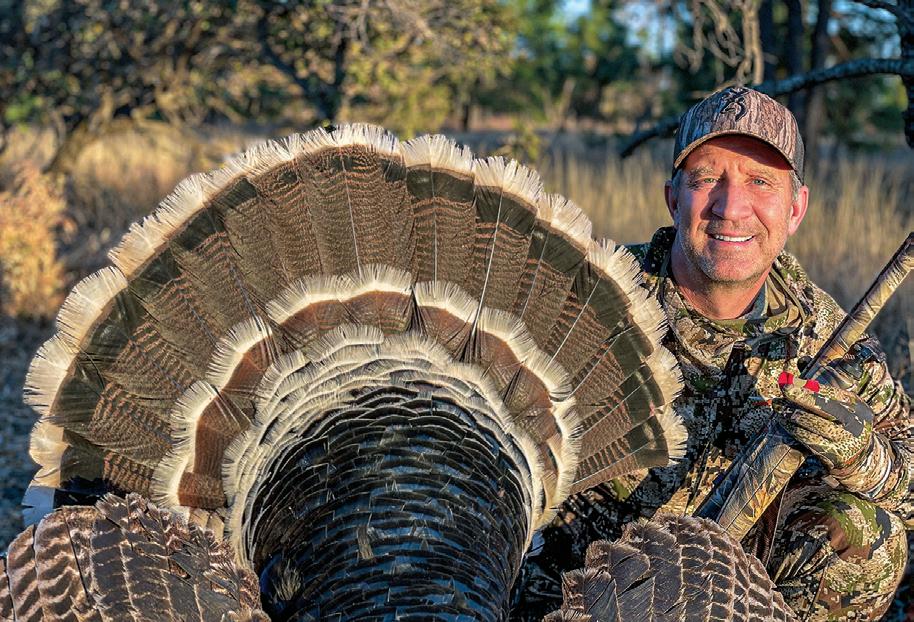
50 American Shooting Journal // March 2024
Author Scott Haugen was elated over his striking Gould’s, which came in to a decoy silent and strutting, and was happy to share the experience with good friend Cremeans.
proper paperwork.
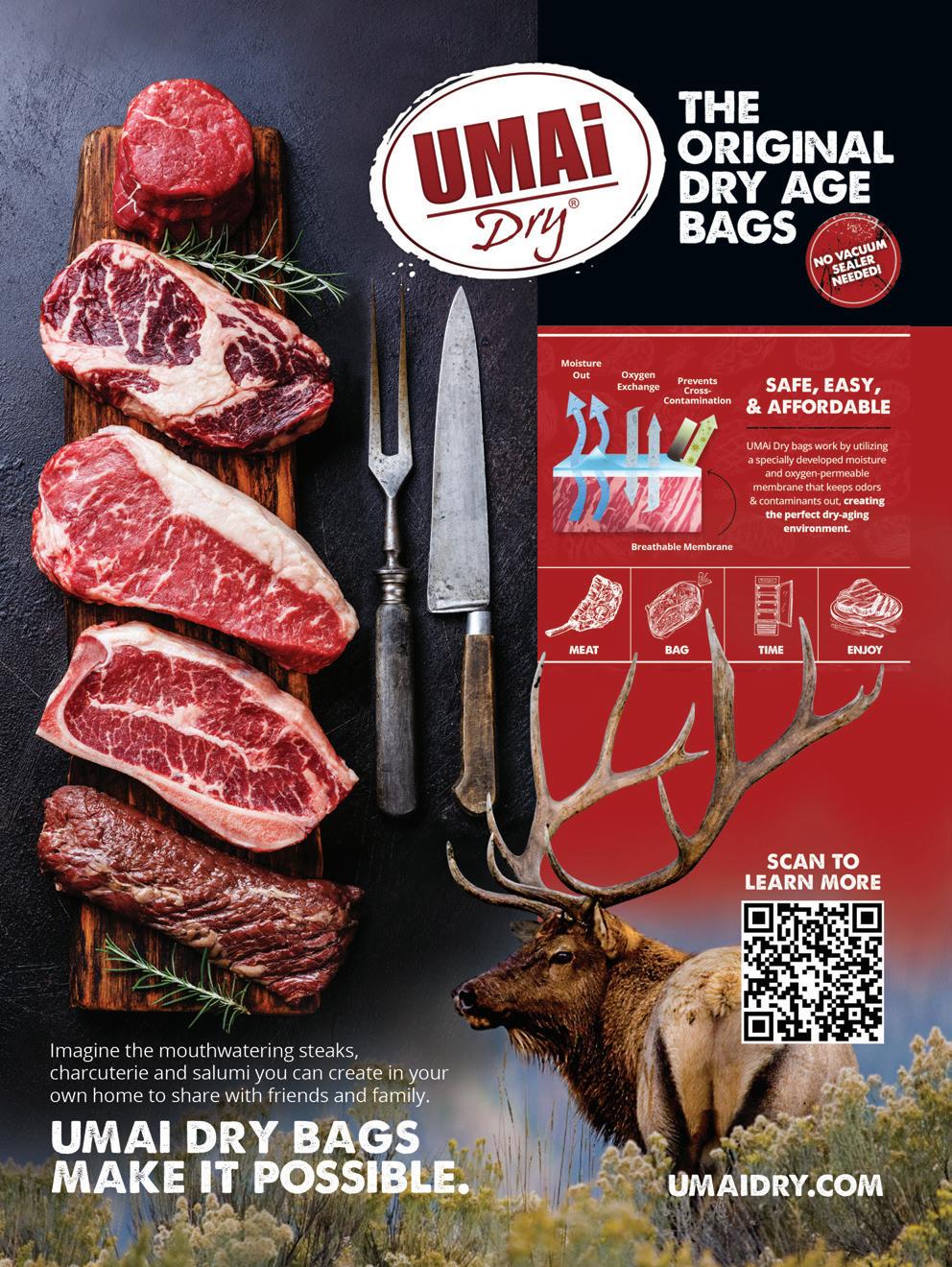
ROAD HUNTER
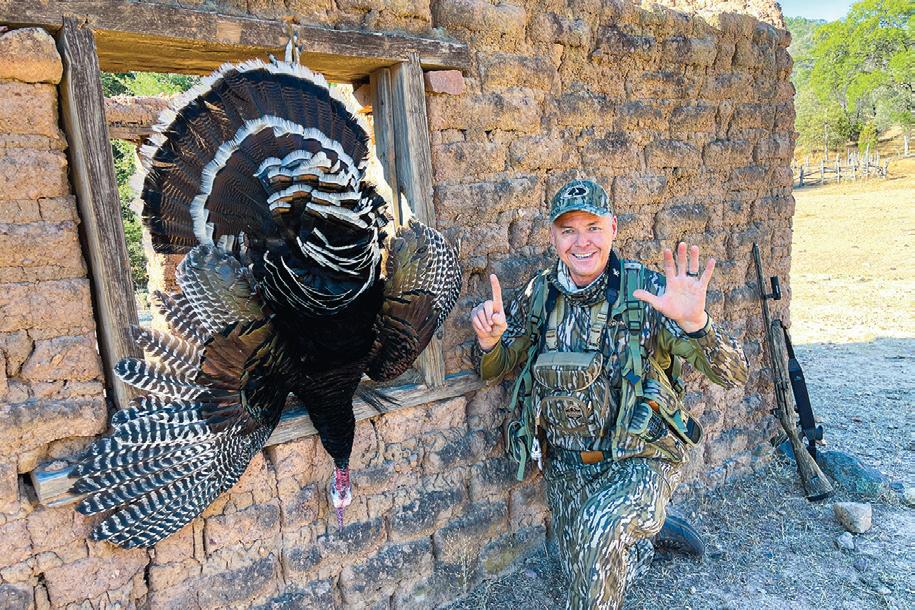
around the world. He also recruited special forces personnel. His stories are spellbinding and he knows he cheated death many times. Lidie truly appreciates every special good fortune he’s dealt, and this turkey hunt was no exception.
After retiring from the military, Lidie started a firearm instruction company, which has grown to be one of the biggest and most successful in the country. Lidie as well as Cremeans are also very active in their local National Wild Turkey Federation chapter, serving many youth hunters, and more.
The duo hunted most of their world slam species together. “Getting one bird is pretty straightforward, but getting two of each species can be a challenge,” confirmed Cremeans. “On our Merriam’s hunt in Idaho, I got my bird quickly, but Ted had to go back alone. He did it, but it took time, a lot of driving and a lot of work.”
The afternoon of our Mexico Gould’s
turkey hunt was relaxing, for we each had a bird. With two more days, we were in no rush. I was done, and so was Cremeans – or so he said. The more we talked that night, the more excited everyone became, and Cremeans decided to hunt for another Gould’s turkey. He got it two days later, on the final day of our hunt. Lidie completed his single-season double world slam on day two of the hunt with a lone tom that came in through a dry creek bed in the bottom of a steep canyon. The final day of the hunt was spent touring the local logging towns, admiring the scenery and eating excellent food.
GOULD’S TURKEYS,
IN their ivory-fringed, feathered armor, were more striking than I imagined, and getting them home was simple. The outfitter skinned the birds in camp, froze the skins, and supplied us with the necessary paperwork to present to authorities
when leaving Mexico. He also supplied us with a US Customs importation permit. Upon landing in the US, we cleared customs, gathered our gear, and presented the paperwork and the bird skins to authorities. They checked them through in a matter of minutes and the next day, birds were at the taxidermist.
The hunt, the people and the unique beauty of this special part of Mexico will forever be remembered by each of us. Yes, a major part of the memories came in the form of completing our world slams, but most importantly, we were thankful to share the moments with one another. The experience drove home the fact how truly special turkey hunting can be, no matter where you are.
Editor’s note: For signed copies of Scott Haugen’s popular book, Western Turkey Hunting: Strategies For All Levels, visit scotthaugen.com. Follow Scott on Instagram and Facebook.
52 American Shooting Journal // March 2024
Ted Lidie’s second Gould’s of the trip, and the last of 12 birds that completed his double single-season world slam.
THE PREMIER SPORTING GOODS STORE ON PRINCE OF WALES ISLAND FOR ALL YOUR FISHING, HUNTING, AND CAMPING NEEDS! KNOWLEDGEABLE STAFF WILL LET YOU KNOW WHERE, WHEN AND HOW!

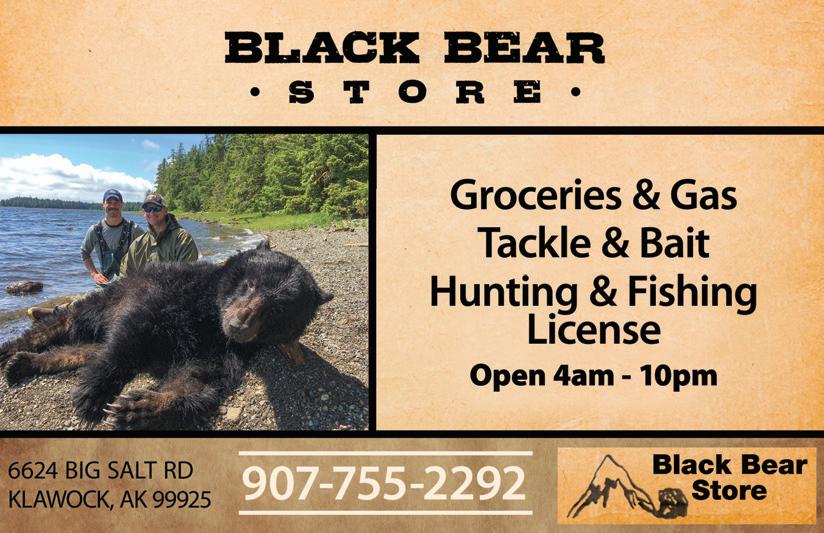

54 American Shooting Journal // March 2024

SCATTERGUN ALLEY GETTING A HANDLE ON HEVI-SHOT
The lowdown on the Oregon nontoxic shotshell company’s materials and the game birds to use them on.
STORY BY LARRY CASE • PHOTOS COURTESY OF HEVI-SHOT
The turkey shotgun and shotshell world has changed vastly in the past several years. Once upon a time, we used pretty much the same shotgun for about everything. Ducks, pheasants, rabbits, the odd deer now and then, as well as turkeys, all got shot with the same shotgun, often a Remington 870 or 1100, or maybe a Mossberg 500 pump gun.
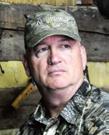
Nowadays, most of us would not think of turkey hunting without a shotgun specifically for that purpose. Sometimes it is a Benelli Super Black Eagle or a Mossberg 835 tricked out with optics, looking like something that Buck Rogers (the title character of the 1930s science fiction comic strip, and later the 1970s TV show) would be toting.
Shotgun shells have changed even more. In the pre-turkey-craze days, we used whatever shells were found in our vest from our last hunting trip. Winchester Double X Magnums in No. 4 or 6 shot and Remington Nitro shells seemed to do just fine. We killed turkeys (and ducks and pheasants) with no problem, as long as we did not try to stretch the barrel – that is, not shoot at turkeys that were too far away, like over 40 yards.
SHOTSHELL MAKERS CHANGED all this, first with the advent of the Winchester Long Beard XR shotgun shells. In a stroke of
genius, Winchester engineers perfected a method of encasing shot pellets in a hard, clear plastic material that shatters instantly upon ignition of the shell and encases the shot charge in this buffering as it starts down the barrel. The result was greatly increased possible ranges on turkeys. To the amazement of many, including the turkeys, 60 yards became the new 40, as far as killing turkeys.
Winchester Long Beard XR shells (winchester.com) are still out there and some shotguns shoot them extremely well, by the way.
This went on for a few years until word started to get out that some real turkey nuts were loading their own shotshells with a new type of pellet made from a metal known as wolfram, or tungsten. This metal, in its purest form, made shotshell pellets that were almost twice as dense and hard as lead pellets and produced patterns and terminal ballistics (the pellets’ effectiveness in killing game birds) that were once thought of as impossible. Federal Ammunition (federalpremium .com) produced the first commercial tungsten super shot, or TSS, shotshells and the world has never been the same.
Tales of turkeys being knocked over at incredible ranges soon became old hat. The use of TSS brought up another phenomenon in the turkey shotgun world, in that it allowed the hunter to use subgauges like the 28 gauge and even the .410 bore to effectively hunt gobblers. The density of TSS allows it to be loaded in fine shot, like No. 9s. And with the
americanshootingjournal.com 55
Hevi-Shot’s Hevi Bismuth pellets are 22 percent denser than steel, and coupled with a velocity of 1,400 feet per second, this load will bring ducks out of the sky.
SCATTERGUN ALLEY
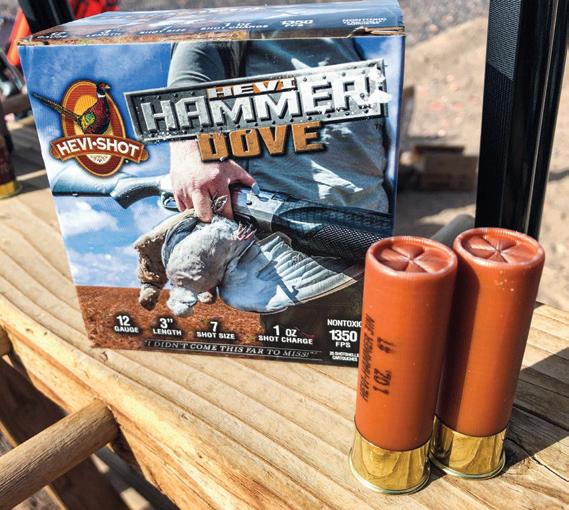
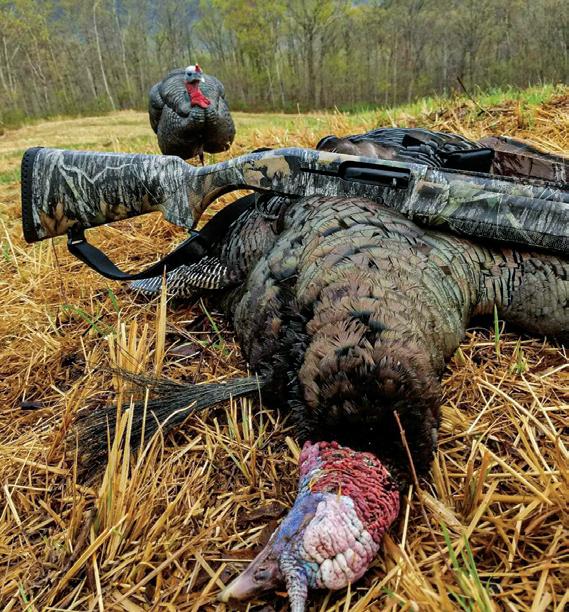
small shot, the shell can be loaded with sometimes twice the number of pellets, allowing for incredible numbers of hits in a pattern. Let’s just say these are not your grandad’s shotgun shells.
“I DIDN’T COME this far to miss!” is the motto of Hevi-Shot. This small, specialized ammo company based in Sweet Home, Oregon, which is located two hours south of Portland, is continuously working hard to provide the next generation of shotshell loads to hunters with its large and impressive selection of options. Hevi-Shot’s huge product line (hevishot.com) is even more impressive considering it only produces nontoxic shotshell hunting loads. The company doesn’t make centerfire or rimfire ammo (yet) and it doesn’t load anything with lead. So, for shotgunners looking for a big list of options for hunts in lead-restricted areas, this is it.
Hevi-Shot started up in the year 2000 with the goal of making waterfowl ammo that outperformed steel. To do this, the company spent more than a year developing its very own alloy mixture using tungsten and other metals. The result is a very heavy pellet that is far superior to steel, but also outperforms lead due to its amazing density. These “heavier than lead” pellets are now known as Hevi-Shot’s very own recipe of 12-grams-per-cubic-centimeter tungsten pellets. Somewhere along the way, Hevi-Shot also started crafting its own bismuth pellets, for which the company is also well known.
These homemade, specialized alloy materials – bismuth and 12 g/cc tungsten – allow Hevi-Shot to have full control of the quality process because the company crafts the pellets in-house. As a smaller outfit, Hevi-Shot had to rely on outside vendors for components and some manufacturing help. For more than two decades, while the company did quite well, it still had challenges caused by relying on others.
This changed in February 2021, when the ammunition powerhouse Vista Outdoor (vistaoutdoor.com) purchased
56 American Shooting Journal // March 2024
Hevi Hammer Dove is a great dove load, especially if you need to use nontoxic shot. Eighty-five percent of the load is precision steel and the rest is Hevi-Shot’s Hevi Bismuth.
TSS, or tungsten super shot, loads like Hevi-18 give you the maximum range possible for hung-up gobblers.
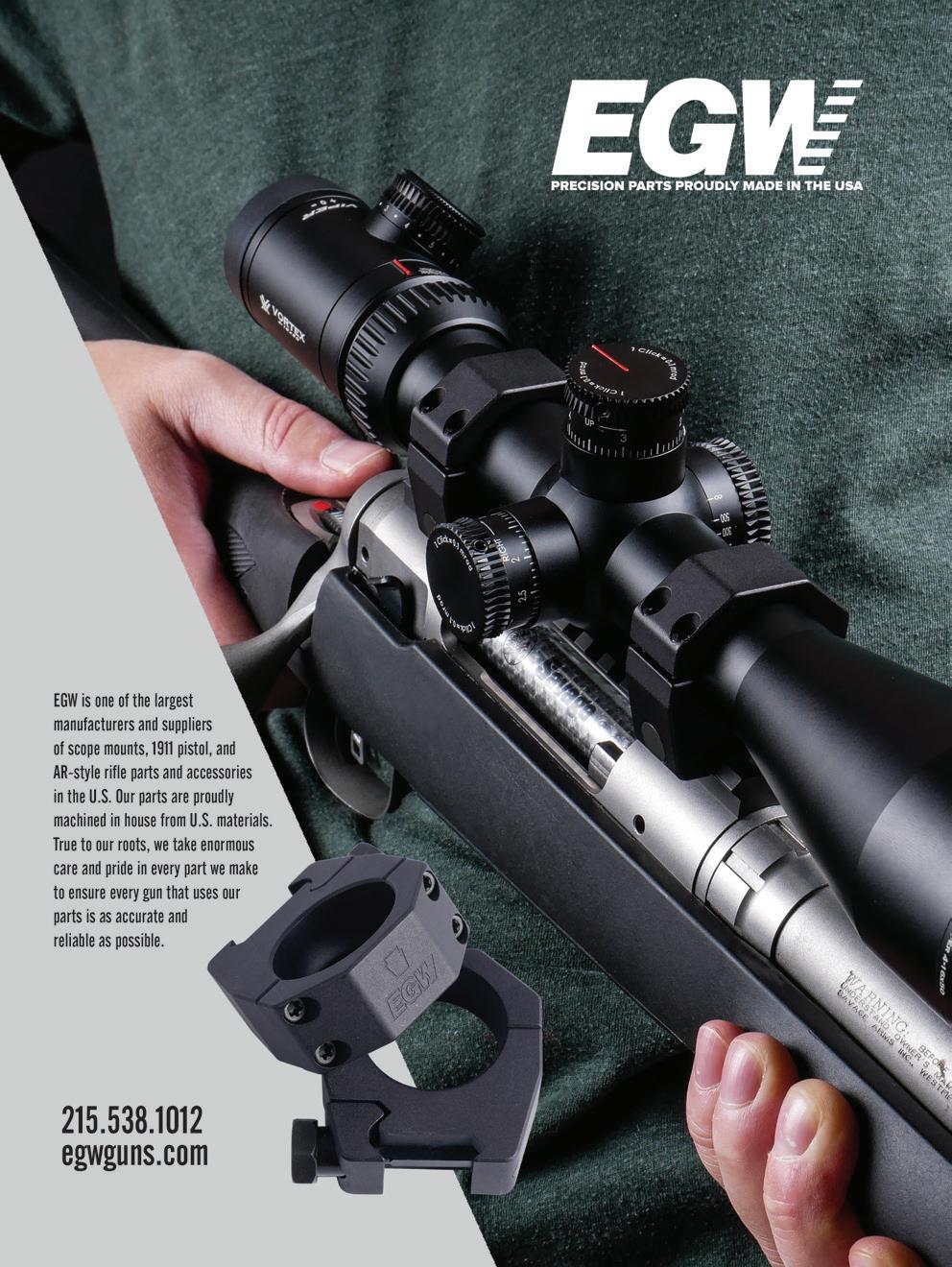
SCATTERGUN ALLEY
Hevi-Shot. This is the same company that owns Federal in Anoka, Minnesota; Speer/CCI in Lewiston, Idaho; and Remington Ammunition in Lonoke, Arkansas. Overnight, Hevi-Shot had access to quality resources and was backed by hundreds of years of factory ammo-making experience. While the company remains the same – its factory and American workforce in Sweet

Home still operate independently from its sister companies – Vista immediately made it stronger.
IN 2022, HEVI-SHOT reevaluated its catalog of offerings, condensing its list of products to be more simple and streamlined. But that doesn’t mean Hevi-Shot’s current offerings are few. Today, the company has approximately
Hevi Bismuth
a little less dense than tungsten, but also more economical.
Hevi-18 Turkey TSS pellets are made from 18-grams-percubic-centimeter tungsten, the purest form of tungsten that can currently be put into a shotgun pellet. They’re available for 12-, 20- and 28-gauge and .410-bore shotguns, and size 7 and 9 shot.
110 specific loadings that are organized into 13 different product families: six for waterfowl, three for upland birds, three for turkeys and one for predators. Because of its large size, Hevi-Shot’s list of ammo options can still be confusing to comprehend.
The key to understanding the product line is grasping the company’s overall strategy of pellet materials and stacked payloads.
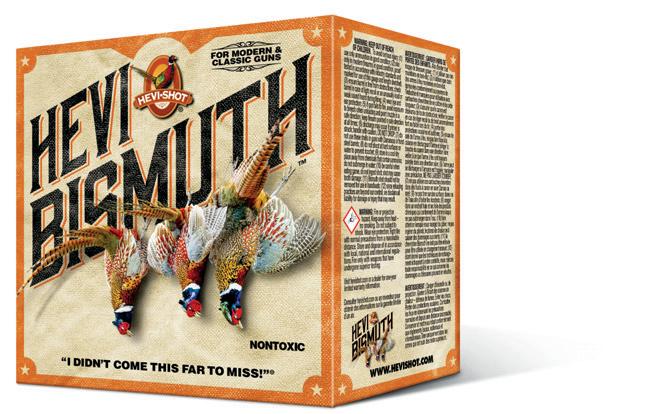
Hevi-Shot only loads nontoxic pellet materials: steel, bismuth or tungsten. Of these three shot materials, steel has the lightest density of 7.8 g/cc, bismuth is next at 9.6 g/cc, and tungsten is the heaviest at 12 g/cc. Again, Hevi-Shot does not load any product containing lead pellets. But for comparison’s sake, the density of lead is 11.2 g/cc, which falls between bismuth and tungsten.
The company also loads a full line of turkey-hunting ammo using ultradense TSS pellets, which have a density of 18 g/cc. Hevi-Shot listened to its customers and now offers wild turkey loads using sourced TSS, coupled with its quality components and manufacturing expertise.
Regarding lethality, it’s considered to be the same order: steel, bismuth, then tungsten. A denser (heavier)
58 American Shooting Journal // March 2024
loads are

SCATTERGUN ALLEY
Magnum Blend turkey loads are a mix of shot sizes 5, 6 and 7 in pellets that are a 12 g/cc blend of tungsten, which is somewhat less expensive than the 18 g/cc blend of tungsten shot in the TSS line.

material will carry its velocity and penetration energy longer. This means it will hit harder (faster), plus carry its lethality (in foot-pounds) out to greater distances. Think about it: If you had a wiffle ball, a tennis ball and a baseball thrown at you at the same speed, which one would hurt the most?
Density also relates to shot size. A 1-centimeter cube of steel weighs a lot less than a 1-centimeter cube of bismuth or tungsten. Because bismuth is 22 percent denser than steel, hunters can
In addition to Magnum Blend and Hevi-18, HeviMetal Turkey is the company’s third gobbler offering. Hevi-Shot also has six product lines for waterfowl, three for upland birds and one for predators.
choose loads that are one size smaller than steel yet still have the same or better lethality. With tungsten, you can go three sizes smaller. The size of the projectile affects penetration. If punctured in the foot by a large nail or a small needle, which one do you think would go deeper? That example of penetration is the same as when shooting large size No. 2 shot compared to tiny No. 9 shot. The size of shot also affects pellet count. In a 3-inch shotshell hull, you can fit a lot more pellets of No.
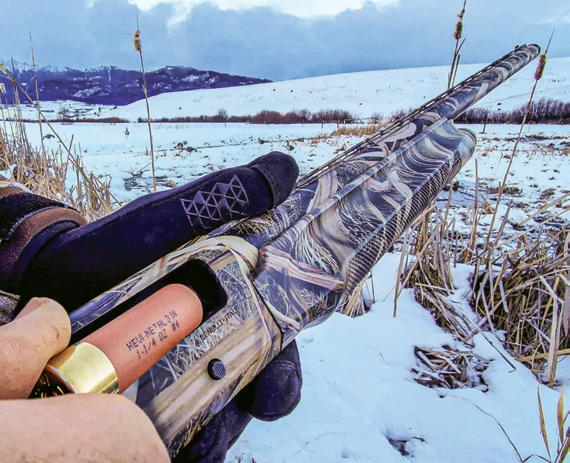
9 compared to No. 2.
So, if you choose a shotshell that features a material that is denser than another material, you will benefit by having more downrange energy, deeper penetration and/or higher pellet counts, which lead to fuller patterns with more hits on target at longer distances. It’s just science and it just makes sense.
Beyond that, Hevi-Shot shells are loaded with either straight or stacked payloads. Straight means all of one material. Stacked means multiple shot types in one shell. For Hevi-Shot, that means a layer of steel pellets and a layer of bismuth pellets loaded in the same shell. This stacked, dual-shot design improves on a shotgun shell’s performance.
TO SUM UP, Hevi-Shot’s three shot materials and two payload types all have a specific purpose in the company’s product line. Steel satisfies customers looking for a good option that is less expensive, yet is effective at close and medium distances (but not for turkey hunting). However, a load that has both steel and bismuth is a better solution because stacking offers an increase to the shell’s overall lethal effectiveness and adds only a modest price increase. Bismuth is slightly more expensive than steel, but its performance is closer to that of lead loads, so a load with 100-percent bismuth is an even better solution. And finally, while tungsten comes with a larger price tag, it is the most effective at long distances compared to anything else, so tungsten loads are Hevi-Shot’s best solution.
Editor’s note: Larry Case has been a devoted outdoorsman since he was a child. He will admit to an addiction to turkey hunting (spring and fall), but refuses any treatment. He enjoys the company of gobblers and cur dogs that are loud and people who speak the truth softly. Case served 36 years as a game warden in West Virginia and retired with the rank of district captain. You can check out his podcast and other stories at gunsandcornbred.com.
60 American Shooting Journal // March 2024
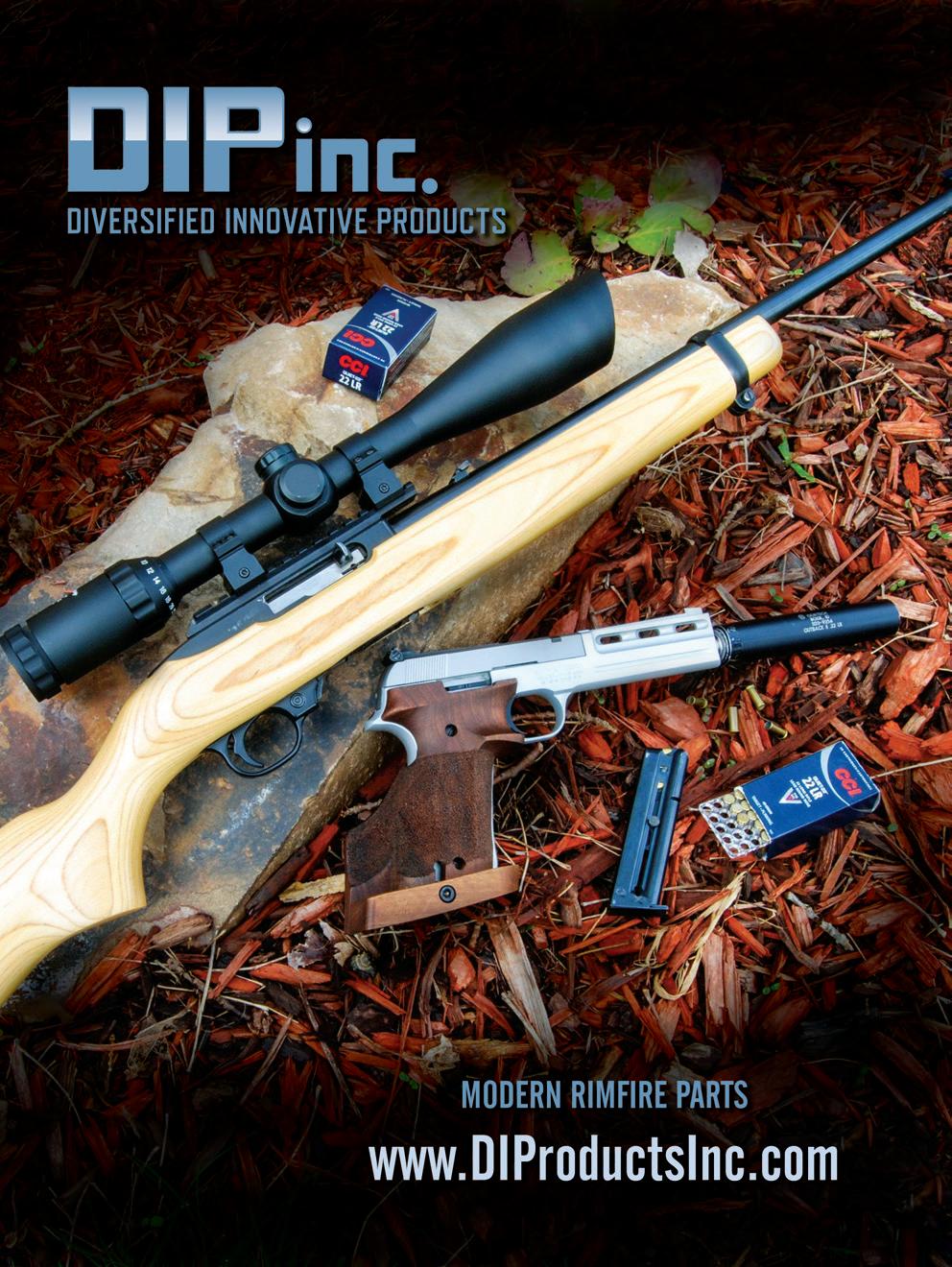
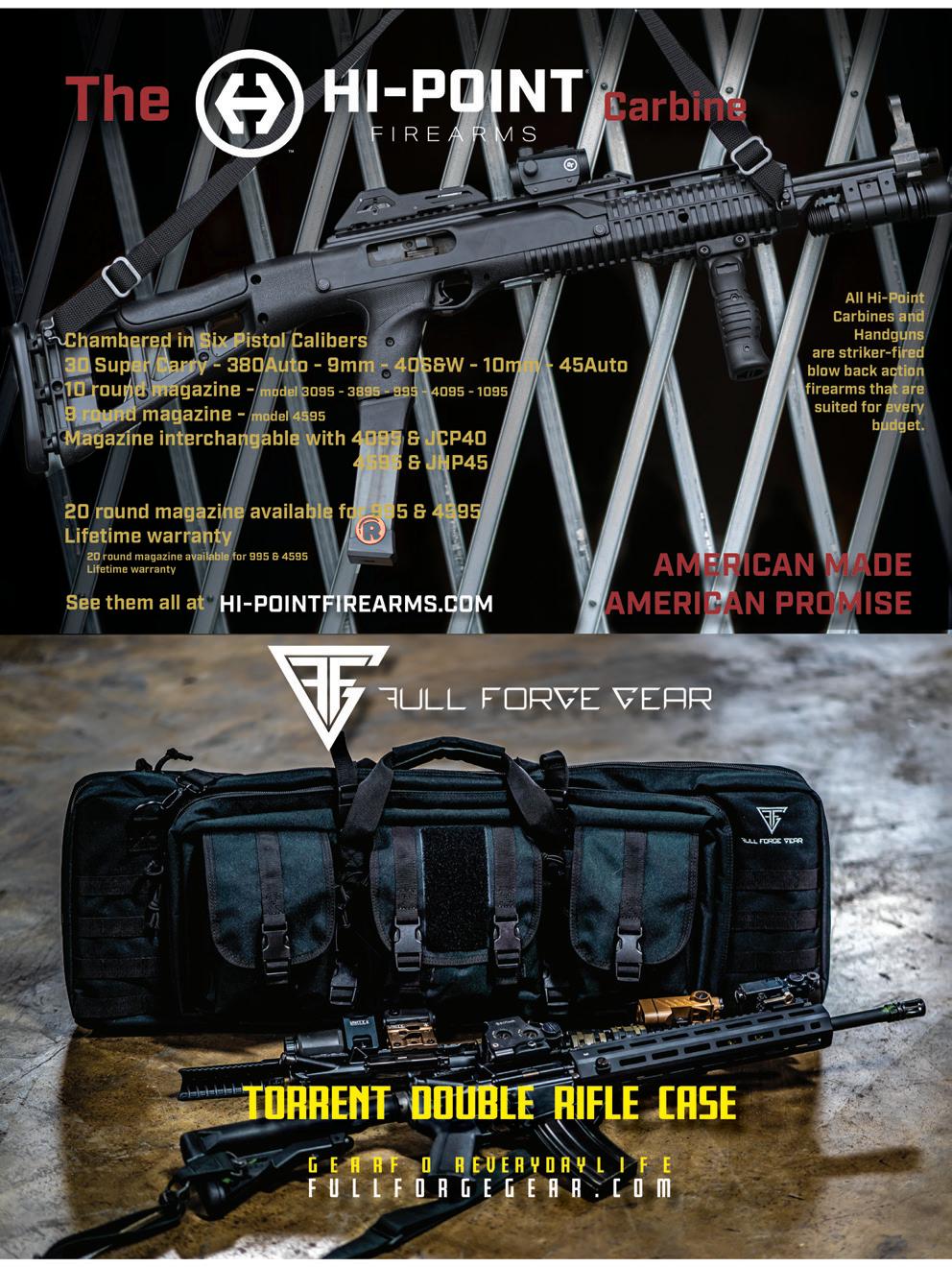

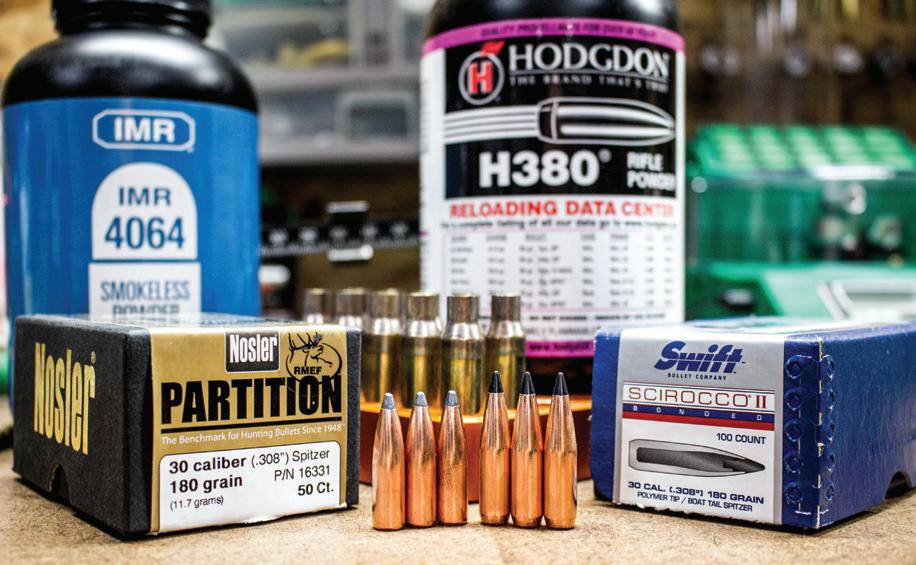
MEET SOME OF MY FAVORITE COMPONENT HUNTING BULLETS
For a hunter, the fruits of success aren’t just a full freezer when the game also falls to your own handloads.
STORY BY PHIL MASSARO • PHOTOS BY MASSARO MEDIA GROUP
There was a time, long before I became a gun writer, when I had several big game rifles that had never fired a factory-loaded cartridge, at least not under my watch. I had learned how to handload my ammunition from my dad – Ol’ Grumpy Pants – in the early 1990s, and it would be

two decades later that I’d need to start to use factory ammunition in article assignments and on media hunts. In some weird sort of way, it felt dirty, as I had taken great pains to become the best handloader I could be and across a good number of hunts, including three African safaris, I’d taken all sorts of game with handloaded ammunition.
The fact of the matter is that in the early ’90s, the factory ammunition wasn’t nearly as good as it is today.
Thirty years has assuredly seen a drastic improvement in the quality, consistency and value of factory ammunition, almost to the point that it has diminished the value of handloading ammo at all.
However, you can take the handloader away from the reloading bench, but you can’t get the bench away from the handloader. There is still a pride associated with ammunition I’ve loaded myself, especially when I use it
BULLET BULLETIN americanshootingjournal.com 63 BROUGHT TO YOU BY
Sometimes a handloaded component bullet is absolutely perfect for the job at hand.
BULLET BULLETIN
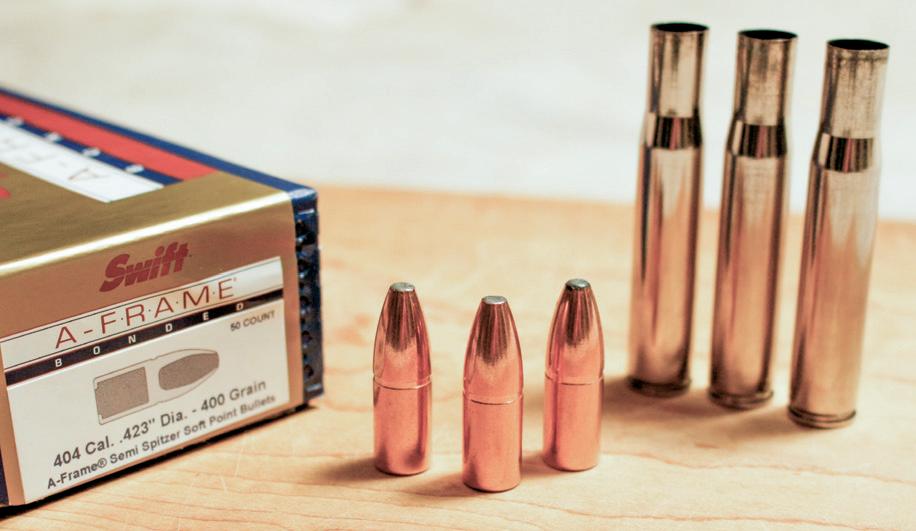
on a special hunt. And while the factoryloaded ammunition offers a shooter many more options than ever before, there are still those component bullets that are unavailable in a factory load, aren’t loaded in a particular cartridge, or just perform better when handloaded.
IN THIS ARTICLE, I’d like to highlight some of my favorite component bullets. Some
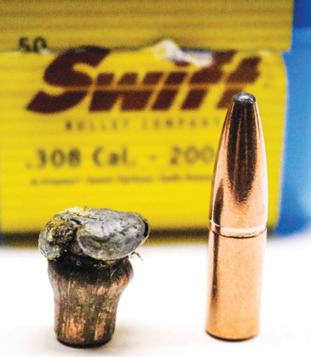
are available in factory-loaded form and some are only accessible by handloading ammunition, yet they all have been part of some of my best adventures. To wit: Swift A-Frame: In the early 2000s, I read about a bullet that surpassed even the Nosler Partition in terms of penetration and toughness. Using a similar dual-core design to John Nosler’s namesake, but with a much
thicker jacket and the front core chemically bonded to that jacket, the Swift A-Frame first came up on my radar while preparing for a bison hunt in South Dakota. Loaded in my Winchester 70 in .375 Holland & Holland Magnum, that bullet would also accompany me on my first three safaris, as well as on North American hunts. Whether it’s a .300 Winchester
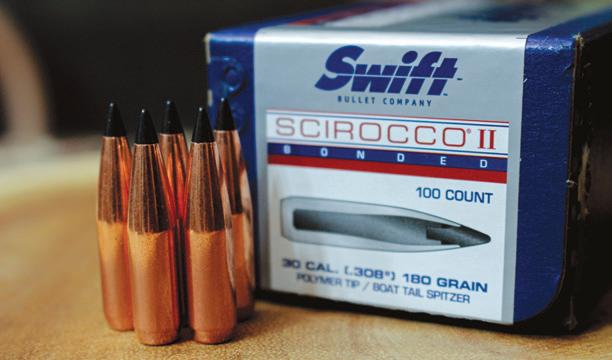
64 American Shooting Journal // March 2024
The Swift A-Frame is tough as nails, as well as wonderfully accurate. It has worked for author Phil Massaro in numerous cartridges, and on all sorts of different game animals.
A recovered Swift A-Frame – from a large South African ostrich – showing the classic rivet shape behind the partition between the cores.
The Swift Scirocco II will shoot plenty flat enough for hunting purposes, yet the thick jacket, bonded to the core, allows the bullet to maintain its integrity even when impact velocities are high.
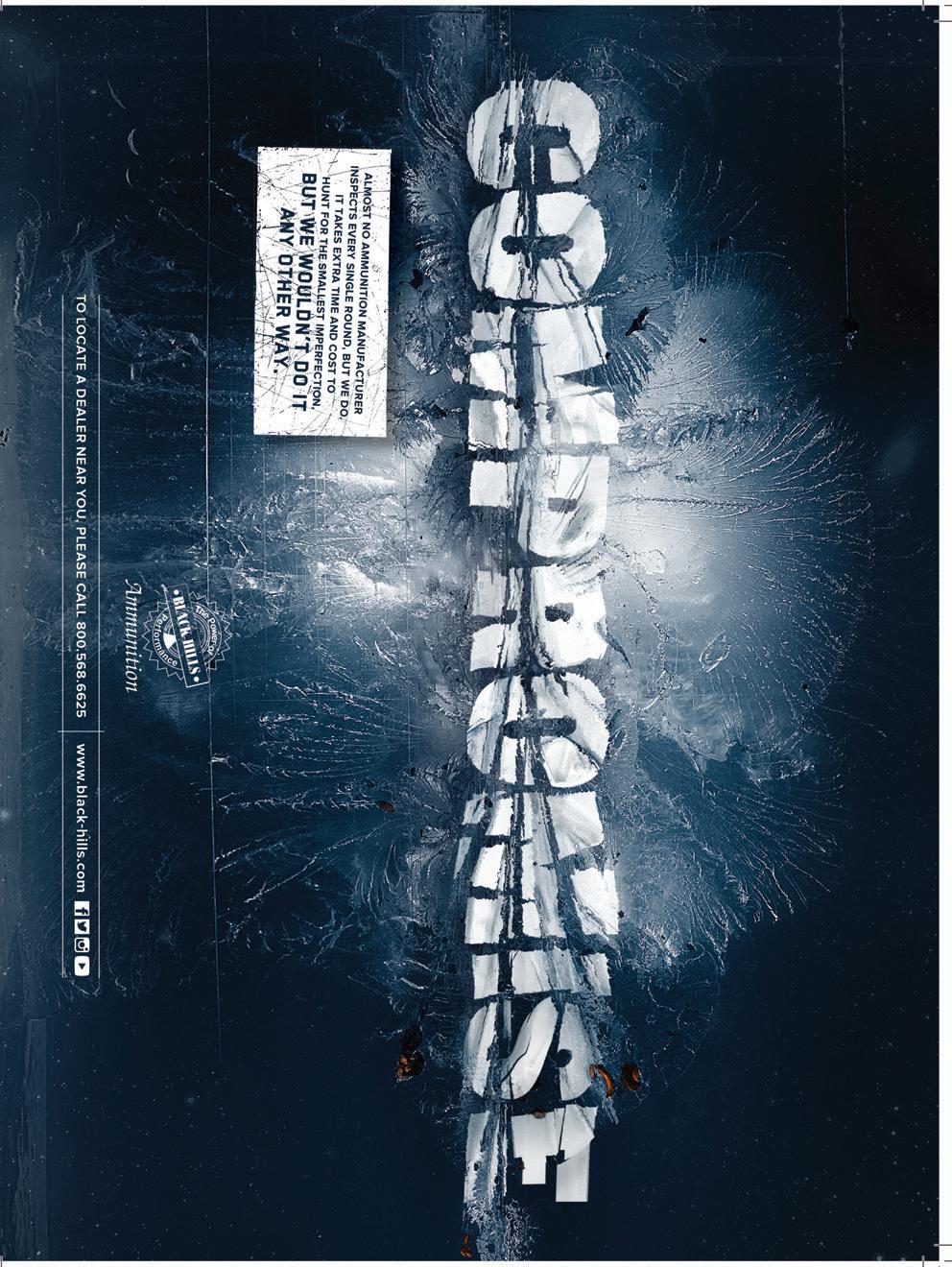
BULLET BULLETIN
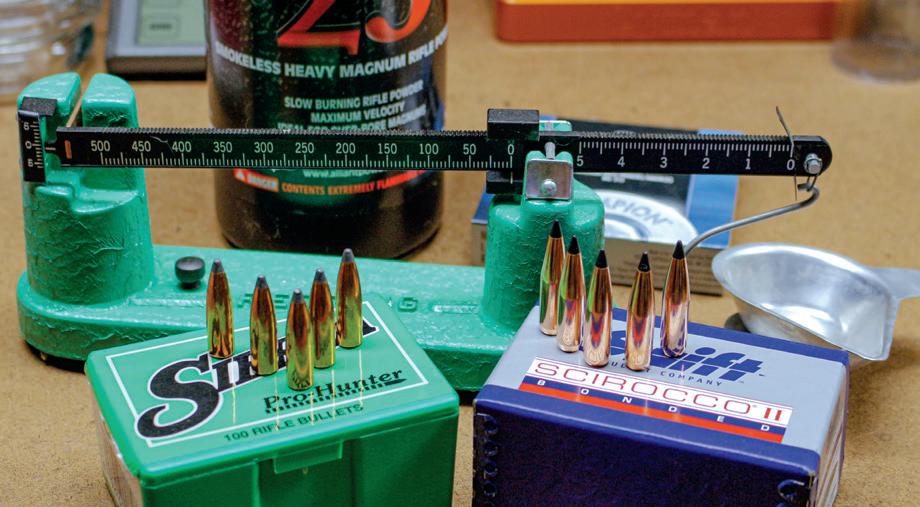
Depending on the application, a Sierra ProHunter or Swift Scirocco II might fit the bill; having the ability to handload component bullets gives the hunter the option.
Sierra’s MatchKing is designed for target work, but is also very effective on predators like coyotes and foxes. It has represented the benchmark for accuracy for decades.
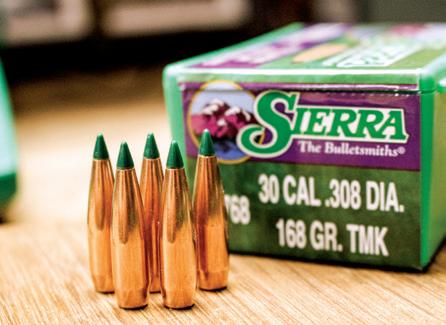
Magnum, .375 H&H or .416 Remington Magnum, the Swift A-Frame has never let me down, no matter what I’ve asked of it. It has been loaded in Remington ammunition, as well as Federal Premium’s Safari line, but it has been in component form that I’ve had so many success stories. The A-Frame remains an excellent tool for those who need a stiff expanding bullet.
Swift Scirocco II: It was a logical decision to try the sister projectile to the A-Frame, the Scirocco II, as
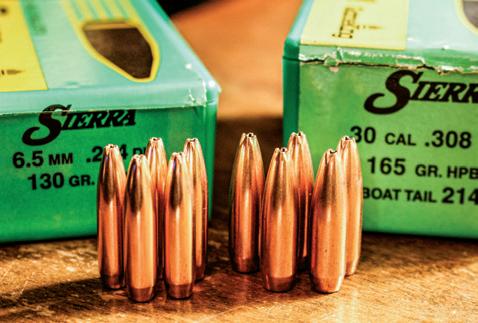
If you want a bullet that flies as accurately as a MatchKing, yet is tough enough for even magnum cartridges, look no further than the Sierra GameKing hollowpoint.
it bears the same bonded core and thick jacket of the A-Frame without the partition, yet offers a sleek ogive terminating in the signature black polymer tip, with a boattail on the opposite end. Designed for hunting at longer ranges, yet tough enough to handle higher impact velocities up close, I used the Swift Scirocco II to take my first black bear in Quebec, with many more animals following that experience. It gives wonderful accuracy, and hits like a hammer.
Sierra MatchKing, GameKing and ProHunter: My father swore by Sierra bullets when I was a young kid, and I remember staring at those green and black boxes with wonder. I would go on to rely on the Sierra bullets – in many forms – for a good number of my handloads. The MatchKing bullets were, and often are, the benchmark for rifle accuracy, and I rely on them in .22 caliber for varmint and predator work in my .22-250 Remington. The GameKing projectiles have long been
66 American Shooting Journal // March 2024

BULLET BULLETIN



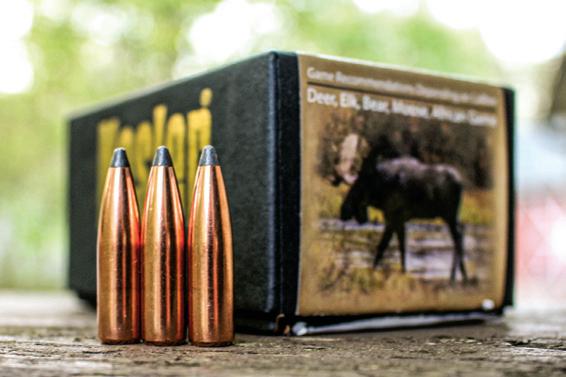
my go-to for the .308 Winchester – the 165-grain HPBT is stellar – and they also give excellent results in my .300 Winchester Magnum. The 250- and 300-grain bullets work great for a plains game load in the .375 H&H Magnum. Sierra’s cup-and-core design has been a staple in my hunting loads for over three decades, and that probably won’t change any time soon. From the taiga of Quebec to the Karoo semidesert of South Africa, they just plain work.
Hornady InterLock: Widely available in factory loads, Hornady’s InterLock was only available as a component bullet when I first started handloading ammunition. The design is simple: It’s a cup-and-core bullet with a jacket that has an internal ring jutting into the lead core, which helps to keep the bullet together during the terminal phase. The simplicity – and correlative affordability – was what attracted me to the projectile three decades ago, and it was a 165-grain InterLock in my .308 Winchester that took the first big animal from my handloads. I’ve used it all over the globe, for Scottish red deer, African leopard, and for deer and bear here in the States. Weatherby loads it in their factory ammo, as does Hornady, but it has been a staple among handloaders
68 American Shooting Journal // March 2024
Hornady’s InterLock is available in all sorts of factory ammo choices, but is equally wonderful in the hands of a handloader. The author used one for a leopard in Zimbabwe.
For a dangerous game cartridge, the author has yet to find a tougher bullet than Woodleigh’s Hydrostatically Stabilized Solid; even for the biggest bull elephant, there may not be a better bullet.
Massaro has used the tough Peregrine BushMaster – available only to the handloaders – for a number of Cape buffalo and plains game across Africa.
Nosler’s fantastic Partition – approaching its 80th birthday – remains a great do-all projectile; in component form it can be used in the obscure cartridges through handloading.
SIMPLY BETTER BULLETS










406-261-0010 • hammerbullets.com
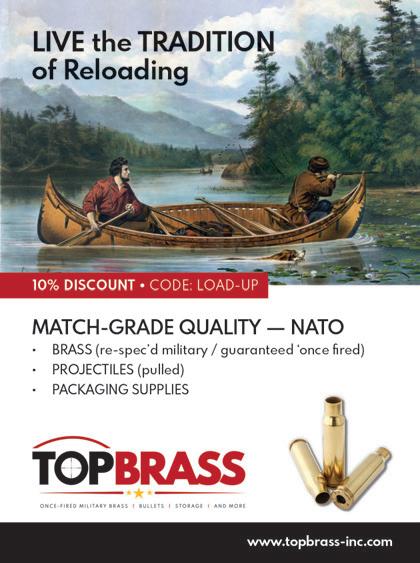

americanshootingjournal.com 69
Trust HAMMER BULLETS for superior accuracy and better big game terminal performance.
PURE COPPER, LEAD-FREE • PATENTED DESIGN SATISFACTION GUARANTEED OR YOUR MONEY BACK.
BULLET BULLETIN
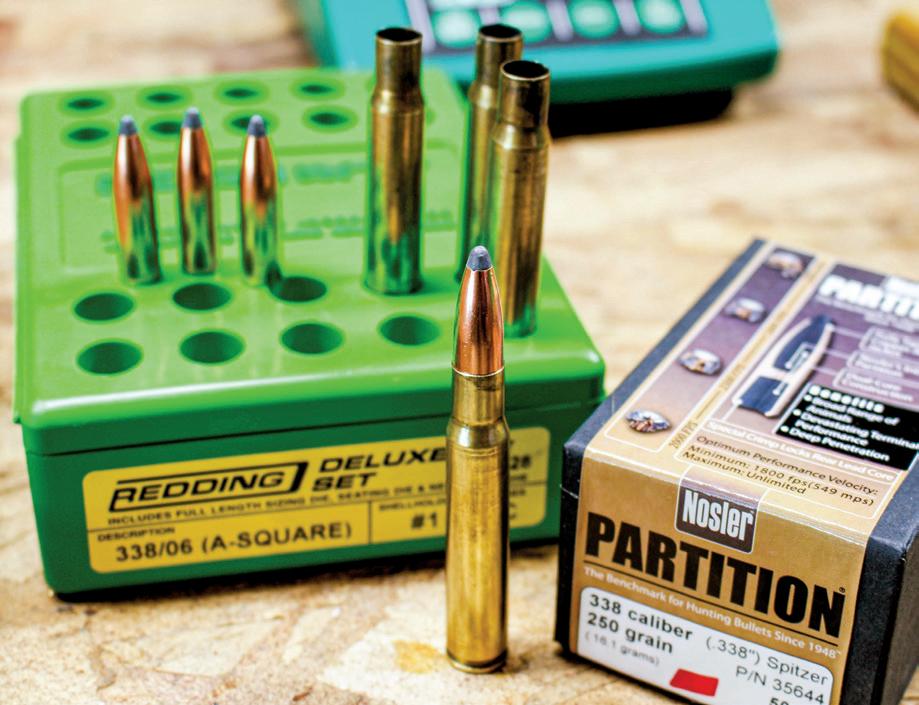
While there is very little loaded ammo for the .338-06 A-Square, a good Nosler Partition handloaded in this case will keep a hunter smiling for years. for decades.
Peregrine BushMaster: This South African monometal projectile is one bad hombre, fully capable of taking all of the world’s game, with the exception of elephant (where a solid or nonexpanding bullet is required). With a deep hollowpoint covered by a flushmounted bronze cap – trapping a cavity of air underneath – the BushMaster uses that compressed air to drive the sidewalls outward upon impact. I’ve taken a number of game species in Africa, including several Cape buffalo, with these projectiles, and I rank them among the best I’ve used. Wonderfully accurate and offering seriously deep penetration on the thick-skinned animals, the Peregrine BushMaster is
one serious bullet when your projectile truly matters.
Woodleigh Hydrostatically Stabilized Solid: Imported from “Down Under,” Australia’s Woodleigh bullets are some of the finest offerings available. Their Weldcore softpoints are also a favorite, but if pressed to name my favorite dangerous game bullet, it’d be their Hydrostatically Stabilized Solid, or Hydro for short. They are loaded in Federal’s Safari ammo line, but I first met them in component form, to be used in my beloved .404 Jeffery. I used that 400-grain, .423-inch-diameter Hydro to take a huge-bodied bull elephant in northwestern Zimbabwe, and it is the only bullet I’ve ever seen knock
a Cape buffalo off its feet. The small dish of copper at the nose creates a cavitation bubble upon striking fluidrich flesh, and makes its own path for deep penetration. Two body shots on that bull elephant at 16 yards saw both projectiles pass completely through the animal. Want an insurance policy when hunting dangerous game? Invest in the Woodleigh Hydro.
Nosler Partition: Perhaps the original premium projectile, the Nosler Partition has long been the friend of the handloader. Currently available in both Nosler and Federal factory ammo, it remains an industry standard for the handloader who wants more than a cup-and-core bullet can offer. There’s not much to say that hasn’t already
70 American Shooting Journal // March 2024
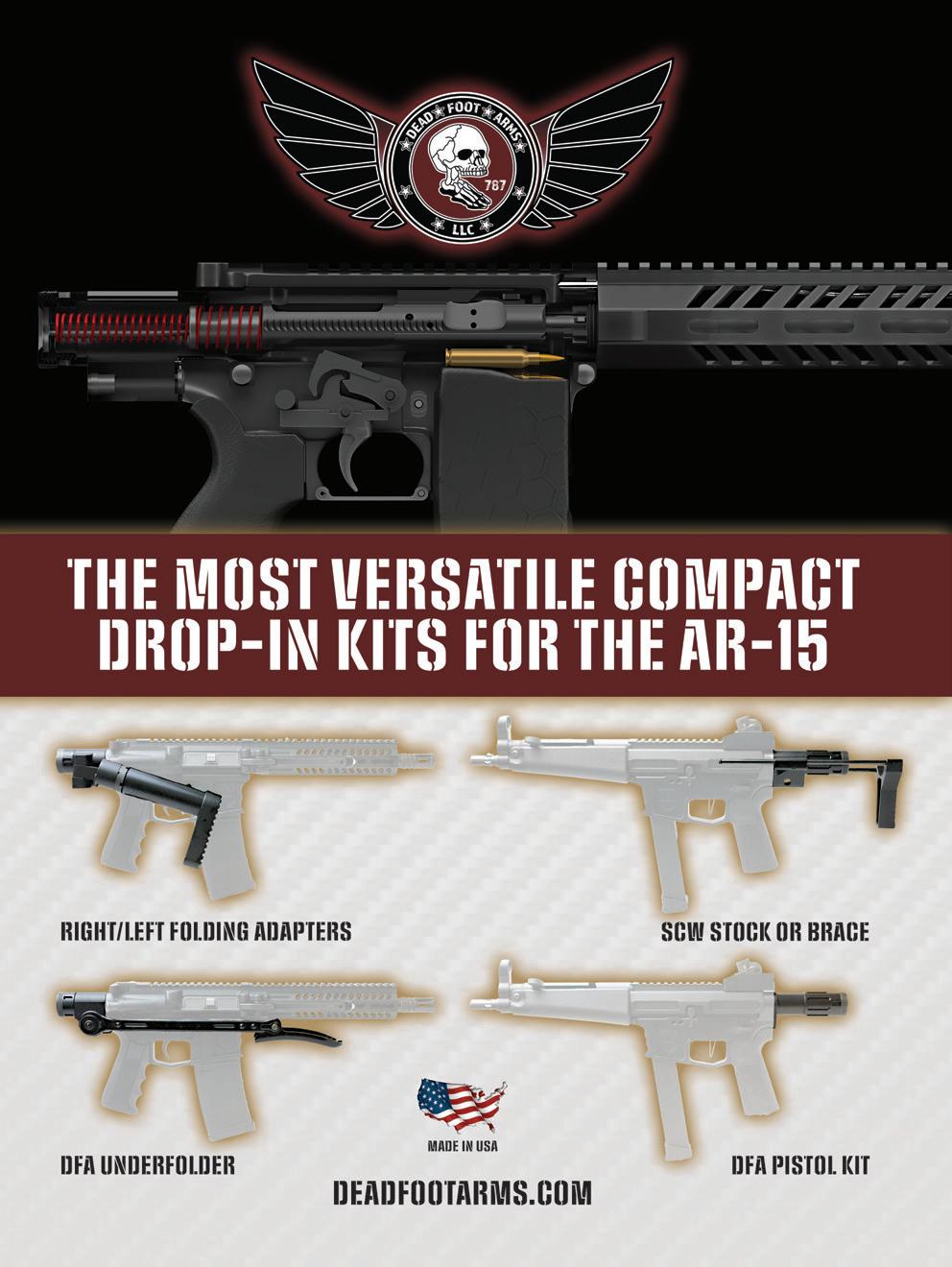
BULLET BULLETIN
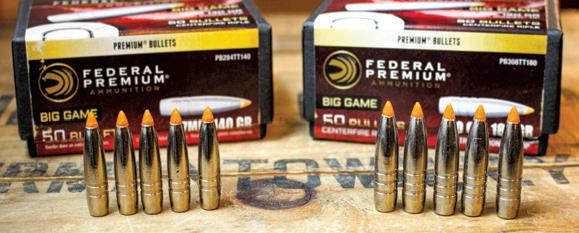
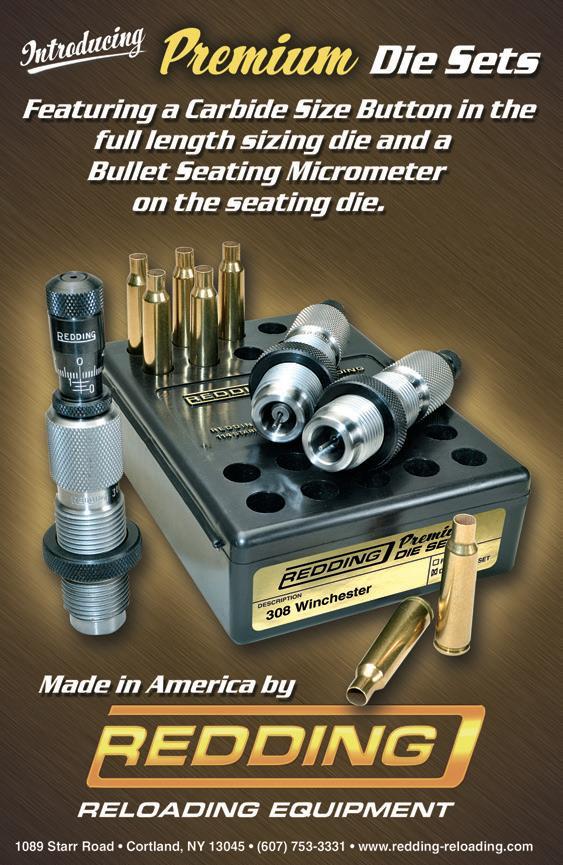
been written about the Partition: It uses a wall of gilding metal between two cores so that the front half of the bullet can give great expansion, while the rear section of the bullet maintains integrity for deep penetration. Deer, bear, buffalo, elk, moose – all are well served by a Nosler Partition. They don’t take up a ton of case capacity, yet still give that classic terminal performance.
Federal Trophy Bonded Tip: Loaded in a good number of Federal Premium’s cartridges, the Trophy Bonded Tip is also available in component form, and I’m glad it is. The Trophy Bonded Tip is the son of the Trophy Bonded Bear Claw, having the same short lead core up front (bonded to the jacket) and long copper shank in the rear of the bullet. But unlike its father, it has a polymer tip and boattail to improve the ballistic coefficient value, making it a great choice for longer shots. They are tough bullets, and hunters will struggle to keep them in a game animal. From North America to Africa, and on game as large and tough as eland and zebra, the Trophy Bonded Tip has been a stellar performer. That lead core at the nose of the bullet helps with straightline penetration, and the long copper shank at the rear is what gives the high weight retention associated with this bullet – if you can recover one. My .280 Ackley Improved and .300 H&H Magnum both perform very well with this bullet, as do more mainstream choices like the .300 Winchester Magnum and .308 Winchester.
Badlands Precision Super Bulldozer
2: Here’s a boutique bullet from a small company in South Dakota that I’ve really come to love. The brainchild of George Fournier, the Badlands Precision Super Bulldozer and its sleeker younger brother, the Super Bulldozer 2, are lead-free copper alloy projectiles with a boattail and an aluminum tip to maintain ballistic coefficient values. The Super Bulldozer design is suitable for conventional twist-rate barrels, while the Super Bulldozer 2 variant will usually
72 American Shooting Journal // March 2024
Federal’s Trophy Bonded Tip is a vastly underrated component projectile. Derived from the Trophy Bonded Bear Claw, it is a tough bullet and you’ll have trouble keeping one in an animal for recovery.
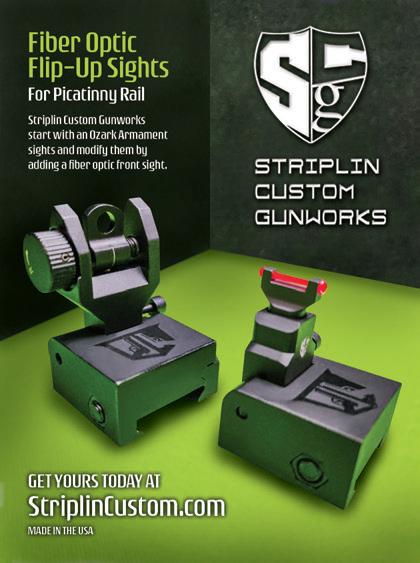
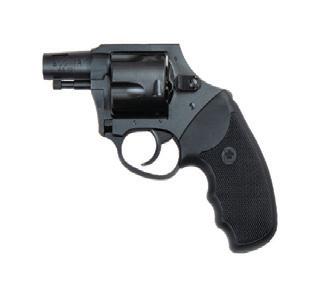
PERSONAL PROTECTION

Boomer Bulldog® Series
A compact version of the Charter Arms® classic .44 Bulldog®, Boomer is designed specifically for concealed carry and close-quarters defense situations. It features a DAO hammer, neoprene combat rubber grips and a Blacknitride+™ or Stainless Steel finish. Boomer’s 2-inch tapered barrel is ported to reduce recoil and it has no front sight to have a nosnag profile and hinder a quick draw. Sleek and compact, yet ready to make a big bang when you need it.

Pathfinder® Series

The Charter Arms® versatile 8 shot Pathfinder®, available in .22 Long Rifle or .22 Magnum, is the perfect revolver for ranchers and farmers old and new. This revolver has the look, feel and weight of the highercaliber revolvers of western lore. This low recoil firearm will allow you to gain proficiency while using relatively inexpensive .22 ammo. The .22 Pathfinder® will turn a few tin cans into an afternoon of fun.

PROFESSIONAL series
The PROFESSIONAL offers up seven rounds of powerful .32 H&R Magnum in a package that is designed to be easy to carry, comfortable to shoot and capable in the face of danger. From the contoured grips to the sevenround cylinder to the 3-inch barrel to the HIVIZ LitePipe front sight, The Charter Arms PROFESSIONAL revolvers are ready to come out swinging.
AVAILABLE THROUGH YOUR LOCAL DEALER
WWW.CHARTER ARMS.COM
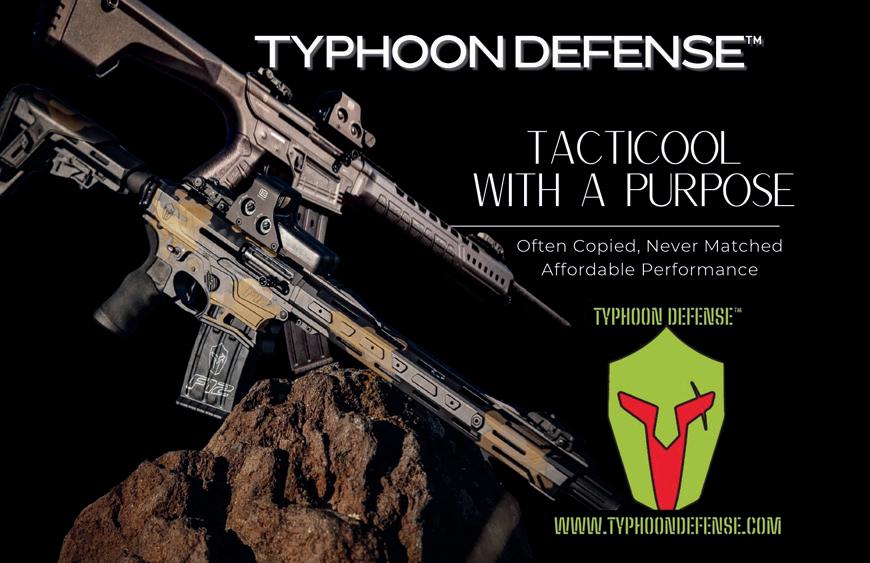
americanshootingjournal.com 73
BULLET BULLETIN
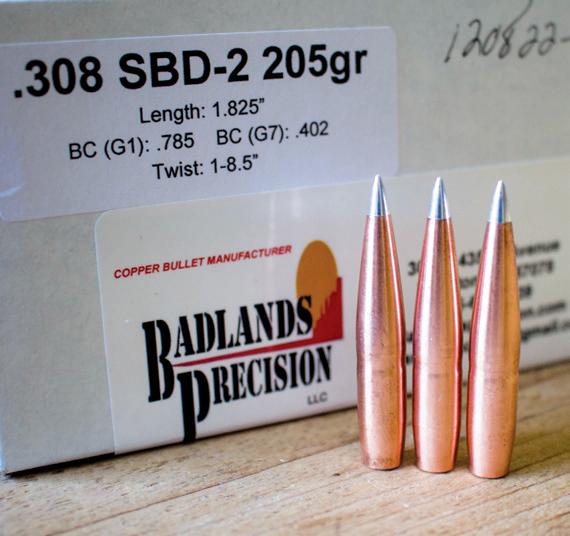
require a faster twist. My Browning 6.8 Western has a factory 1-in-7.5-inch twist, so it had no problem stabilizing the 140-grain Super Bulldozer 2, nor did it mind putting three of those bullets into ½-MOA groups or better. Perfect for longer hunting shots, and plenty tough enough for “woods distances,” the Badlands projectiles warrant an audition in your rifle.
SO, WHETHER YOU view handloading your ammunition as a labor of love, a relaxing pastime or a chore, the end result is always worth the effort to me. Factory ammunition is better than it’s ever been, but many times judicious handloading can better the accuracy, or at the very least give a velocity level the shooter prefers, be it higher or lower than factory spec. Bottom line: I’ve taken handloaded ammunition all over the globe and still enjoy seeing the fruits of my labor at the end of a successful hunt.

74 American Shooting Journal // March 2024
The Badlands Precision Super Bulldozer 2 generally requires a twist rate faster than normal, but it is fantastic both at the target board as well as on game animals at sane hunting ranges. These bullets are only available in component form.








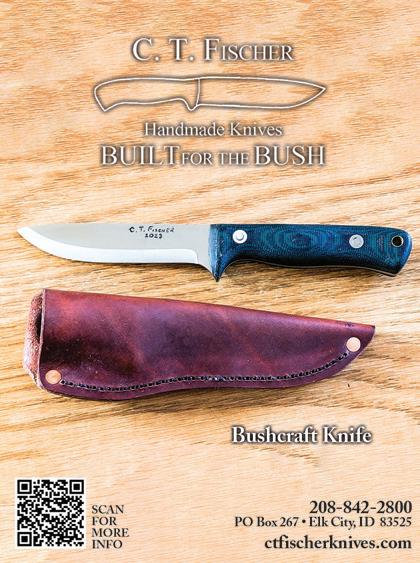

americanshootingjournal.com 75 Handcrafted Heirloom Quality Knives & Leather Goods made in america warlanderenterprises.com warlander_enterprises
HIGH QUALITY
BALL BEARING EQUIPPED CRANKHANDLE
QPQ NITRIDE
FINISH ON STEEL PARTS
FULL USE AND ACCESS
TO YOUR FACTORY TRIGGER
HEAT TREATED
ORDNANCE GRADE STEEL COMPONENTS
EASY INSTALLATION
WITH NO PERMANENT MODIFICATION TO YOUR FIREARM
STANDARD AR/SR PATTERN GRIP
WORKS WITH MOST AR TRIGGERS



The FG-15 is just a grip when not in use, when the handle is deployed it is a trigger crank, allowing you to fire one shot per 120 degrees you crank the handle.
The FG-15 has been tested on a 20 year old Bushmaster, new Aero Precision, Daniel Defenses, LWRC, Ruger, Bravo Co, to name a few. Aside from the twin stainless Japanese precision ball bearings, the FG-15 is an American made and seriously overbuilt piece of kit. Comprising of nitride 4140 steel machined components, hardened S7 trigger striker pin, and many more high quality components. The FG-15 was mechanically tested for over 1,000,000 shots fired. At that point, the components showed only a light surface finish wear.
In the prone and with your weapon on a bipod, it allows the user to consistently put shots on target without trigger fatigue. Any AR-15 type firearm that has a 1/4-28 thread pitch for the grip screw will accept the FG-15 grip. Which is 99% of AR-15 lower receivers.

THE THIS PRODUCT CAN’T BE SHIPPED TO THE FOLLOWING STATES CA, CO, CT, DE, FL, HI, IL, IA, MD, MA, MN, NJ, NY, RI, VA, WA, DC GET IT NOW AT freedomordnance.com
FG-15 TRIGGER ACTUATING GRIP

ALL IN A DAY’S WORK
L.E. SPOTLIGHT
Herding sea lions probably isn’t among most cop job qualifications, but it comes with the territory in Alaska.
STORY BY NICK PERNA PHOTO COURTESY OF VALDEZ POLICE DEPARTMENT
Did you hear the one about the sea lion that tried to cross the road? Sounds like the intro to a bad joke a third-grader might tell, but in this case it’s actually a true story.

Cops and animals cross paths quite frequently. In my career, I’ve given a few lost dogs a ride home and almost gotten sprayed by more than one skunk that had taken up residence in my department’s parking lot, among many other encounters with the wild kingdom.

There are those animals we expect to come in contact with while patrolling the streets – cats, dogs, deer, raccoons, etc. – and if you work in a more rural area, you may have a run-in with a bear or mountain lion. But if you work in Alaska, you never know what you might encounter.
IN OCTOBER 2022, the officers of the Valdez Police Department came face to face with the unlikeliest of animals – a sea lion. As you can probably guess, Valdez is near the ocean; it sits on upper Prince William Sound, at the end of the trans-Alaska oil pipeline.
The sea lion had wandered away from the beach and ended up in the small town. The beast then wandered into the street, causing a traffic jam. To be fair, this is about as close as a town with a population less than 4,000 can come to experiencing a traffic jam.
Bottom line, the meandering marine mammal was blocking the road. Given

the fact that sea lions can get up to 2,200 pounds and 8 feet long, one can easily shut down one or more lanes of traffic.
I know from my own personal experience that most police officers receive little if any training on how to handle animals. I’m guessing Alaska cops are a little more well-versed in dealing with them since their jurisdictions back up to critter habitats, but I sincerely doubt they receive any training on dealing with sea lions. The wonderful thing about police work is that, almost on a daily basis, you are presented with problems for which you were never taught a solution. So, when there isn’t a schoolbook answer, you do what Gunny Highway, Clint Eastwood’s character in Heartbreak Ridge, would tell you to do: “Adapt, improvise, overcome.”
The Valdez PD officers used their cars to herd the peripatetic pinniped from where it was located, in an RV park, back toward saltwater. Sea lions are
not the best at moving on land, so soon the beast got tired. It briefly blocked the main thoroughfare, the Richardson Highway. The owner of the RV park responded by firing up his backhoe, gently coaxing the animal along.
Eventually, the combined efforts of Valdez PD and the backhoe driver resulted in the sea lion making it back to the water unharmed.
The responding officers chose not to cite the animal for blocking traffic.
Editor’s note: Author Nick Perna is a sergeant with the Redwood City Police Department in Northern California. He previously served as a paratrooper in the US Army and is a veteran of Operation Iraqi Freedom. He also has a master’s degree from the University of San Francisco. He is a frequent contributor to multiple print and online forums on topics related to law enforcement, firearms, tactics and veterans issues.
americanshootingjournal.com 77
“I’m galumphing here!” A sea lion made its way into the southcentral Alaska town of Valdez and briefly blocked traffic across the main thoroughfare, but police officers – with the help of a local man and his backhoe – were able to herd it safely back to nearby Prince William Sound.
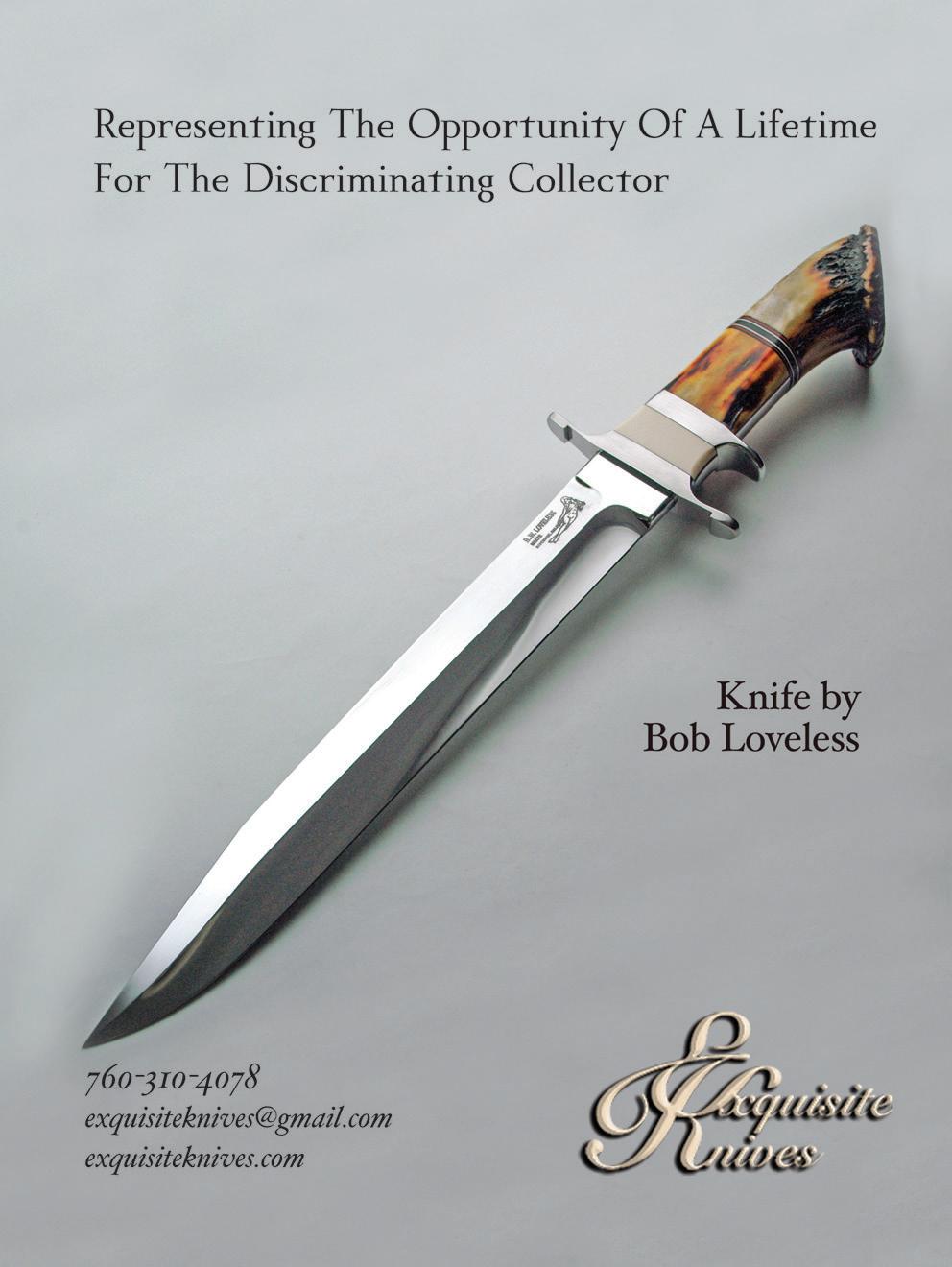
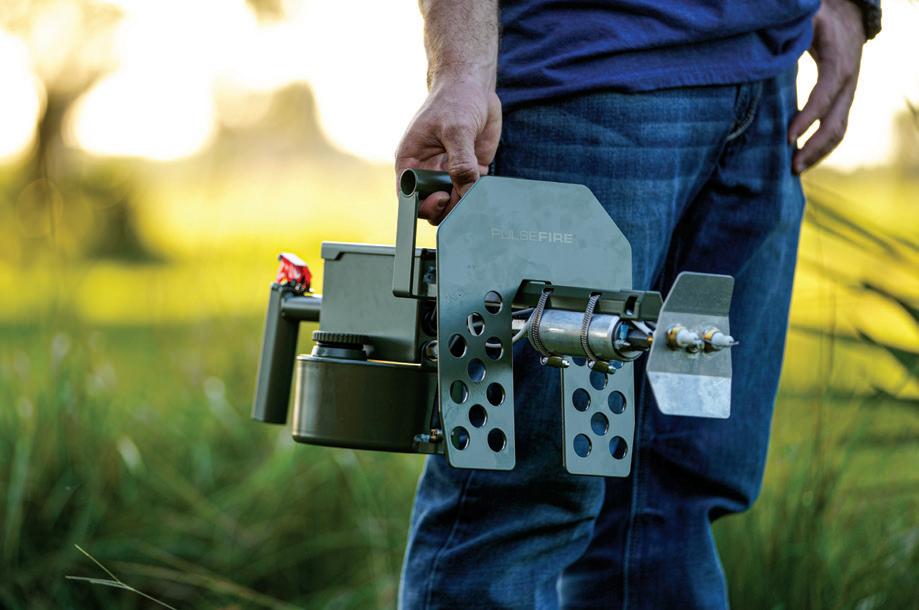
REACH OUT AND TORCH SOMETHING
Exothermic Technologies’ long-range handheld flamethrowers provide fire where and when you need it.
PHOTOS BY EXOTHERMIC TECHNOLOGIES
With its cutting-edge products, Exothermic Technologies has set the industry ablaze –literally. The company’s compact, lightweight, handheld flamethrowers are truly revolutionary. Here’s how this hot concept became a reality.
“Exothermic Technologies was formed in early 2019 after I flew to Florida to meet with the owner of one of the largest national sales rep groups
in the sporting goods and firearms industries,” explains Chris Byars, one of the company’s founders. “His best friend, Lewis Clanton, a 31-year firefighter, was interested in starting a business based around the flamethrower concept I brought to the table.”
He continues, “The meeting went well, we partnered up, and got to work. The first 900 units were built by St. Lucie County firefighters that Lewis worked with as we got things off the
ground, and every unit was QC’d by me. The sales rep group introduced the product to their network of physical dealers, who immediately sold out our entire inventory. It was clear what we had was going to be a hit, and we quickly expanded our operations to support the market demand.”
“Pardon the pun,” quips Byars, “but our sales spread like wildfire.”
americanshootingjournal.com 79
COMPANY SPOTLIGHT
THE PULSEFIRE LRT, or Long Range Torch,
Exothermic Technologies’ Pulsefire LRT, or Long Range Torch, uses an arc of electricity to ignite the stream of fuel.

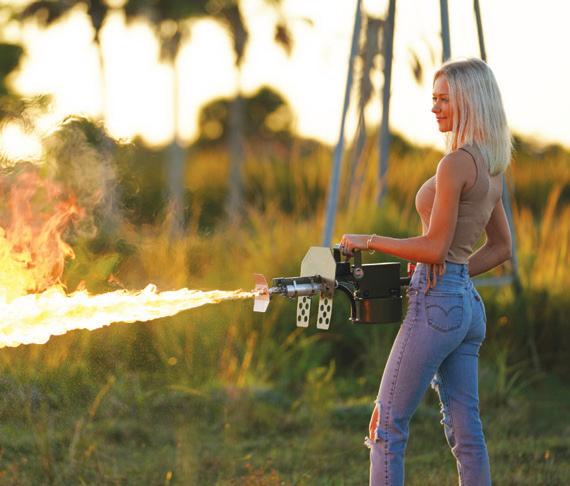
was introduced as the first truly ondemand handheld flamethrower. By using an arc of electricity to ignite the stream of fuel, users don’t need to rely on finding pressurized butane canisters and getting a pilot torch running like previous systems on the market. As long as you have power and fuel, you’re operational.
“The main goal in the development of the Pulsefire lineup (which also includes the Pulsefire UBF, or Underbarrel Flamethrower) was to create the safest way to apply fire at a distance,” says Byars. “Having automatic ignition without the need for pressurized fuel canisters was a key part of that design.”
He describes the design further, stating, “The fuel reservoir is filled with regular gasoline like any other outdoor tool, and is non-pressurized. An automotive-style fuel pump sends that fuel through the nozzle whenever the trigger button (beneath a flip-up safety cover) is pressed. A physical lever-operated valve at the nozzle, acting as a secondary safety, must also be opened before use, and ensures leak-free transport/storage.”
“Everything is powered by
the included, non-proprietary, rechargeable lithium battery. Integrated circuitry automatically cuts power to the trigger when voltage is low and it’s time to recharge or hotswap a new battery, which is typically after 15 to 20 tankfuls of fuel. We also have a very popular backpack reservoir accessory, which increases capacity to nearly 5 minutes of fuel.”
Today, Exothermic Technologies has sold over 45,000 units and has six
major distributors selling to almost every gun, hardware and outdoors store in the country, as well as numerous customers in the forestry and firefighting industries. Not only are these products dependable and easy to use, but they are also backed by a lifetime warranty.
“When most people think of a flamethrower, they think of heavy, pressurized tanks, and that can be intimidating, for good reason,” says Byars. “Our lineup is focused on efficiency. They reach out a reasonable distance (about 25 feet), are lightweight (about 6 pounds), and they are instant-action with arc ignition. Fill it up, turn it on and press the button, and you’re sending a stream of fire.”
What’s next for Exothermic Technologies? According to Byars, two patents were recently approved, including their arc ignition technology and numerous safety features, securing the company’s lead in the market of handheld torch systems.
“While the flagship Pulsefire LRT and the underbarrel Pulsefire UBF are our primary systems, new products are on the horizon that will satisfy customers interested in smaller and larger offerings,” he says. “We’re excited to share our products with a wider audience as we continue to grow.” ★
Editor’s note: For more information, visit exothermic.tech.
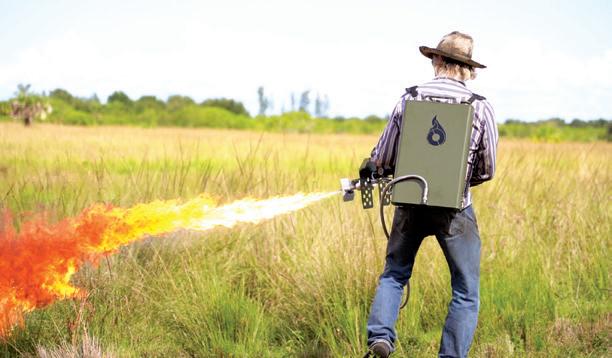
COMPANY SPOTLIGHT 80 American Shooting Journal // March 2024
The units are lightweight, about 6 pounds when loaded with fuel, and shoot flames out to 25 feet or so.
A backpack reservoir is also available from Exothermic and contains almost five minutes’ worth of fuel.
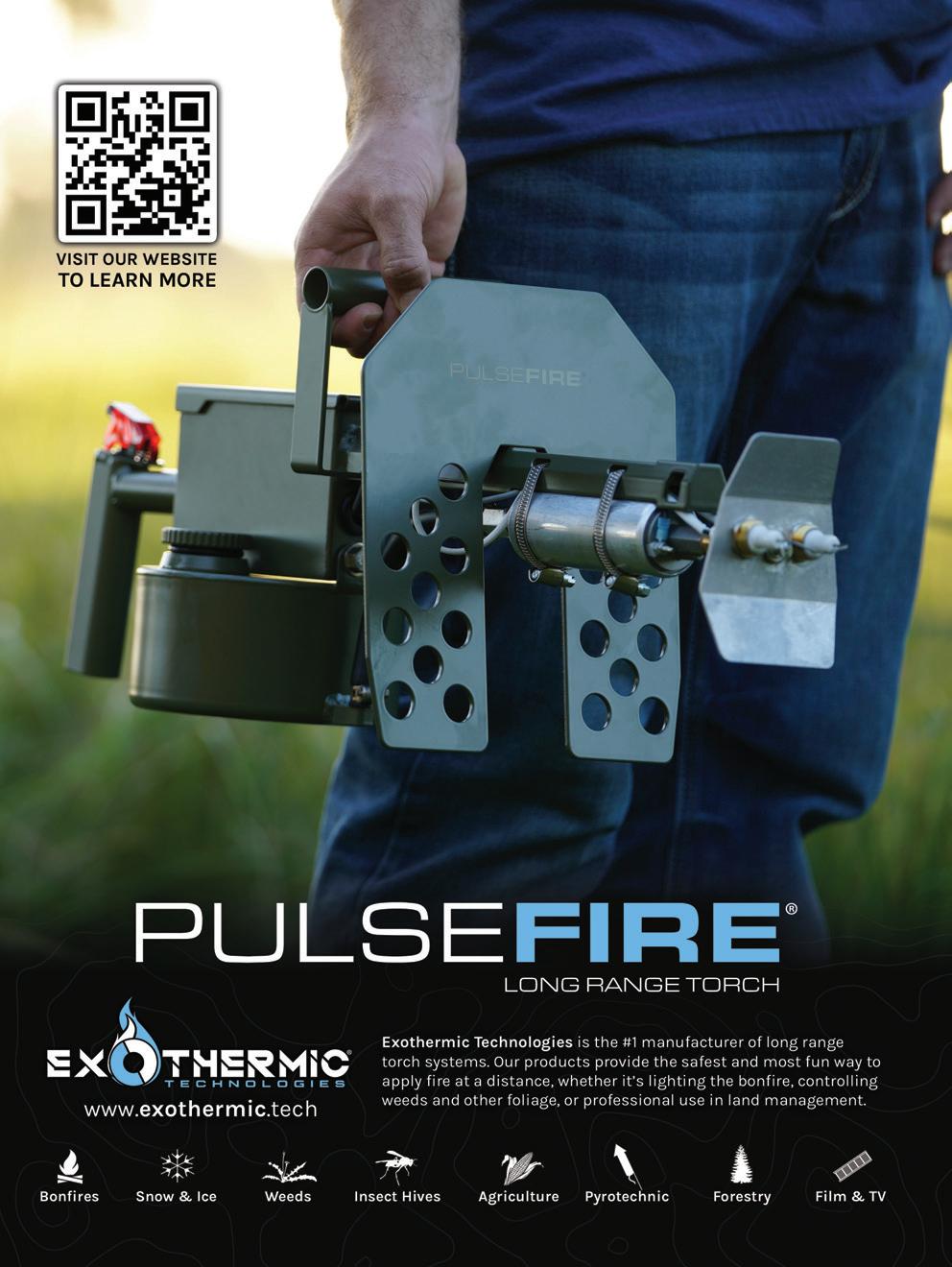
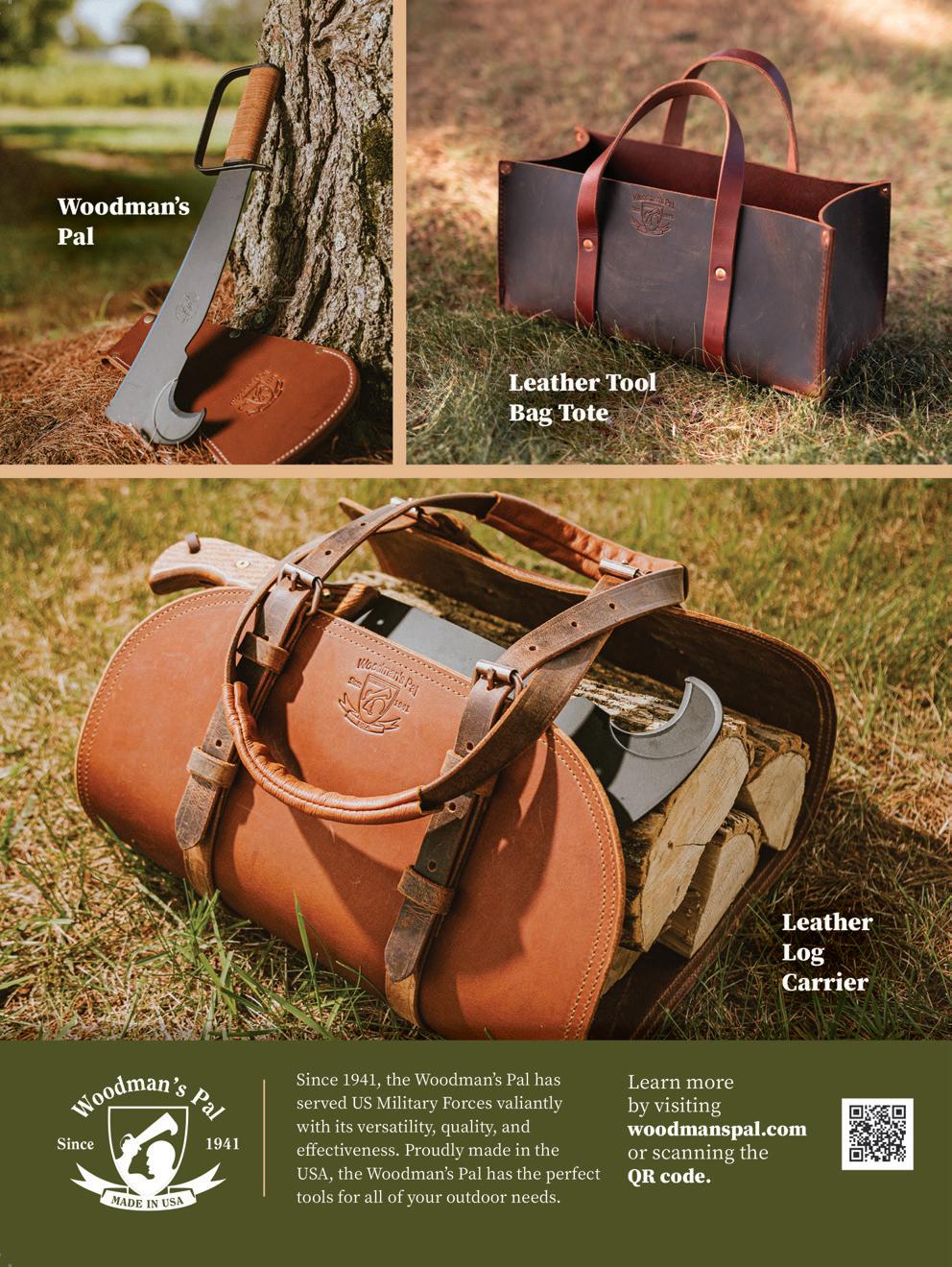
BLACK POWDER
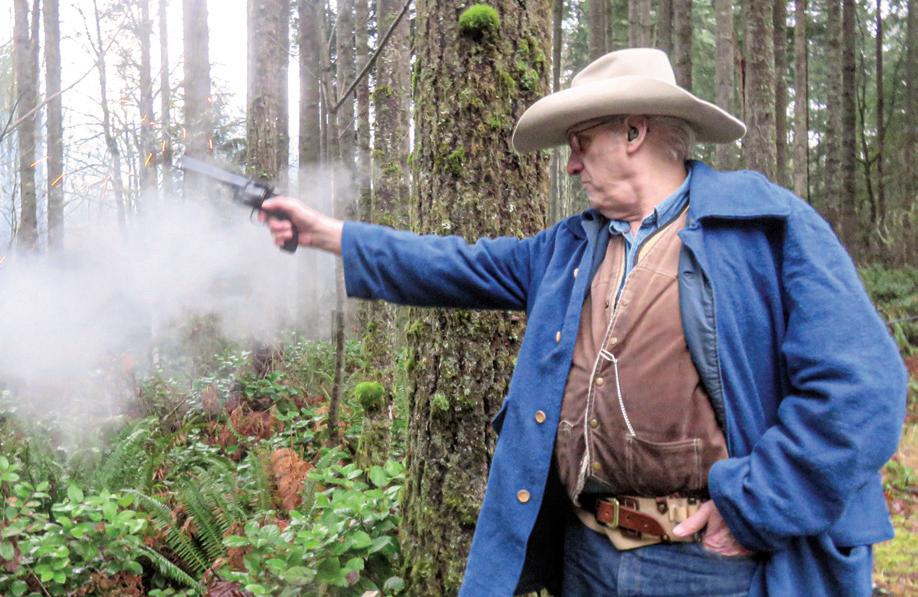
TRYING FOR A '10' ON THE TRAIL
Club's 10-shot Revolver Match 'a good mixture of fun and difficulty' that's only been aced once.
STORY AND PHOTOS BY MIKE NESBITT
I’ve talked about Buffalo Camp many times before. It’s the “buffalo gun” event that my club, the Black River Buffalo Runners, holds annually at the Capitol City Rifle & Pistol Club near Olympia, Washington. Buffalo Camp consists of three competitions – the Little Quigley Match, the Meat Hunt and the Revolver Match – but this time we’ll focus solely

on the Revolver Match. This match is for black powder cartridge revolvers, so it is somewhat unique.
Because not every shooter at Buffalo Camp has a revolver, we do allow muzzleloading pistols and capand-ball revolvers to be used. Some shooters turn in very good scores with muzzleloading pistols, and while capand-ball revolvers have yet to be used in this event, we can certainly expect to see them. The revolver trail at Buffalo Camp has only 10 targets, all hanging
gongs at undisclosed distances, and shooters get just one shot per target. The revolvers must shoot loads using black powder and lead bullets.
Safety is a very important part of our events. We follow the same basic rules that black powder clubs have about the use of cap-and-ball revolvers in similar events. For example, the shooters go to the first shooting station with empty guns, and at that shooting station, the guns’ cylinders can be loaded with all six cartridges if desired.
americanshootingjournal.com 83
Author Mike Nesbitt takes a one-handed shot at a rabbit target during his black powder shooting club’s Revolver Match at their annual Buffalo Camp.
BLACK POWDER

Then the shooter takes their first shot, and after firing that shot, the gun is simply returned to the holster without moving the hammer, not even to a half-cock.
A holster for the revolver is a requirement. Once the gun is in the holster, the shooter can step away from that shooting station and move down the trail to the next target. On arriving at the next target, the shooter
will step to the shooting station for that target before drawing the loaded gun from the holster.
My holster for my New Model No. 3 was made by Oklahoma Leather and purchased from Buffalo Arms (buffaloarms.com). It’s called the California Slim Jim and while it is listed as being good for revolvers with up to 5½-inch barrels, my .44 Special with the 6½-inch barrel fits it

just fine, with a tiny bit of the barrel showing through the open bottom of the holster. The price was about $27. That holster rides on a web cartridge belt made by Tommymaker Custom Leather. Half of the cartridge loops on the belt are made for .44 Special or Russian cartridges, while the other half of the loops will accept either .44-77 cartridges or .50-70 ammo. Based in Oberlin, Kansas, Tommy Ewing (785475-3268) is a one-man shop and his cartridge belts are individually made for each order. He charged me just $50 plus postage for my belt.
TOM WITT JOINED me for the Revolver Match; we shot our revolvers while a few others did their shooting with rifles for the Meat Hunt. Tom carried his ’72 Open Top by Cimarron in .44 Colt caliber. I used my top-break with .44 Russian cases, loaded with 19 grains of Olde Eynsford 2F powder under the 250-grain bullets. Although the Revolver Match scores do not
84 American Shooting Journal // March 2024
Tom Witt shoots at another rabbit, the tiny white spot on the ground at the right.
The belt and holster for Nesbitt’s .44 came from Oklahoma Leather and Tommymaker Custom Leather, respectively. A holster is a necessity for the Revolver Match.








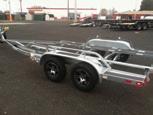


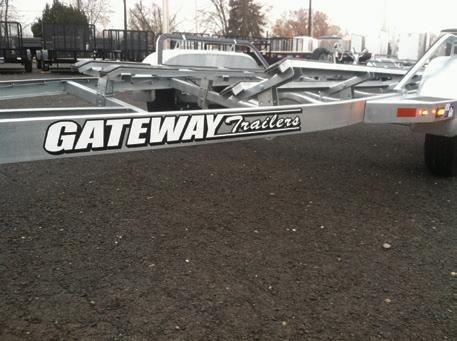
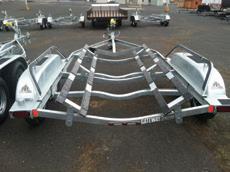

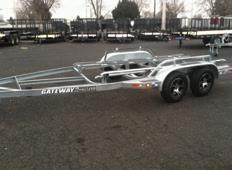
americanshootingjournal.com 85 Reliable Quality Service & Craftsmanship For Over 50 Years! • NMMA Certified • All Steel Weld Frame, Fenders & Bunks • 2 YEAR WARRANTY Custom Boat Trailers 343 Thain Rd., Lewiston, Idaho • www.gateway-materials.com • 208-743-0720
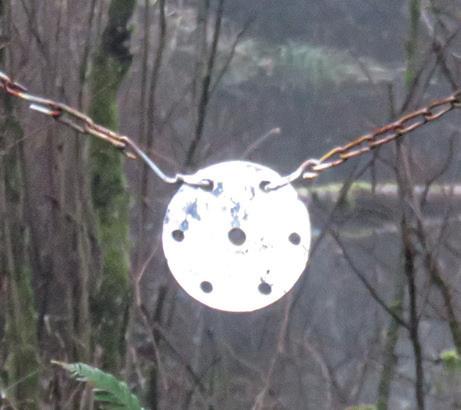
count toward the aggregate at Buffalo Camp, the shooting was certainly fun – although both Tom and I needed practice with our six-guns.
The first target of the match is a rather small oxygen bottle, empty of course, hanging at perhaps only 12 yards. Like I said, the distances are not known. We might consider this to be a fairly easy target to hit, but it is a good way to begin the shooting, in competition or not. Next is a more difficult target, a full-size silhouette of a rabbit – maybe a small rabbit at that – hanging somewhat downhill at 20 or 25 yards. To add to the difficulty, this target must be fired at while using a one-handed hold on the six-gun. I learned, after missing this target, to hold at six o’clock or I’ll shoot over.
Third is a squirrel silhouette hanging in a tree. This hangs closer than the rabbit and we can resume shooting with our usual two-handed hold. Tom and I both “made meat” on the squirrel. Fourth is a tougher target, another rabbit. Four of the 10 hanging gong targets in the Revolver Match are targets that are also shot at with rifles, the “camp guns” for the Meat Hunt. This rabbit is the first one. It must be out there about 30 yards or more, but with a two-handed hold on the .44, it wobbled nicely after my shot.
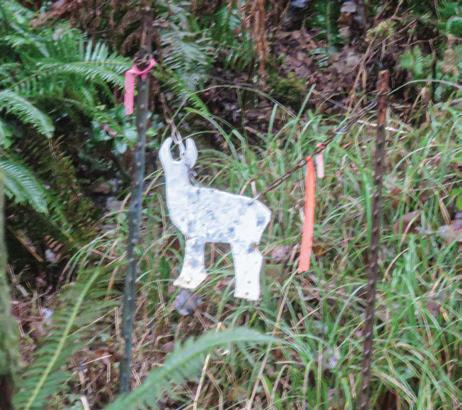
Our fifth target for the revolvers is a crow at maybe 25 yards. This silhouette is much wider than it is tall, so again, shooters should take a six o’clock hold in order to hit it. The crow is a target that gets missed quite often. Target six is a dandy. What we call the minimoon, it is a circular plate of steel hanging between two trees, at maybe 15 yards. Like the rabbit, the second target, the mini-moon must be shot at while holding the revolver with one hand. While Tom and I were doing our shooting, I told him I would aim for the hole in the center. I missed the hole, hitting the mini-moon next to the hole at four o’clock, but my hit was close enough that Tom knew I was trying.
The seventh target is another that is shared with the rifles, an antelope silhouette at about 35 yards and down in a ravine. Back to using a two-handed hold and a good hit was made. Target eight is a black bear silhouette that makes for an 80-yard shot. Again, this target is shared with the rifles and when shooting offhand, it’s a rather challenging shot, even with the rifles. On this target, I learned to hold right along the top of the back. If you hold over the target, you shoot over the target. And this target is far enough away that the report of the revolver and the sound of the bullet’s impact are
certainly separate; you must wait until you hear the hit.
The ninth target is a fairly large disc – another moon, you might say. This is about 25 yards away and it is usually a trade gun target, for use with muzzleloaders at our rendezvous. With the handguns, we shoot at it with a two-handed hold and it is not a difficult target to hit. But target 10, the chicken, is difficult. This is the last target for our Revolver Match at Buffalo Camp and it is also shared with the rifle shooters in the Meat Hunt. It took me three years to get a scoring shot on this target in competition. On this day, I hit the chicken on my first and only try, but this was for fun and not in competition.
TOM AND I certainly did have fun shooting our revolvers on the trail. My target-by-target description of our Revolver Match, I hope, shows a good mixture of fun and difficulty, and I believe it is more fun than difficult. But to focus on difficulty just a bit, this 10-shot Revolver Match has only been “aced” one time. We shot this same course of fire in the Revolver Match for five years before anyone made good, witnessed hits on all 10 targets. I won’t elaborate on who that shooter was, mainly because I’m not sure that I could do it again. ★
86 American Shooting Journal // March 2024
BLACK POWDER
The antelope target, at 35 yards, is used for both the Revolver Match and for the Meat Hunt.
The author missed the ¾-inch hole in the center of this mini-moon, but still made a good hit on the target.
